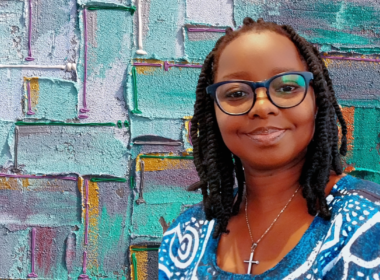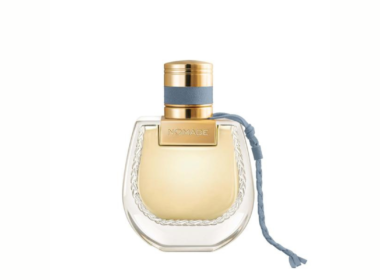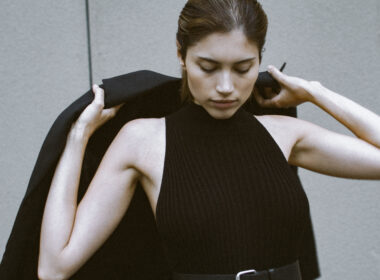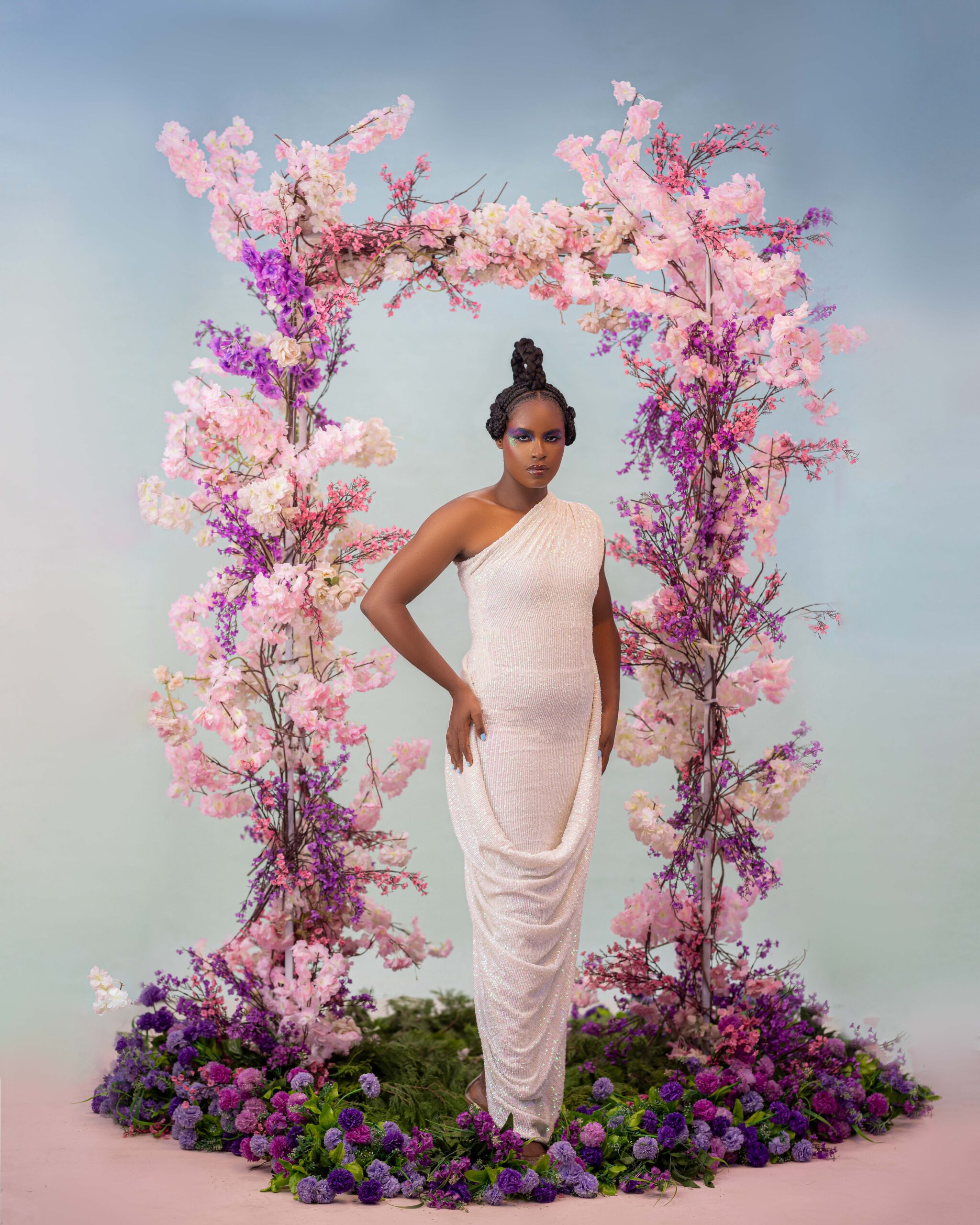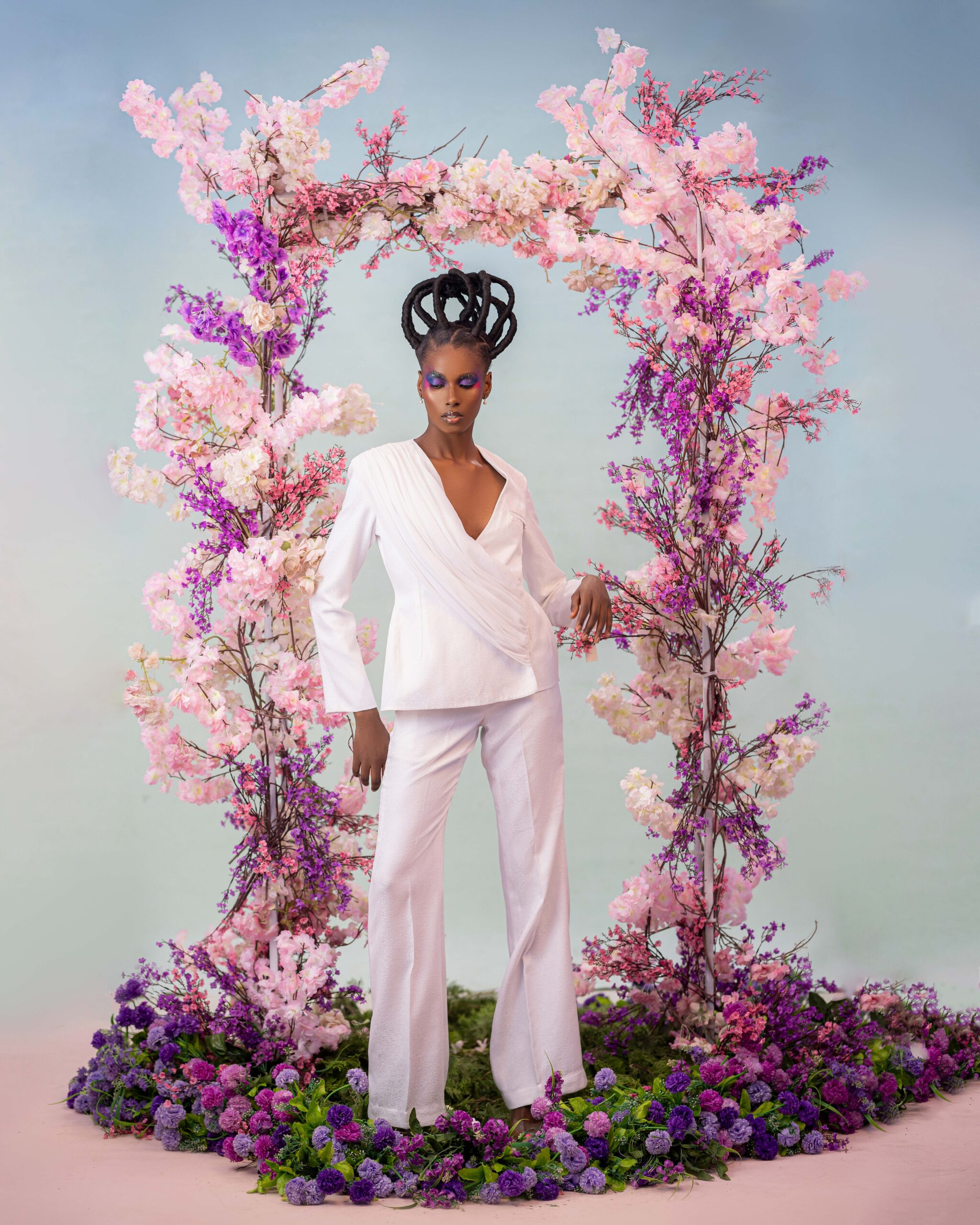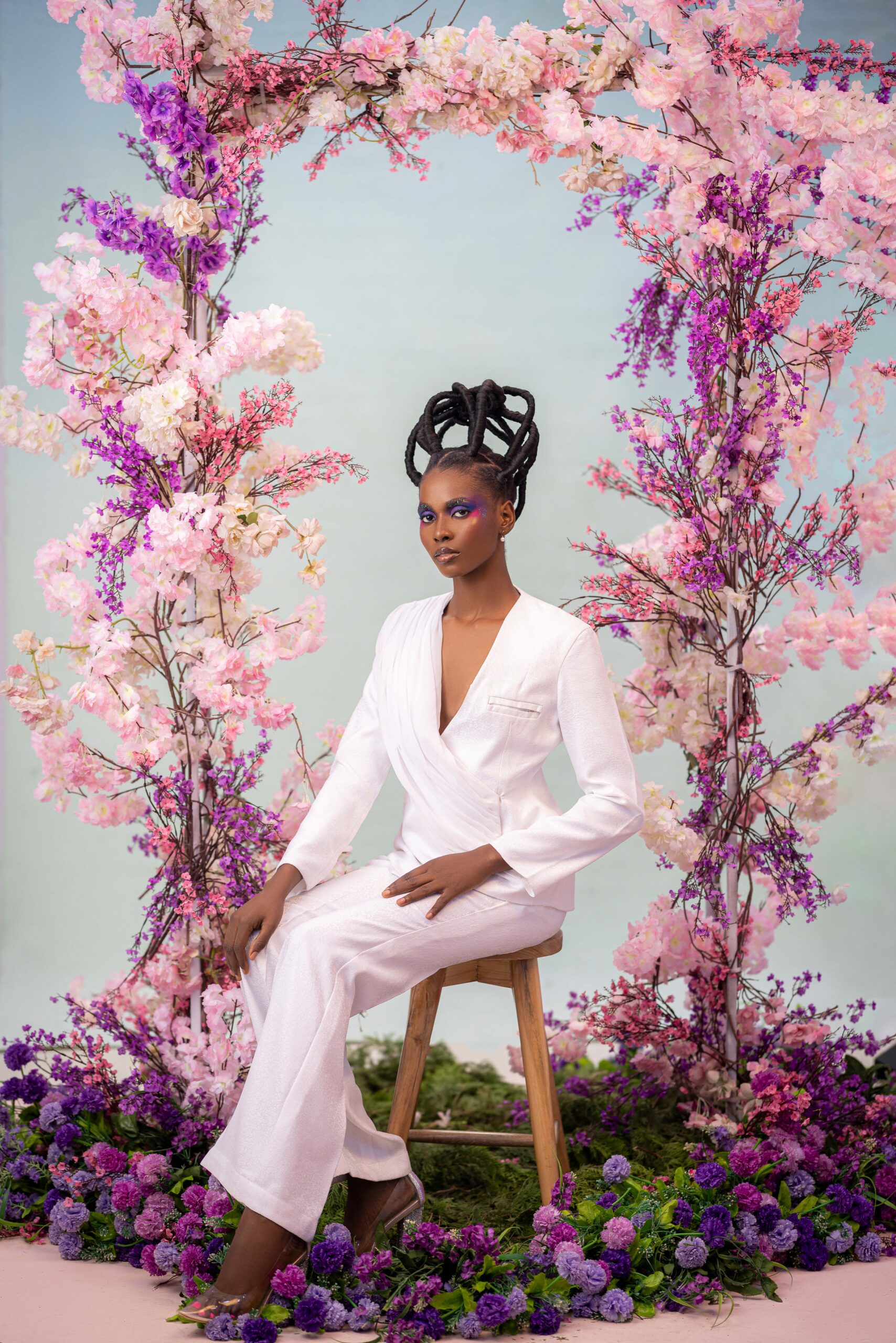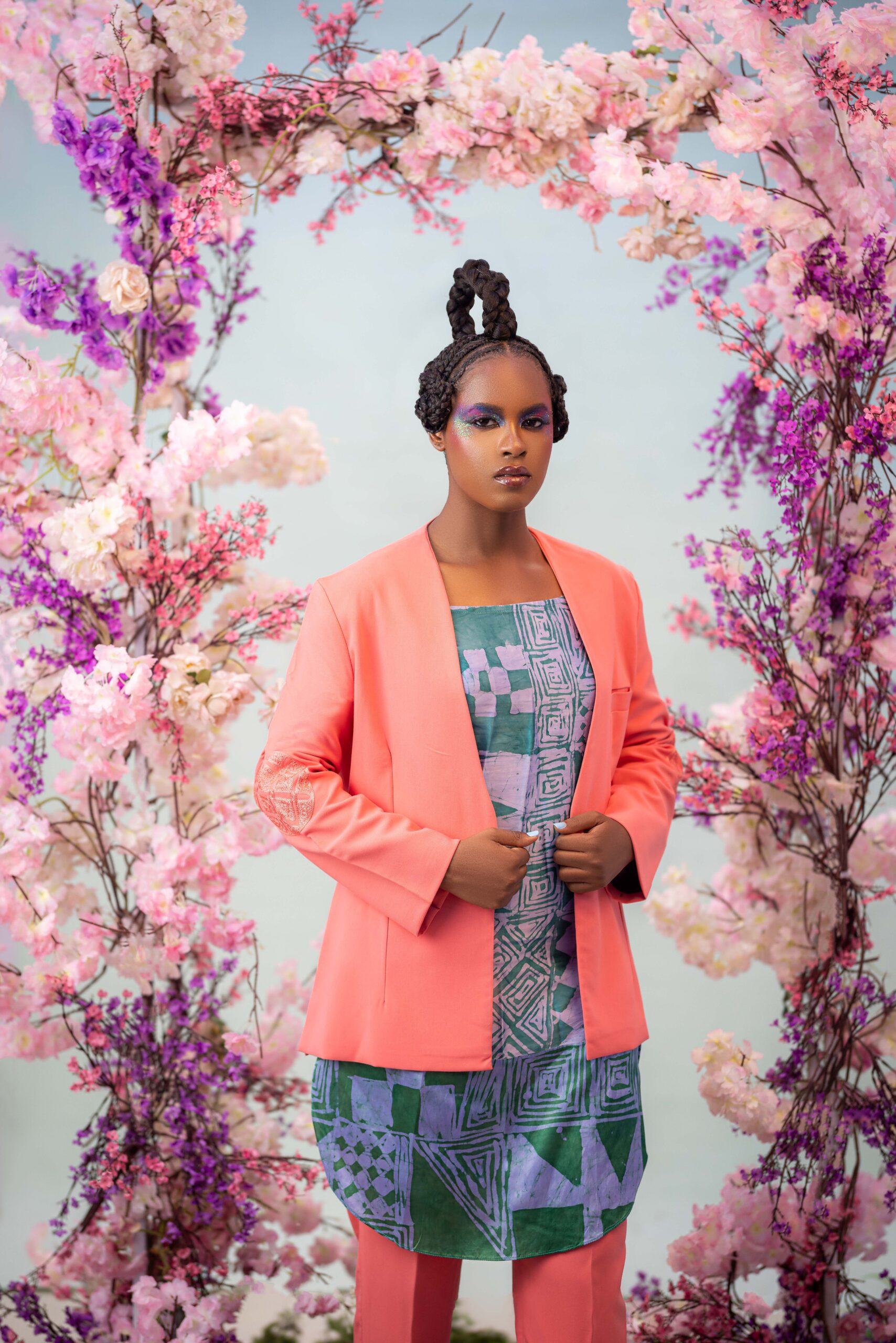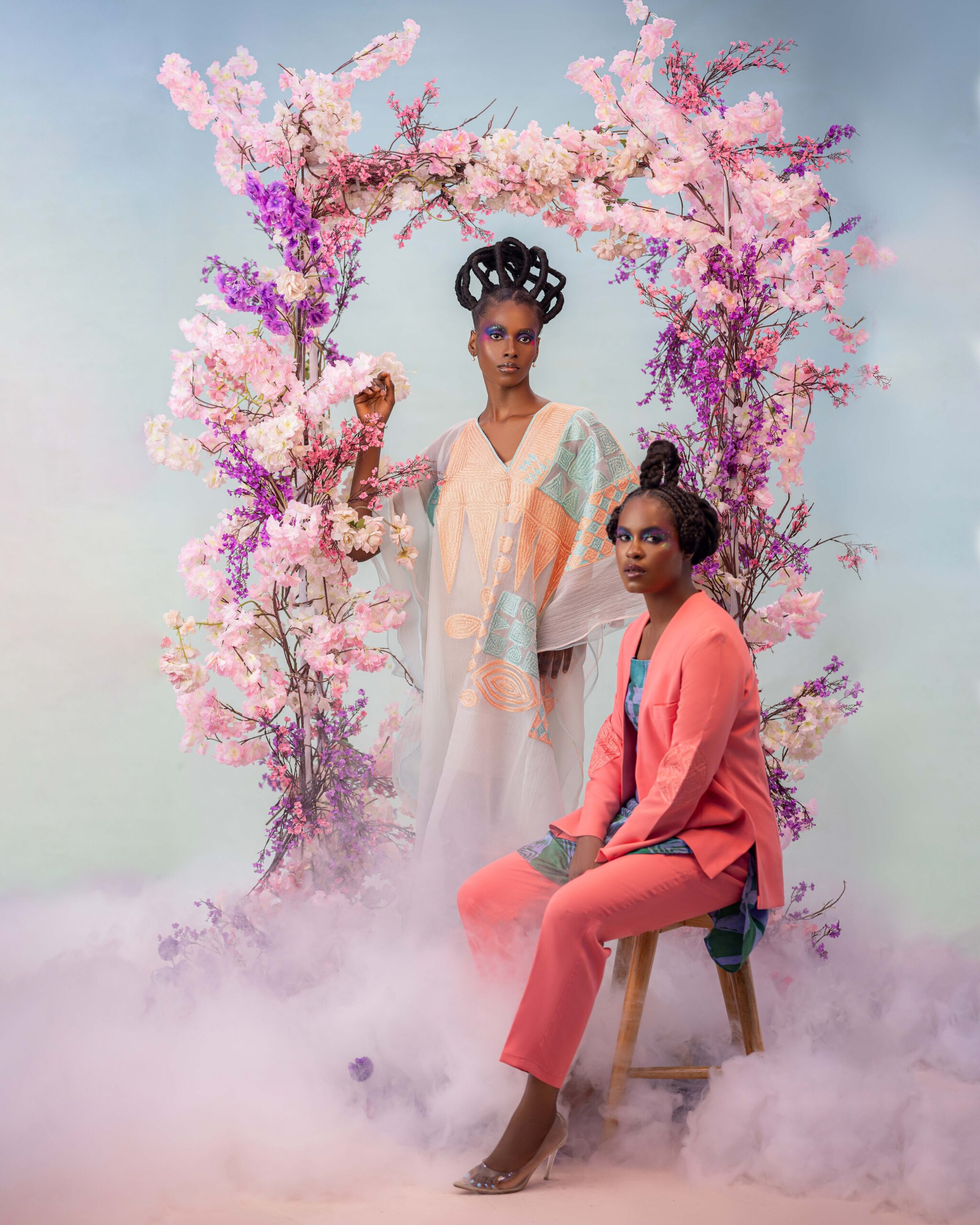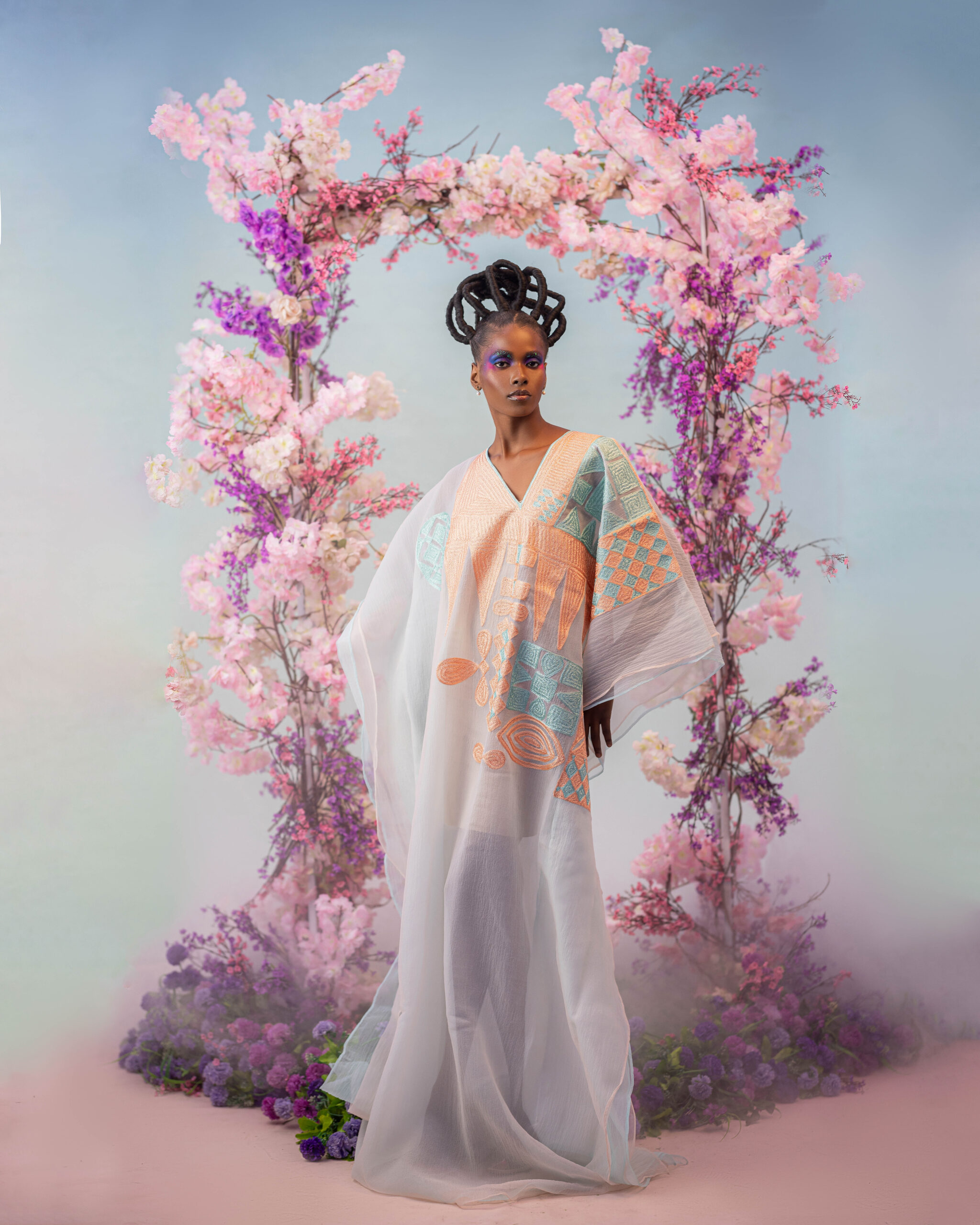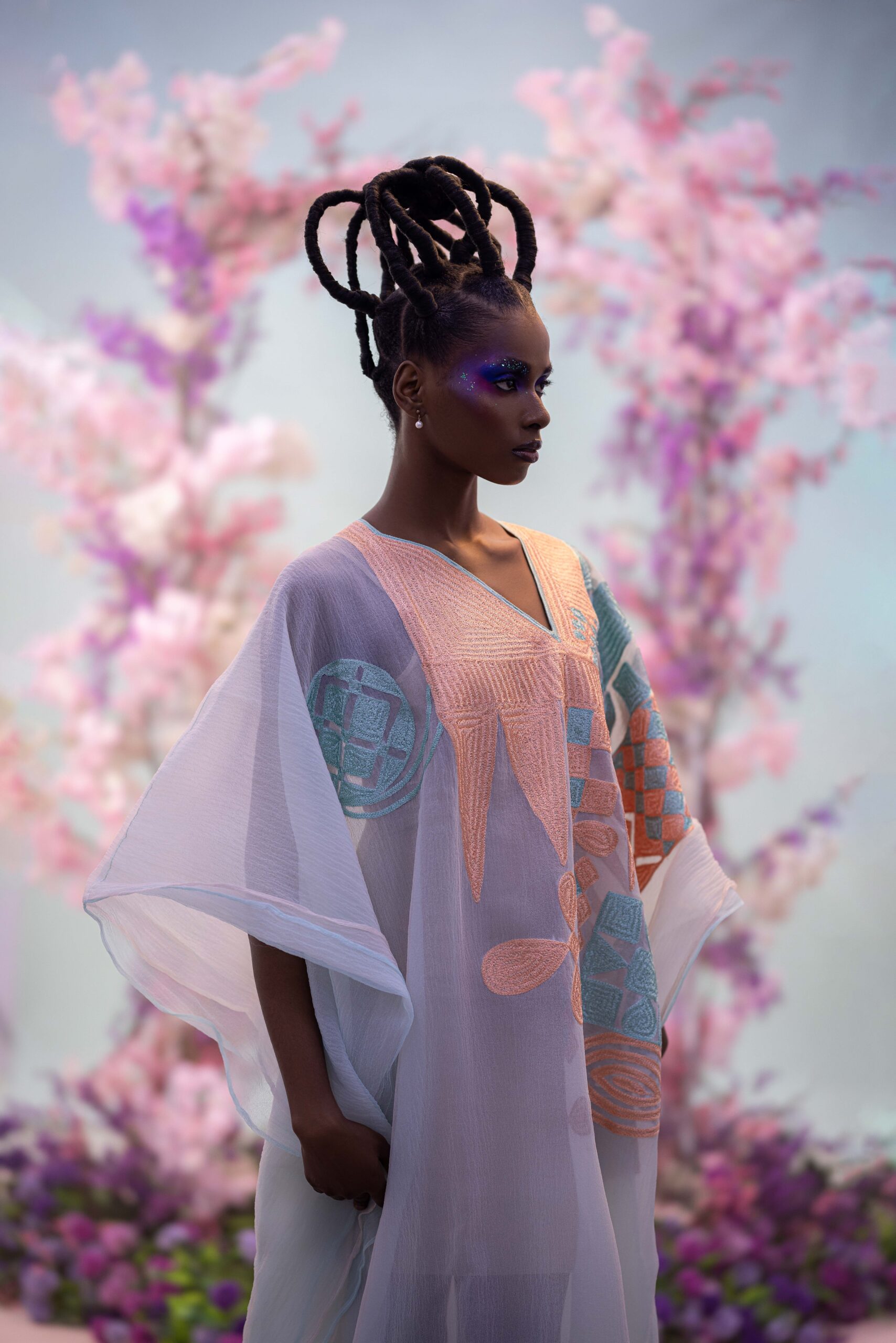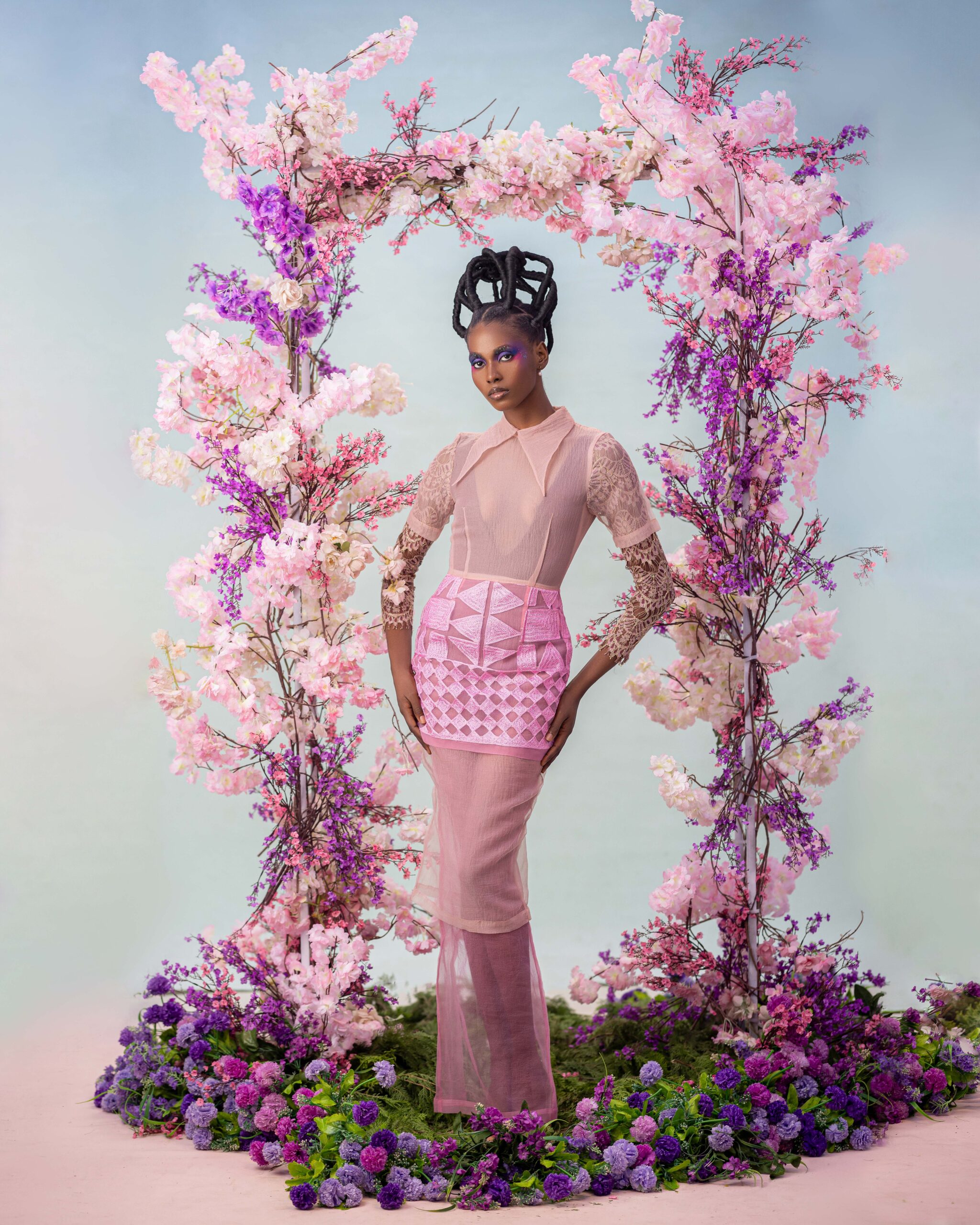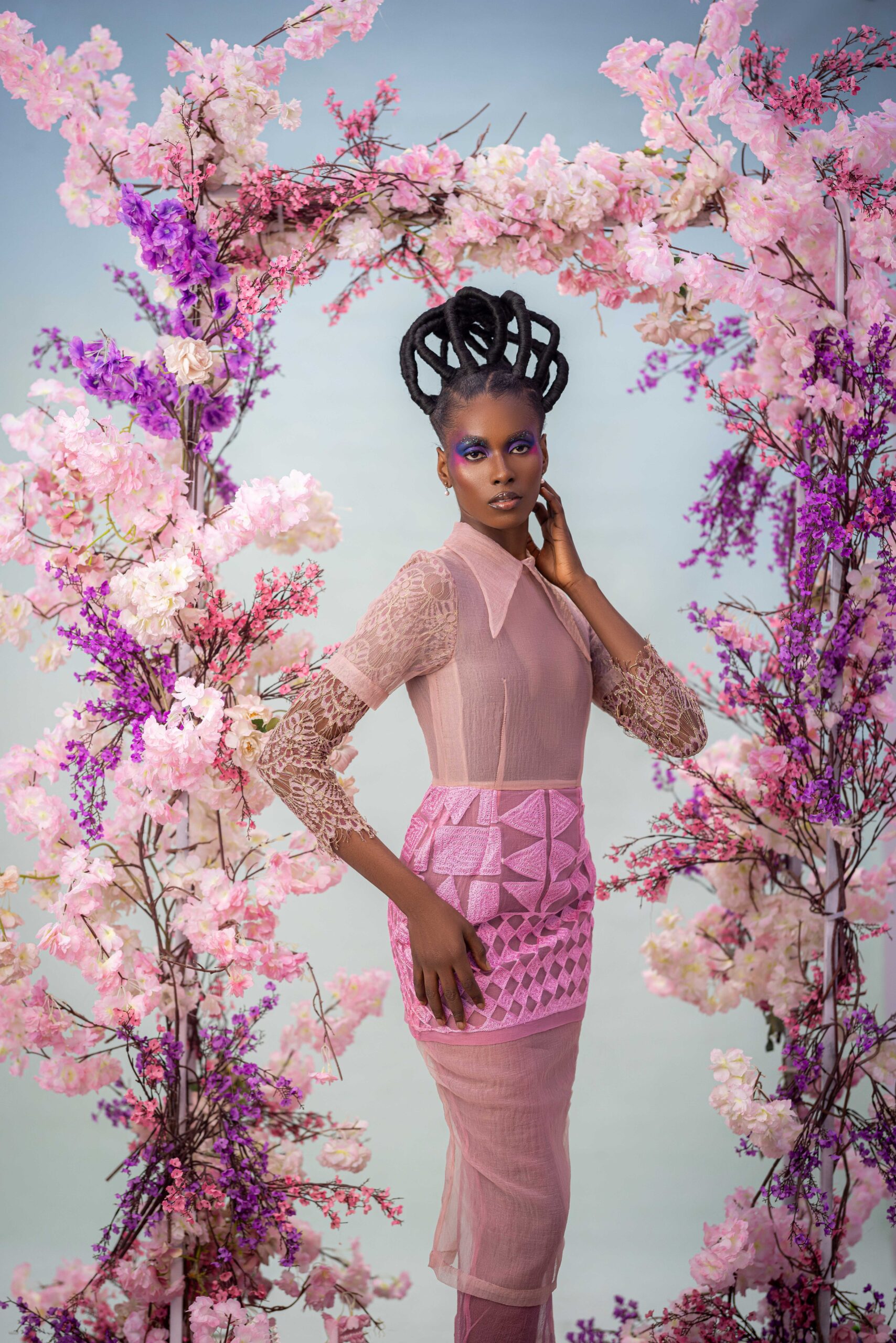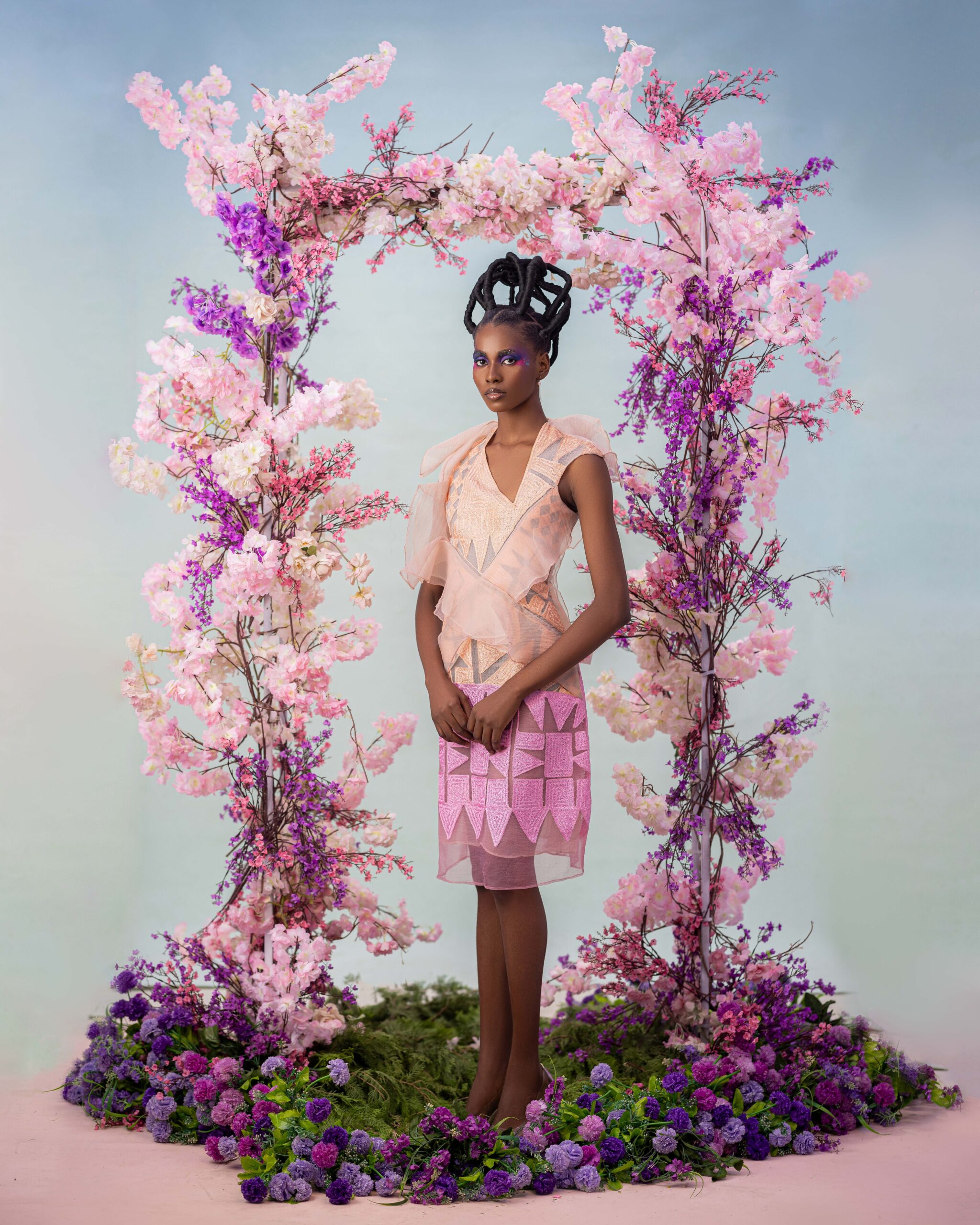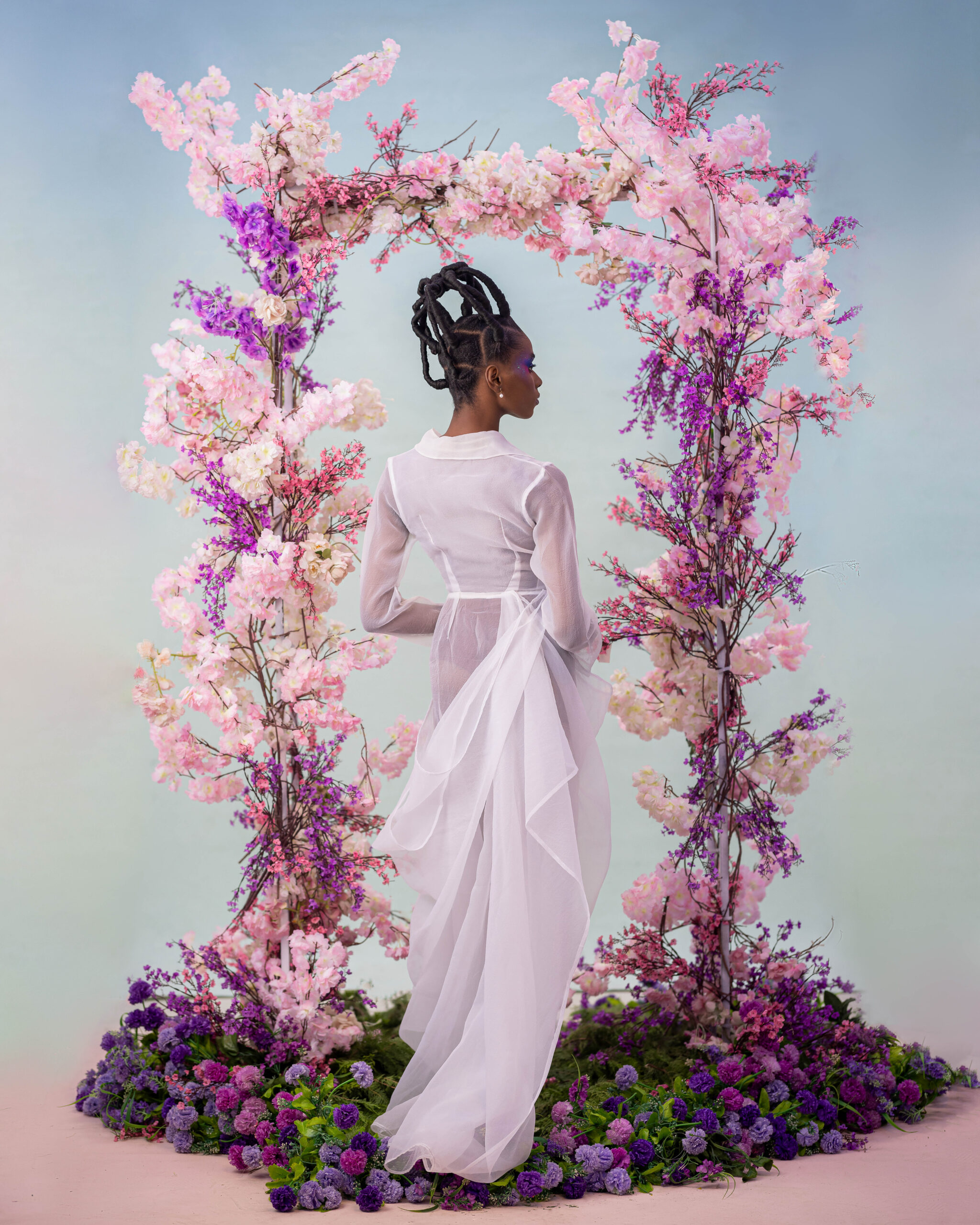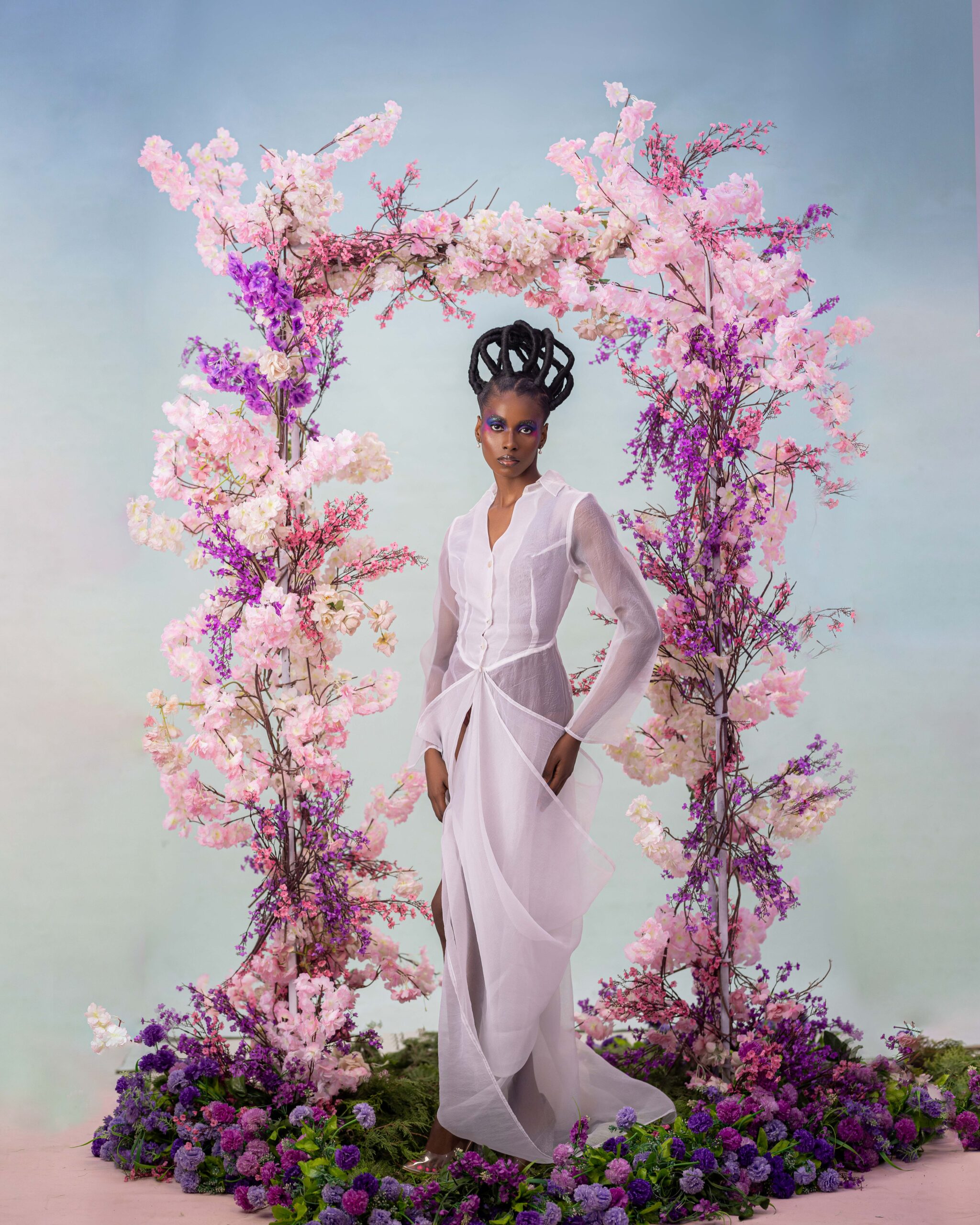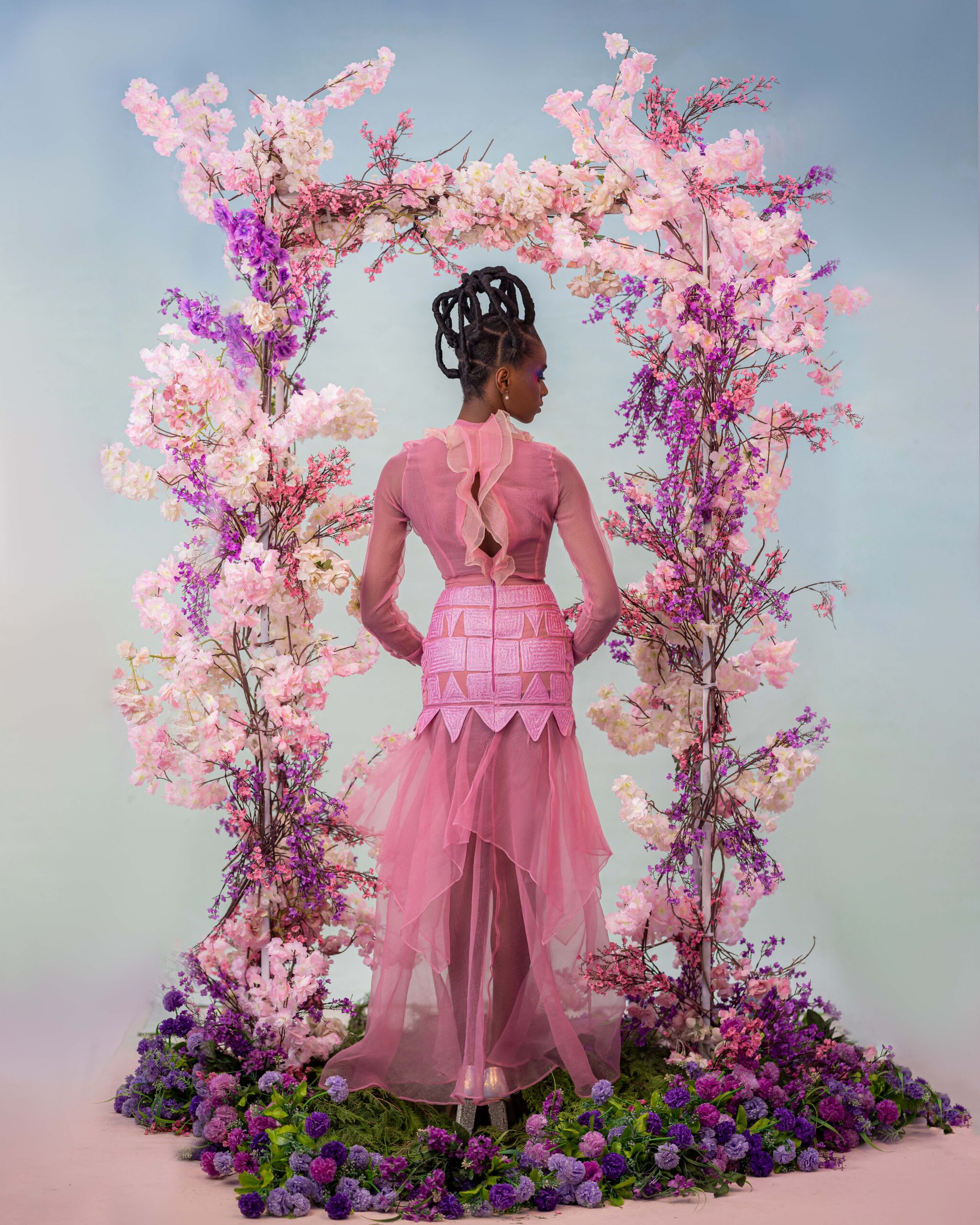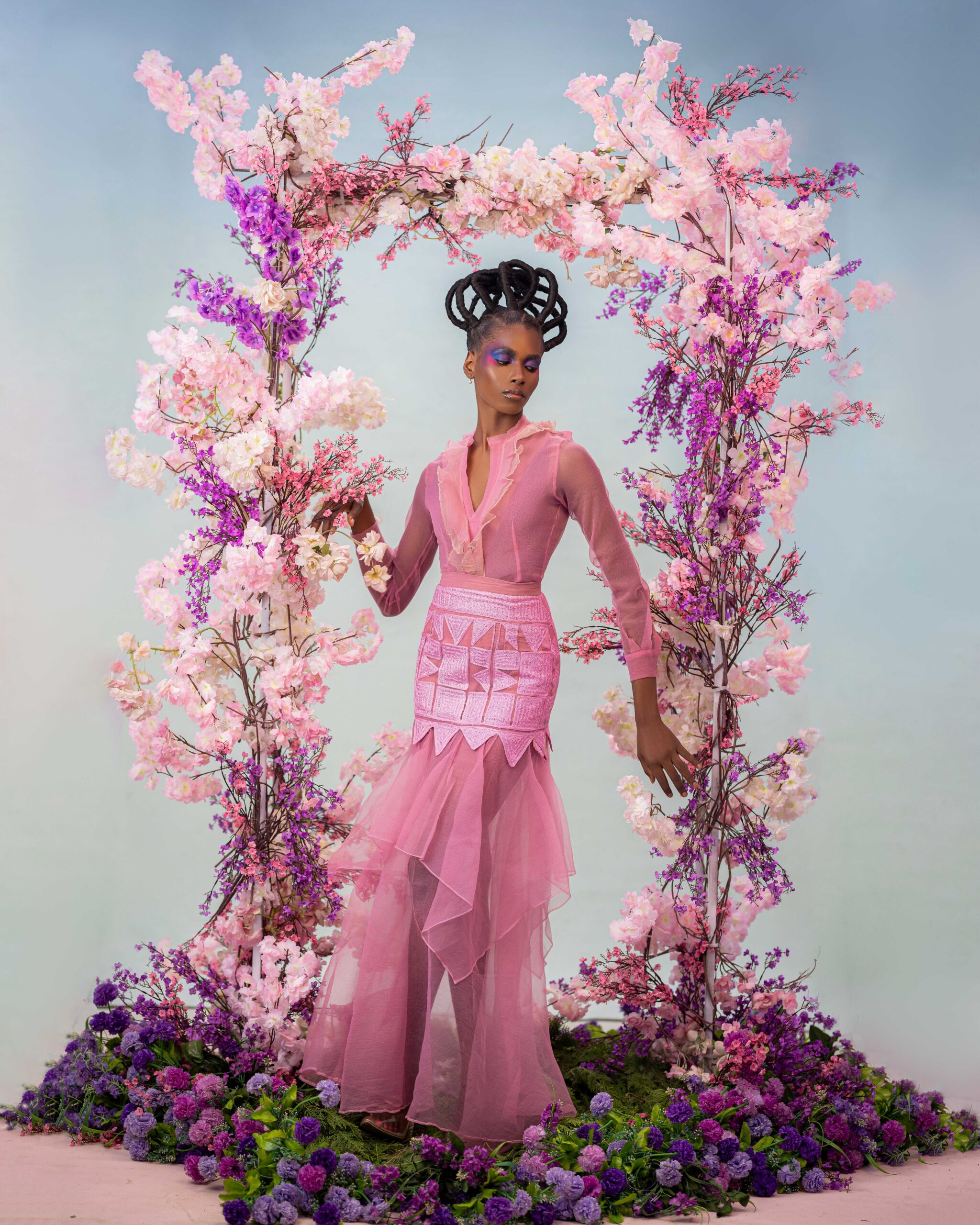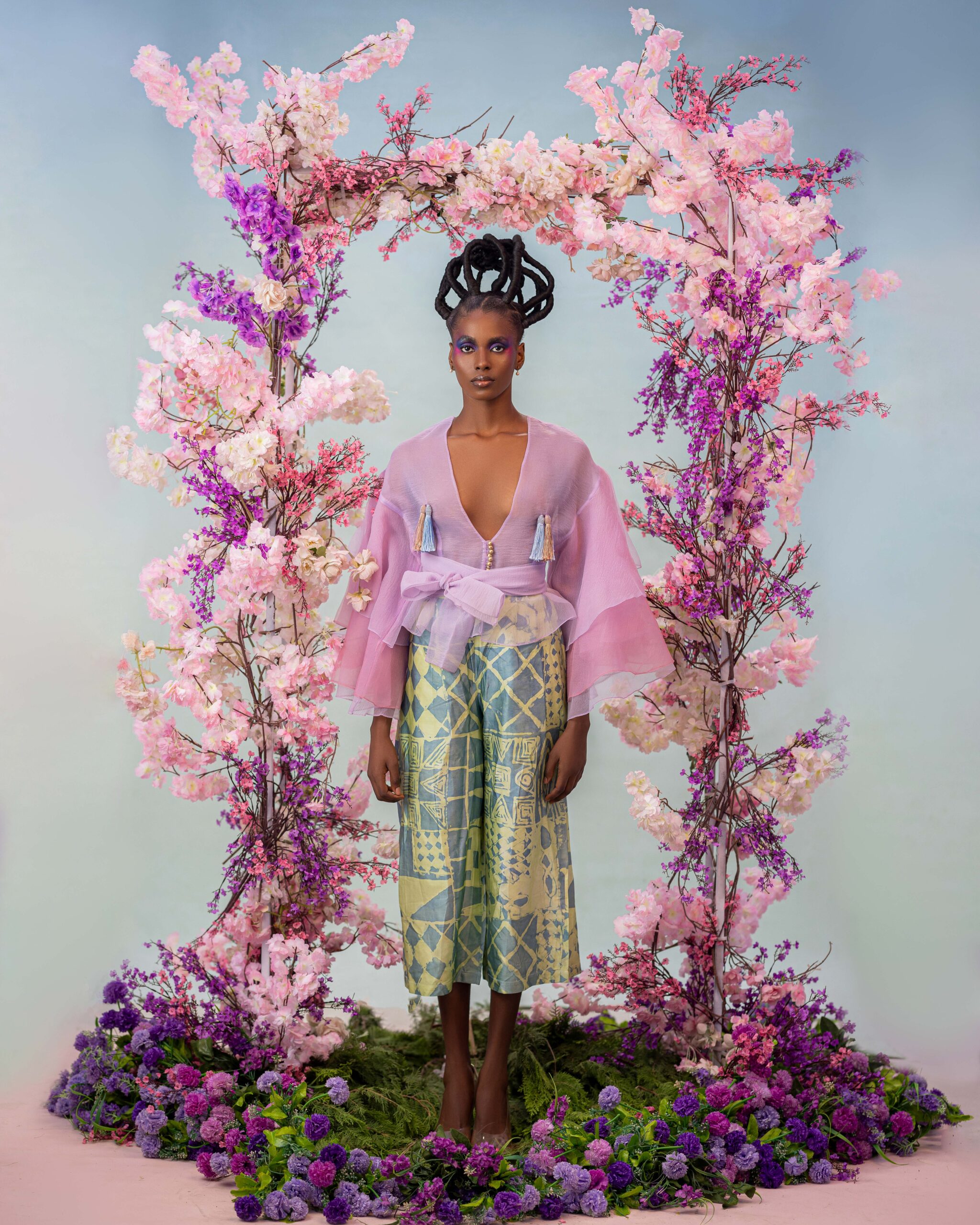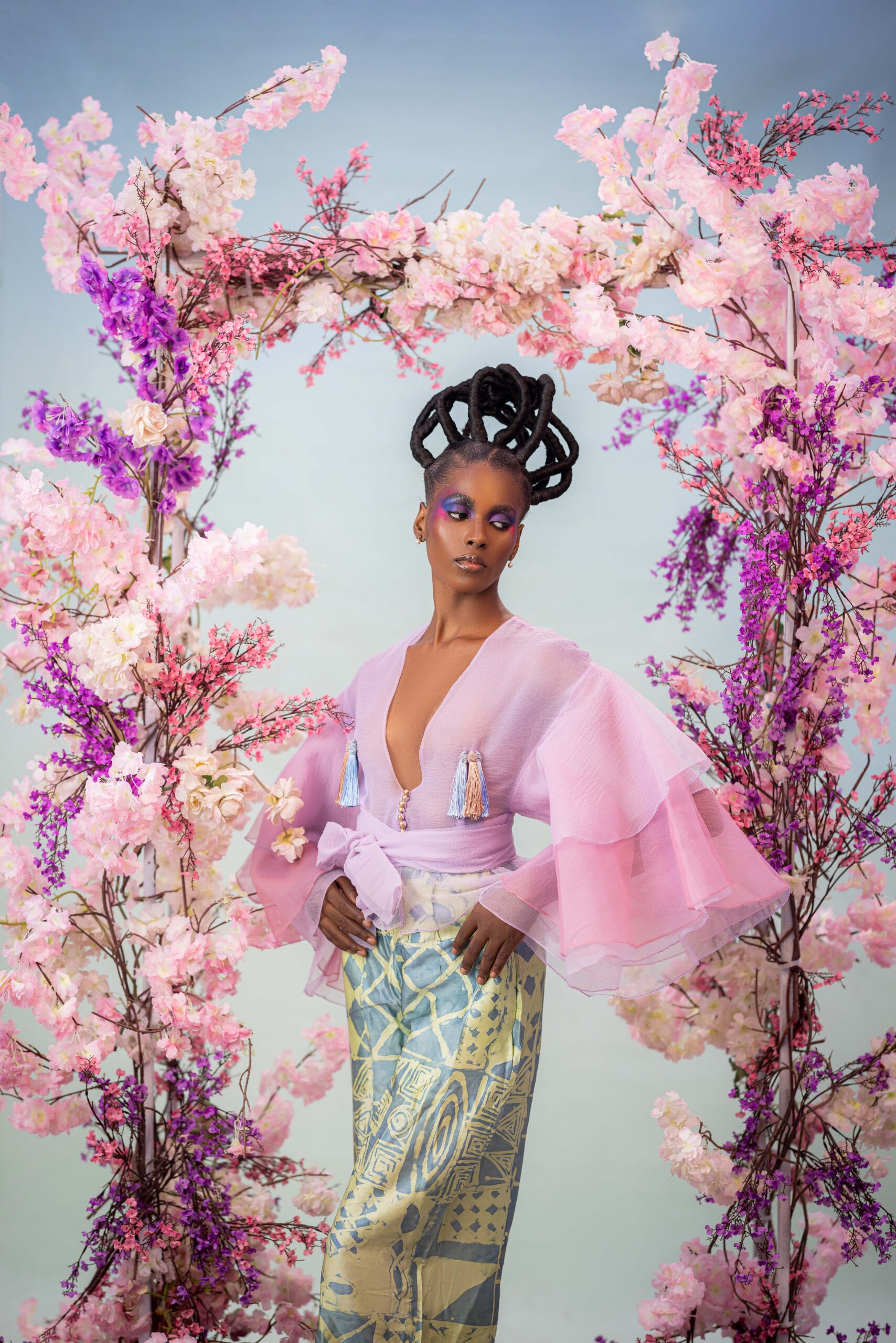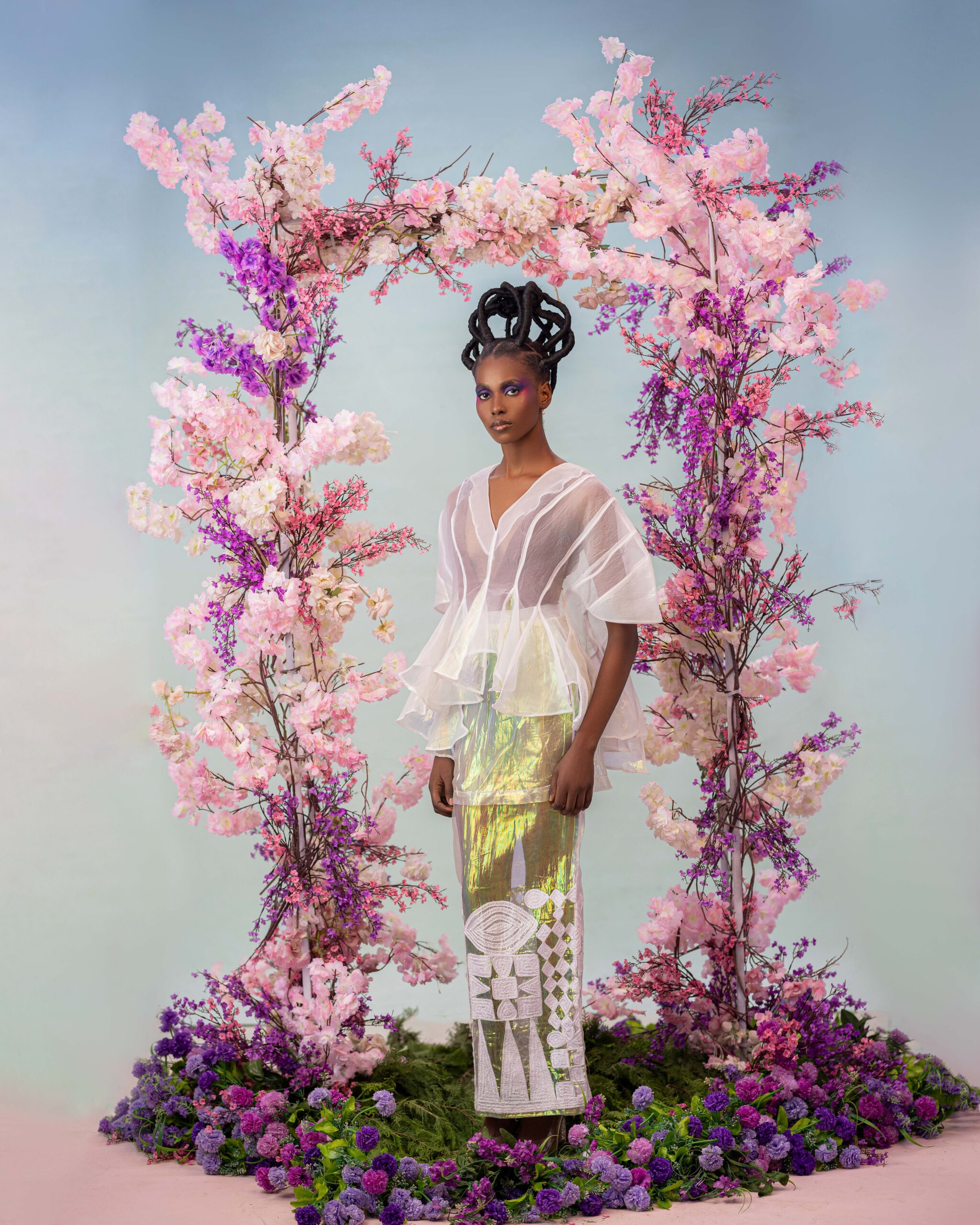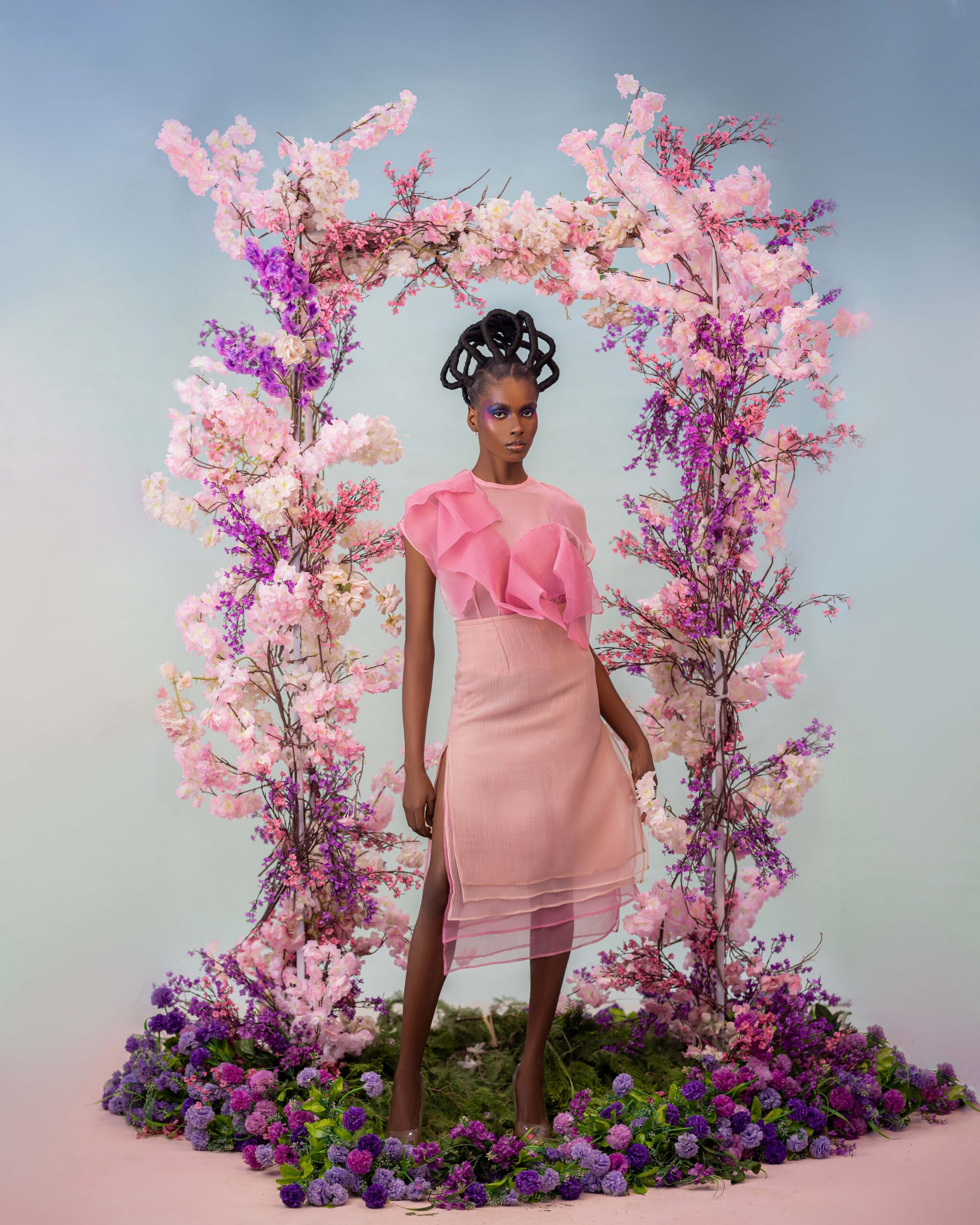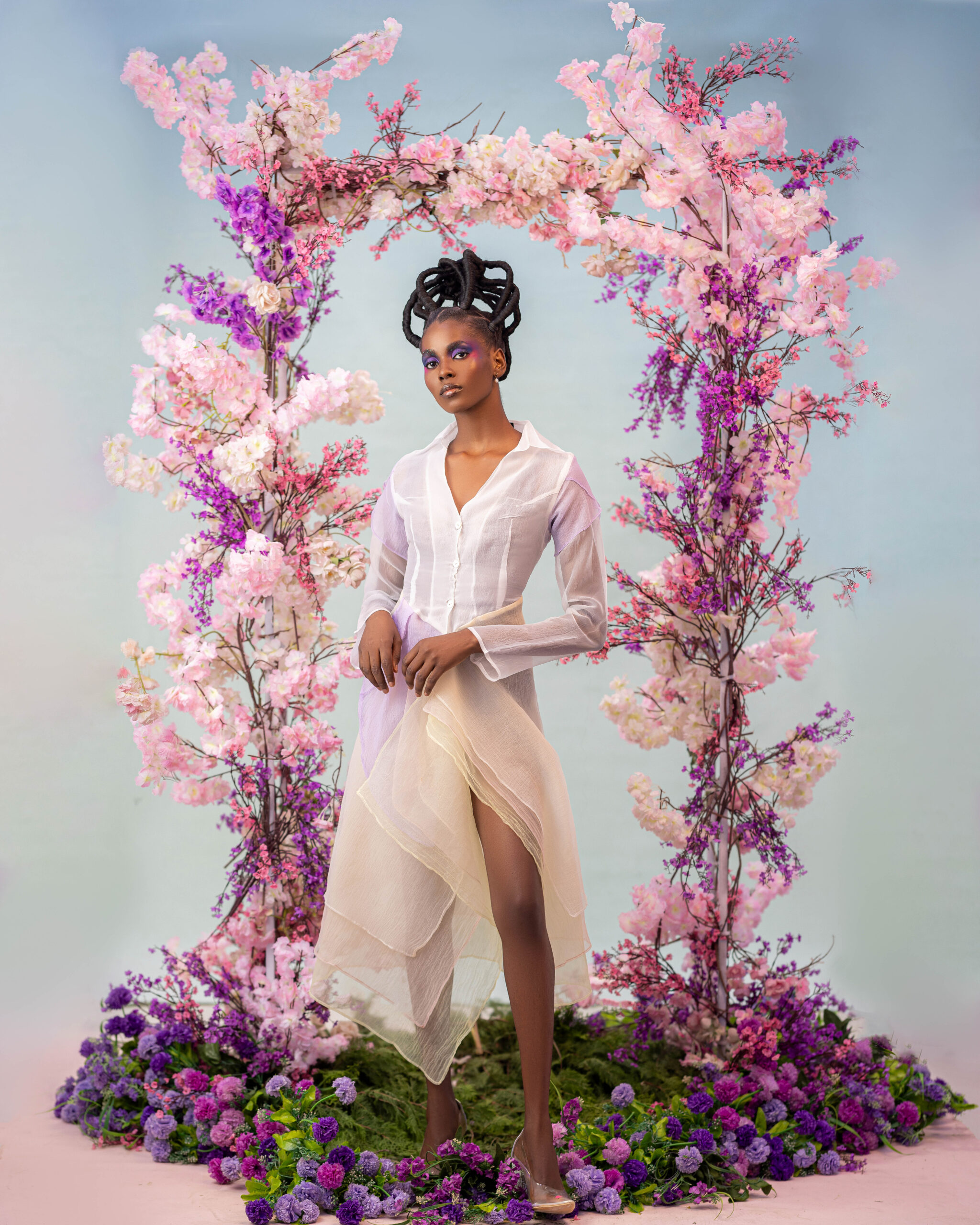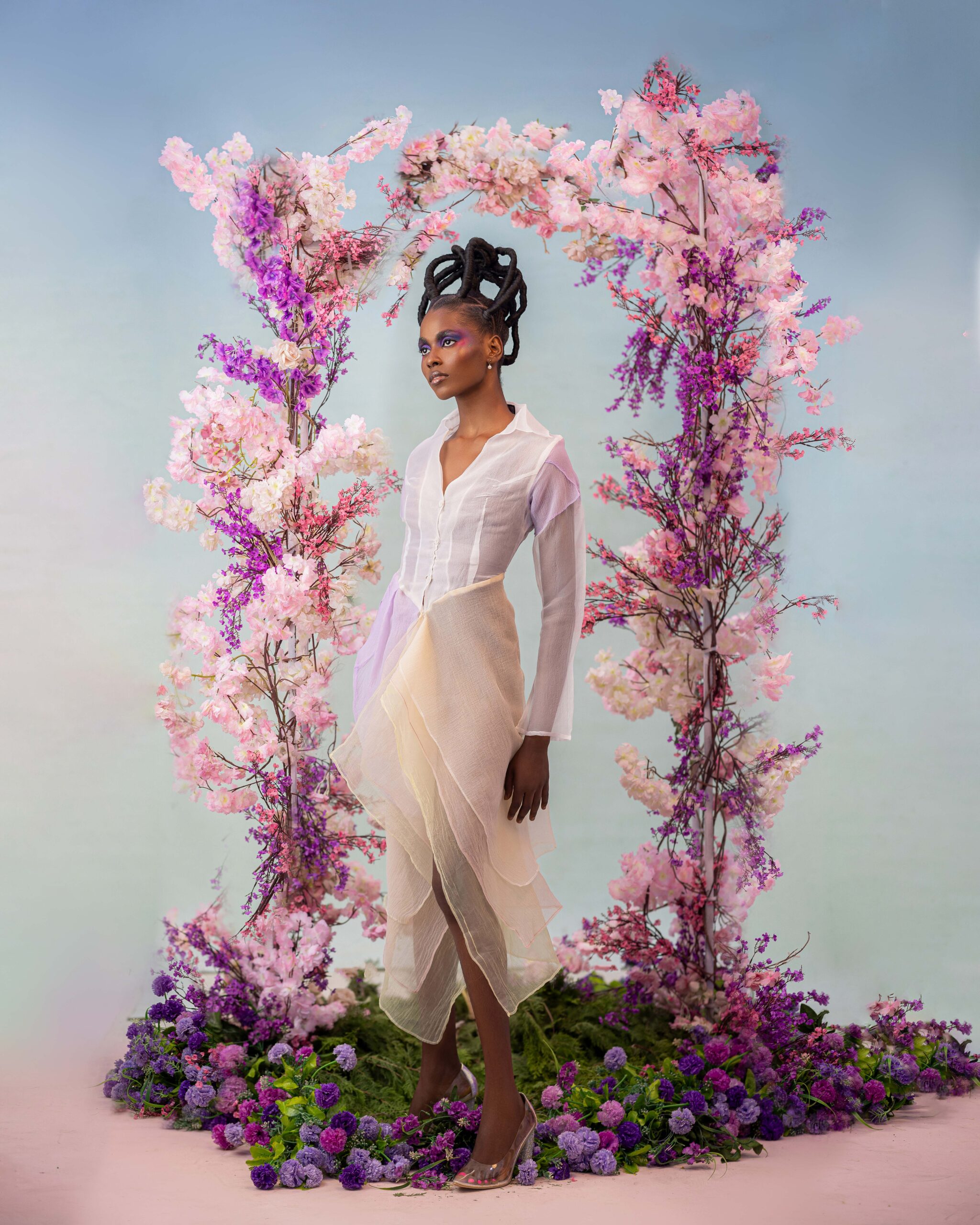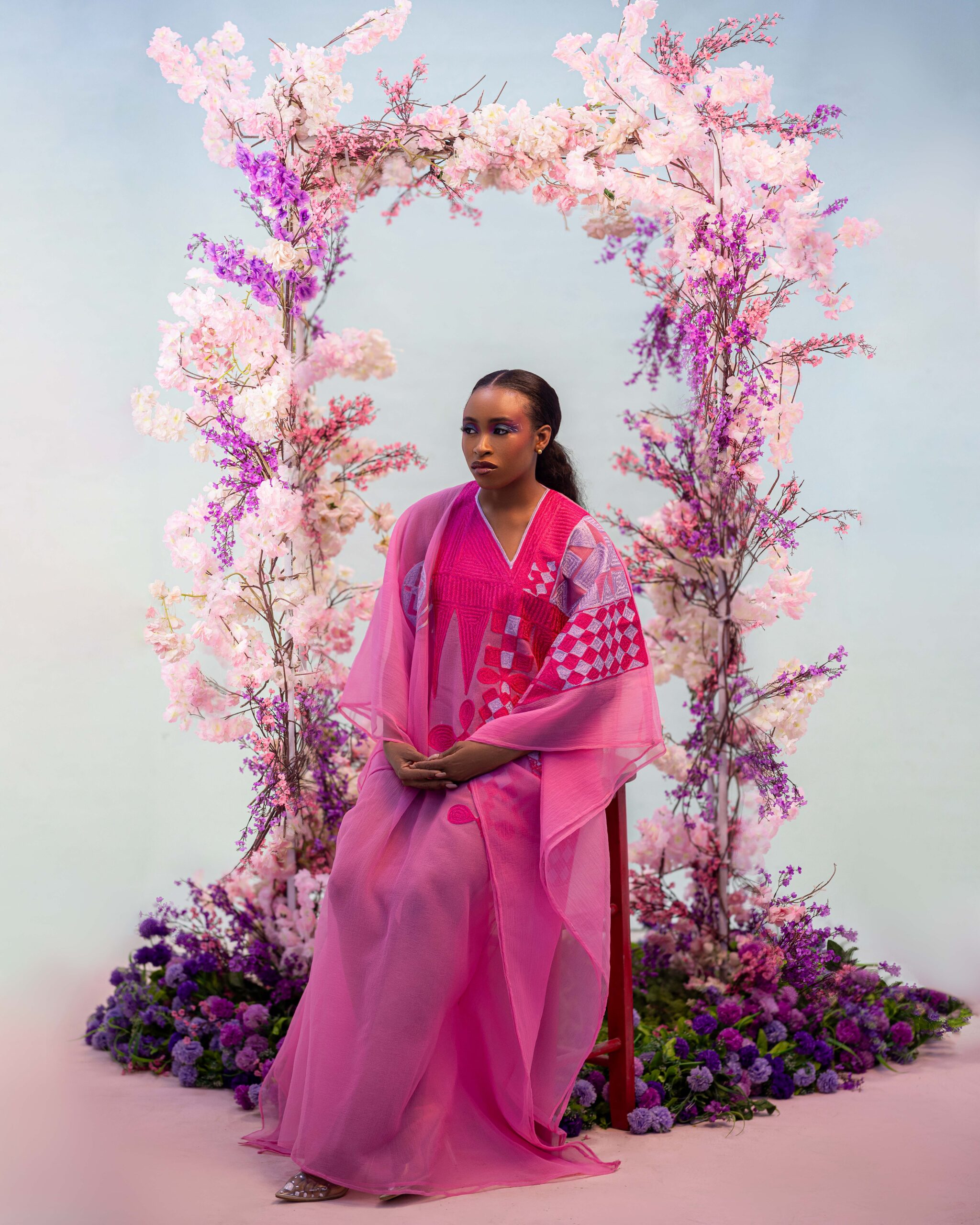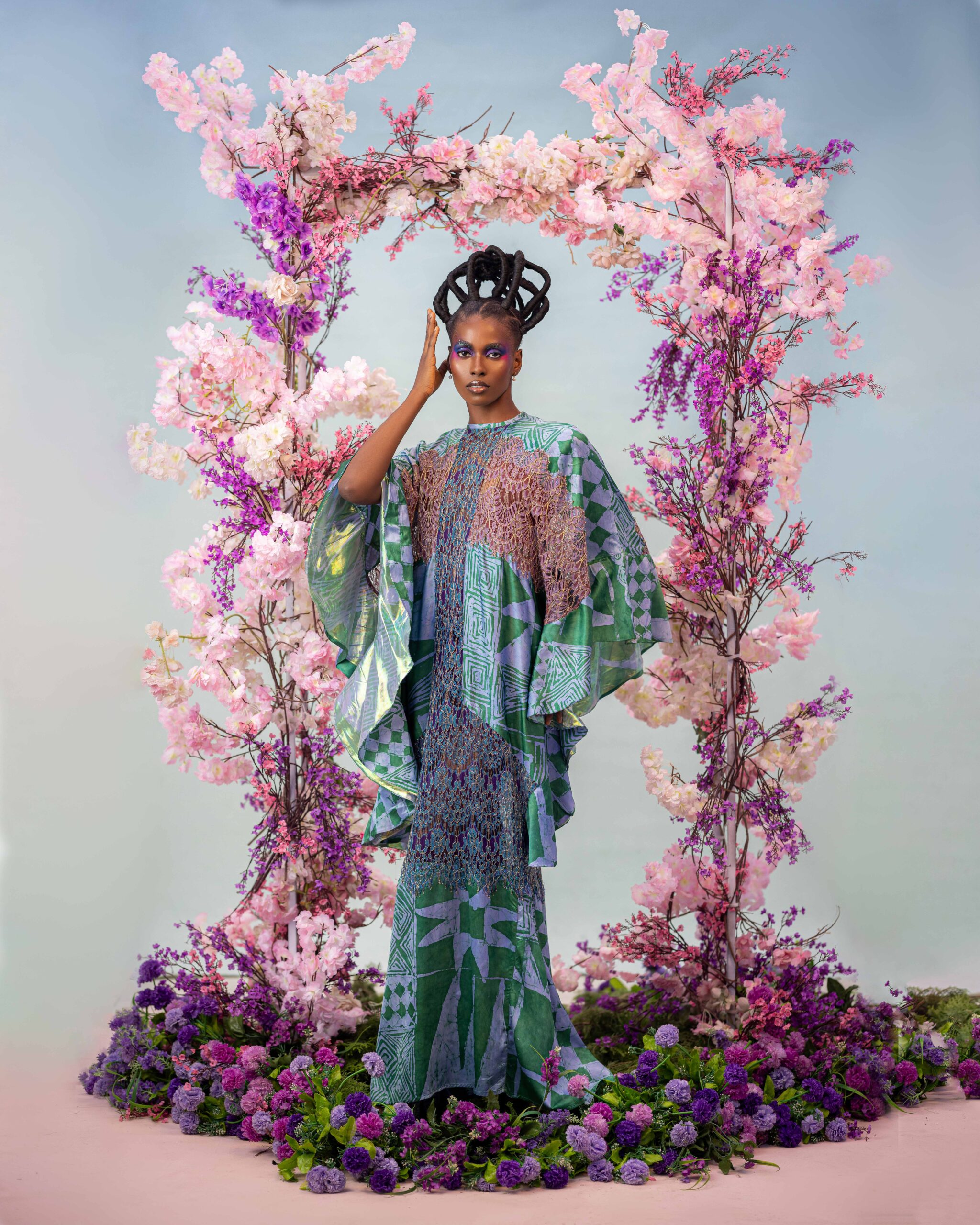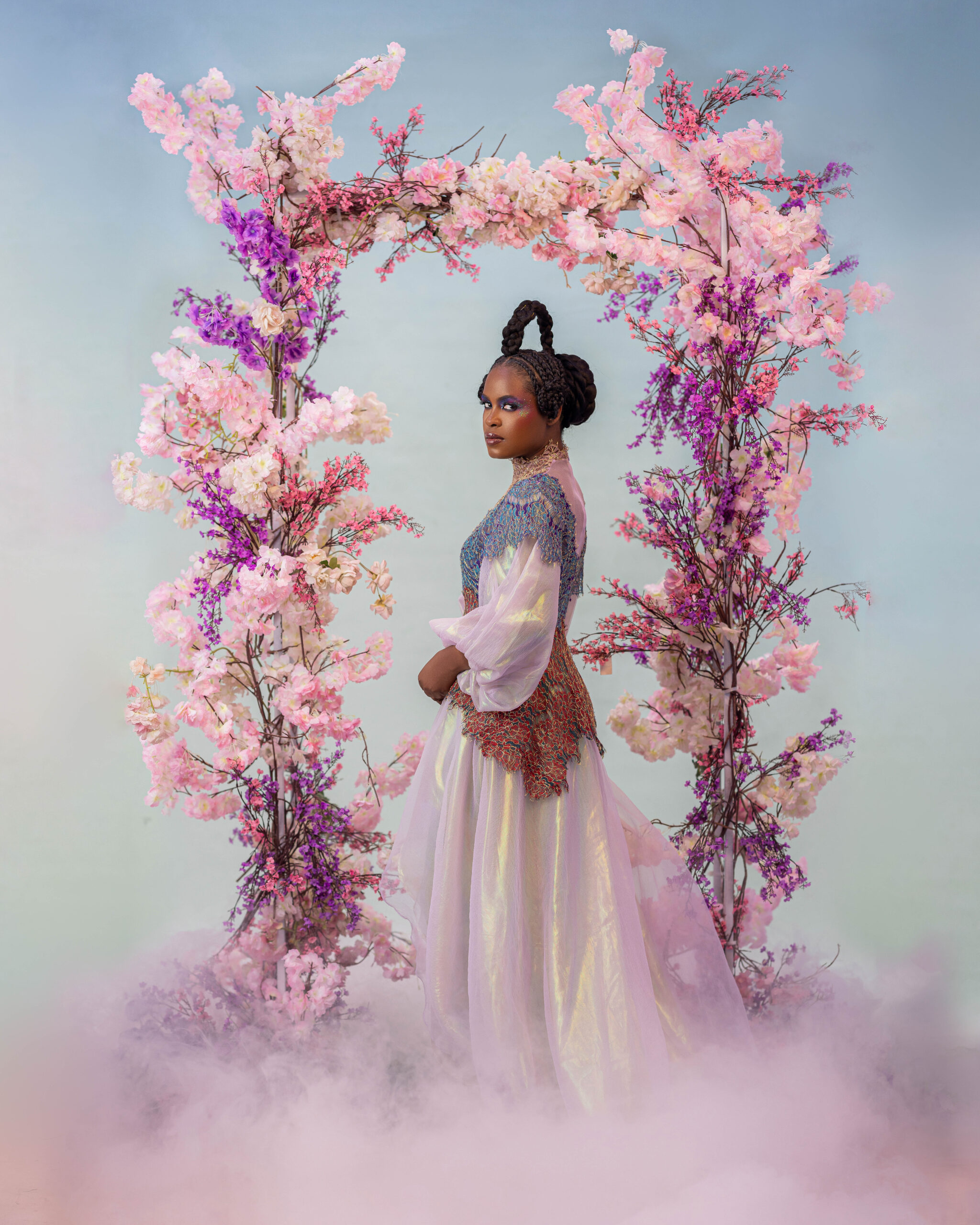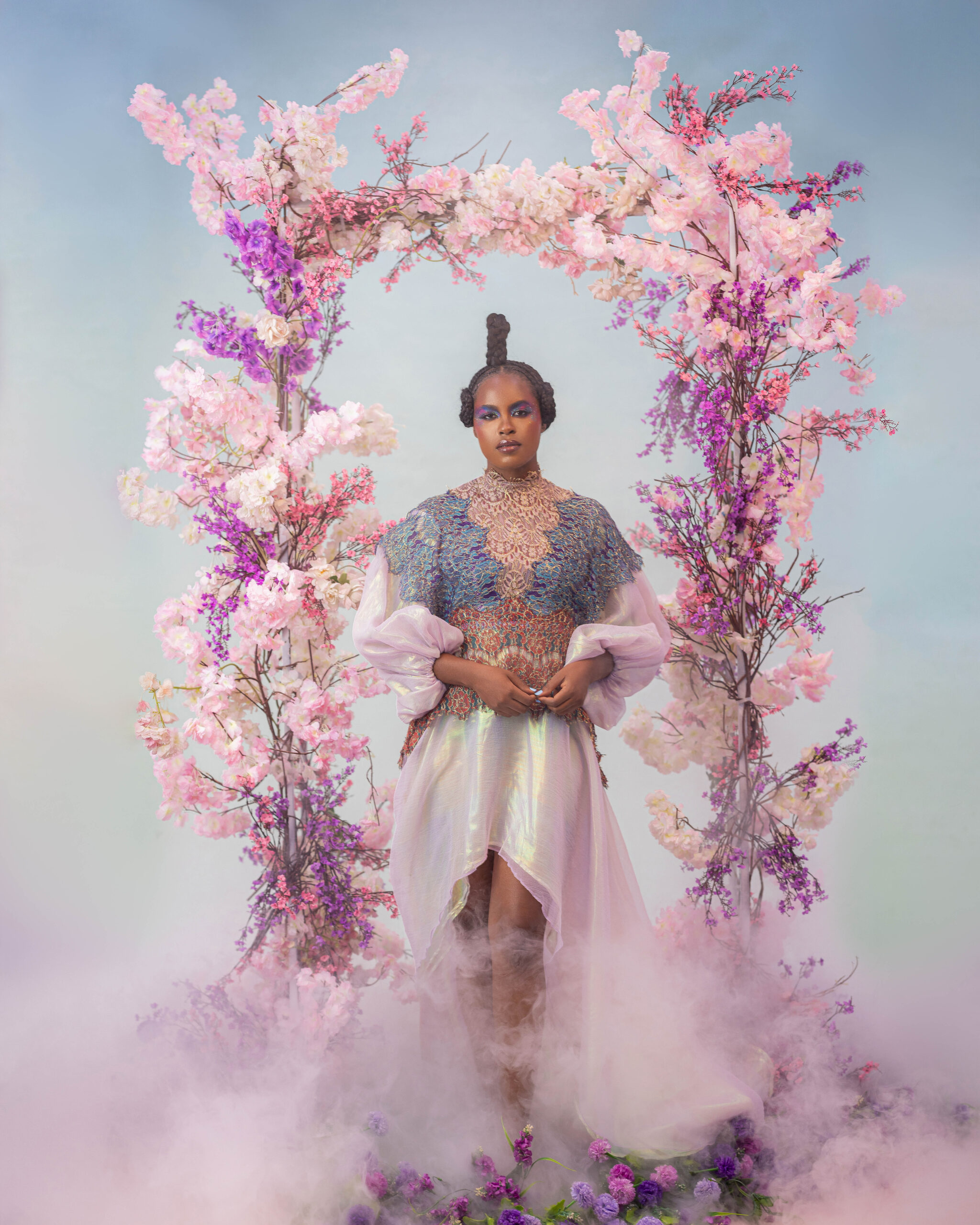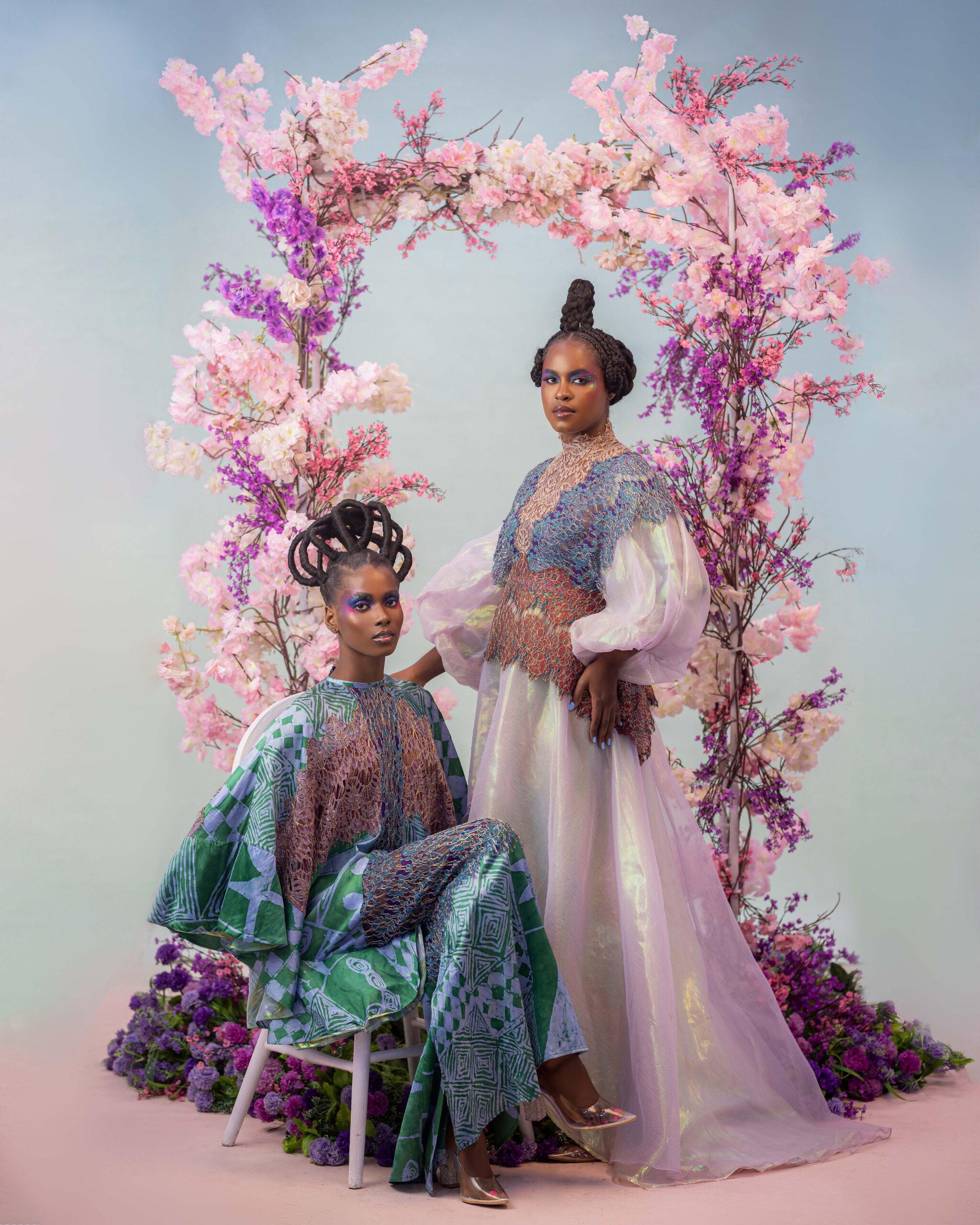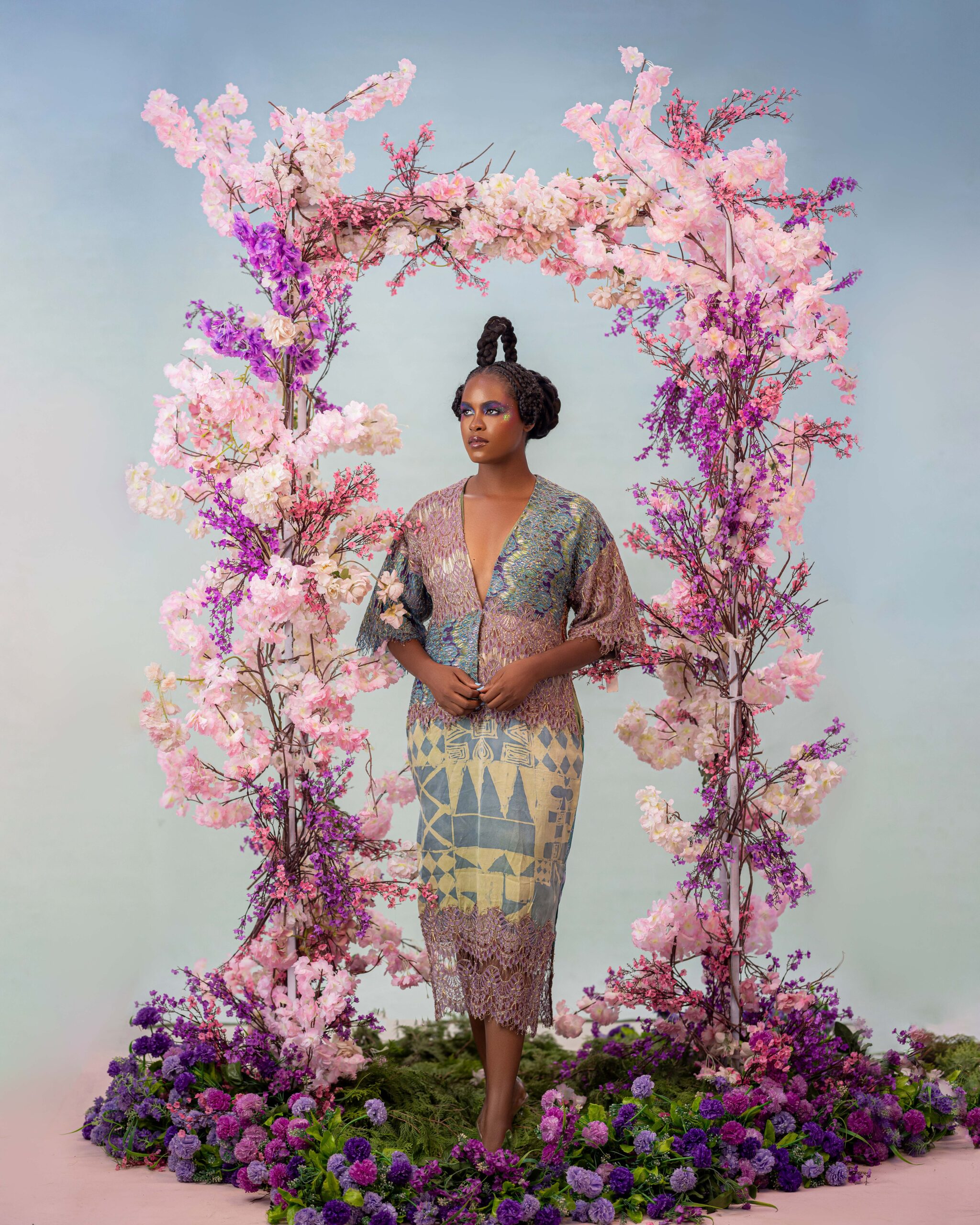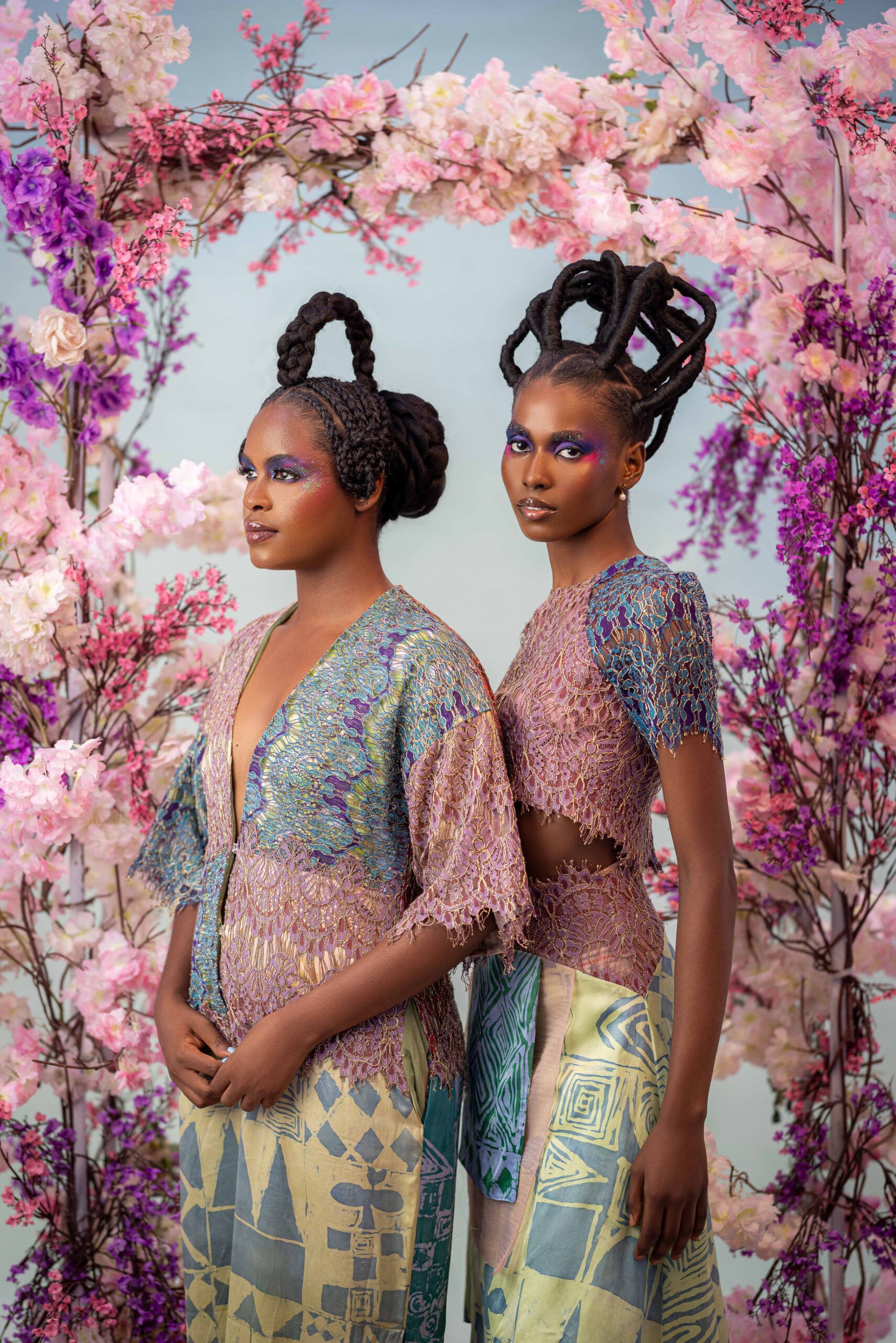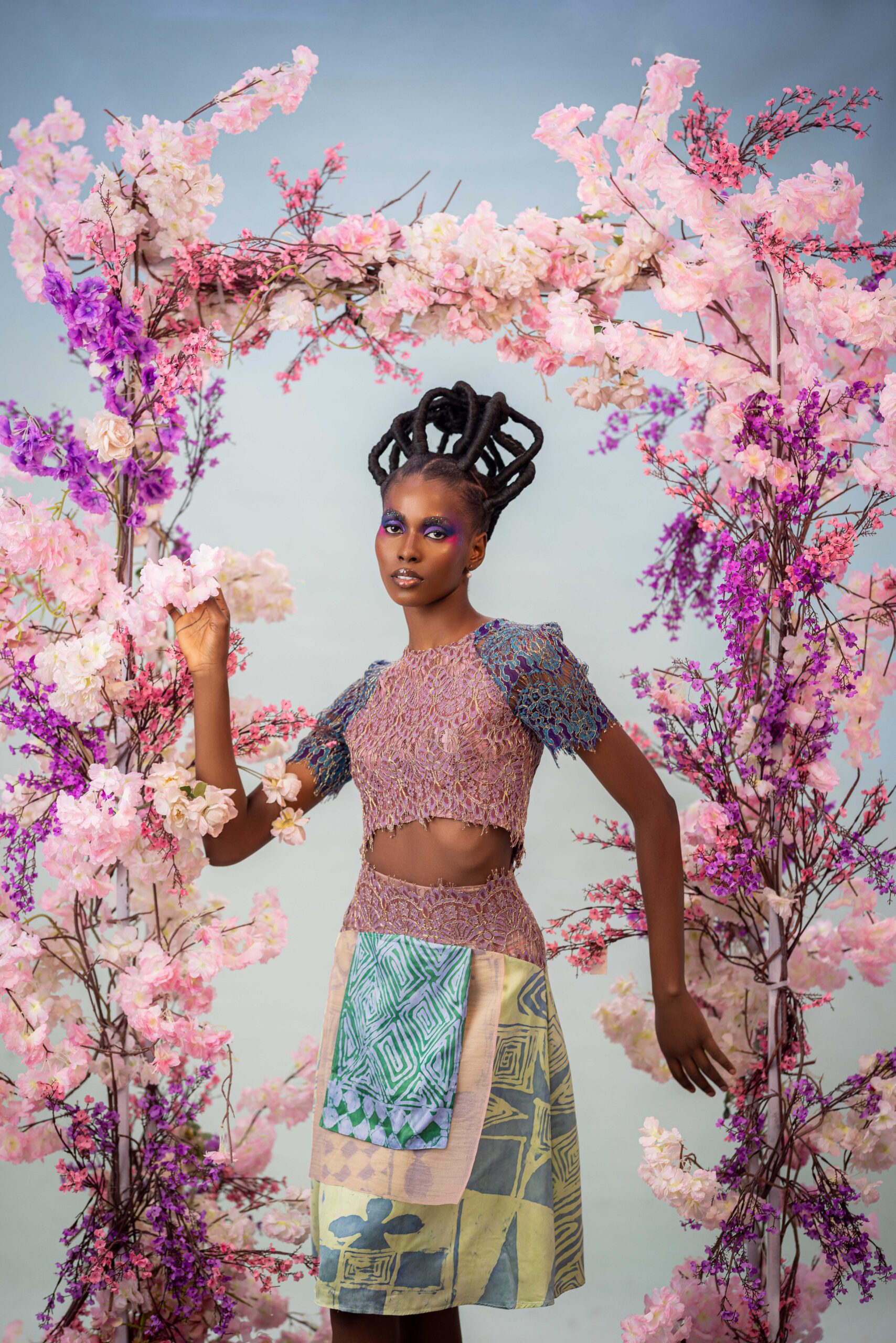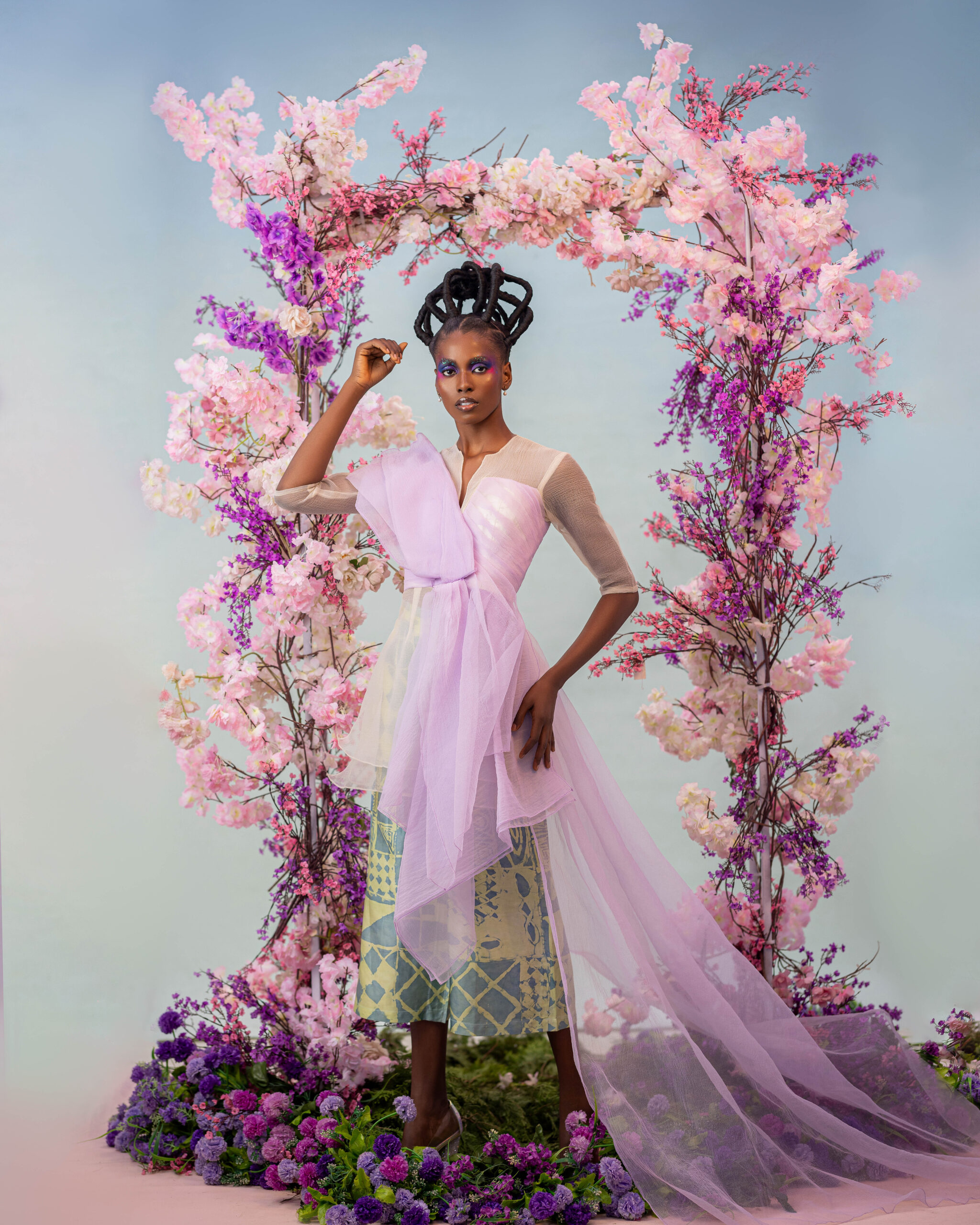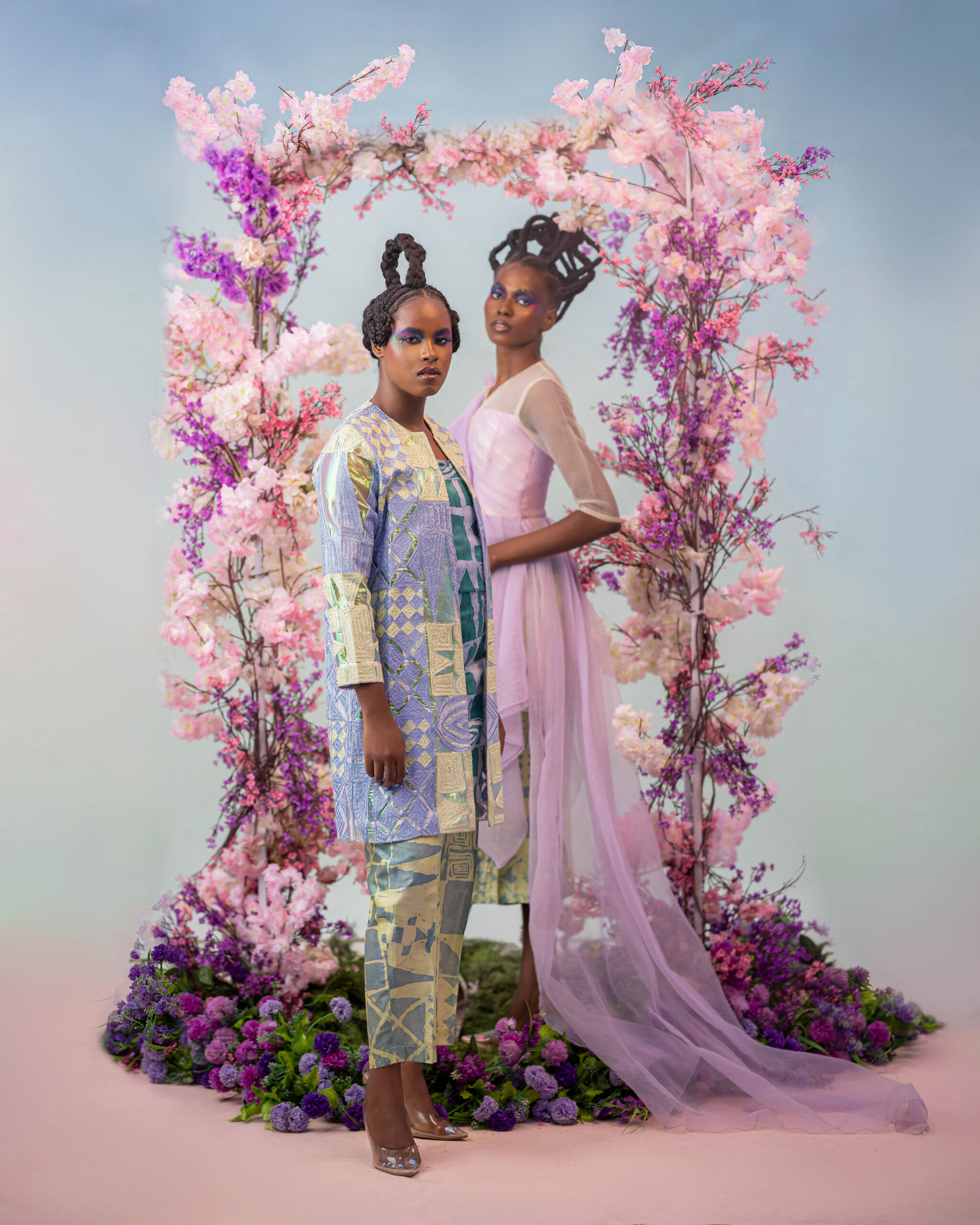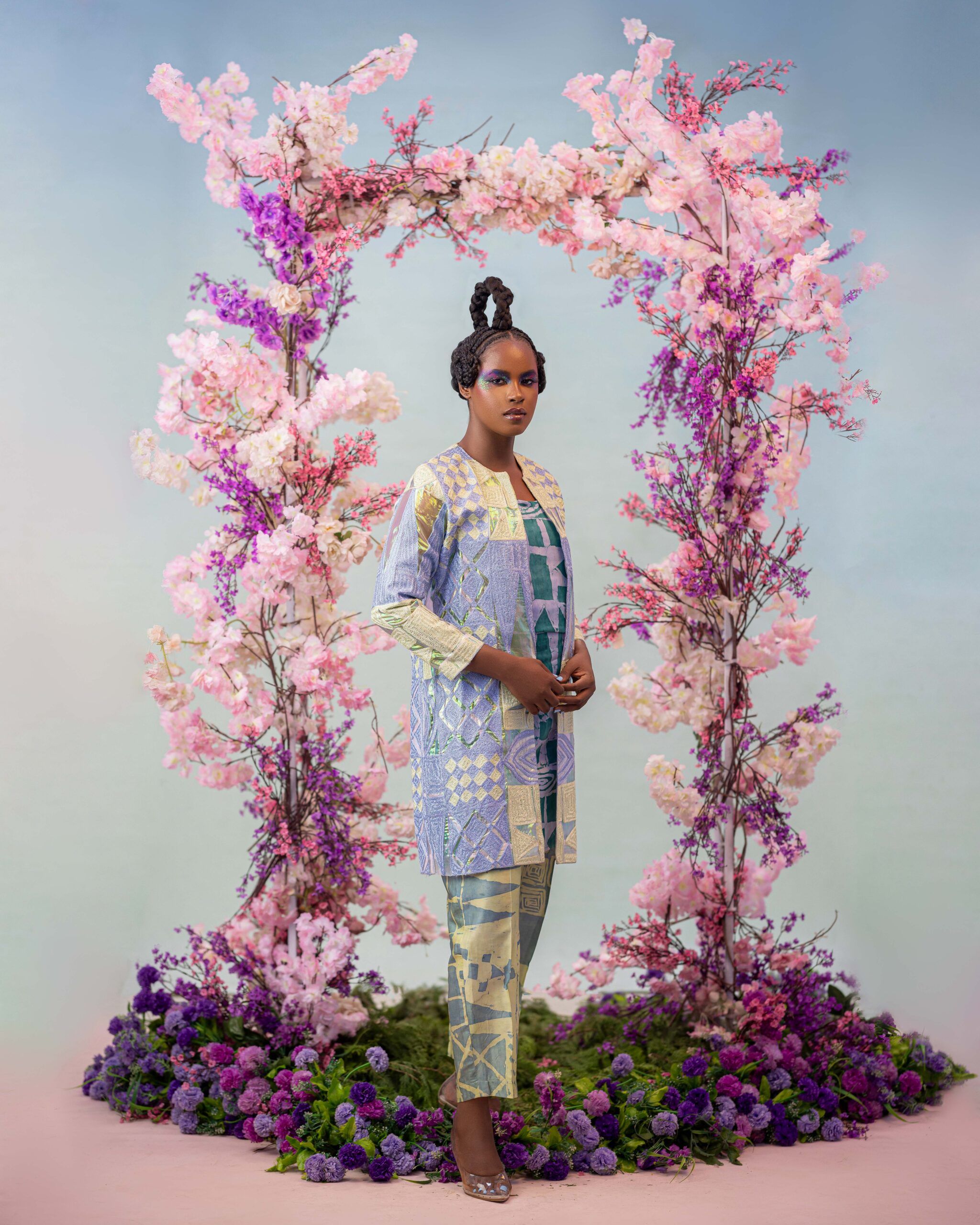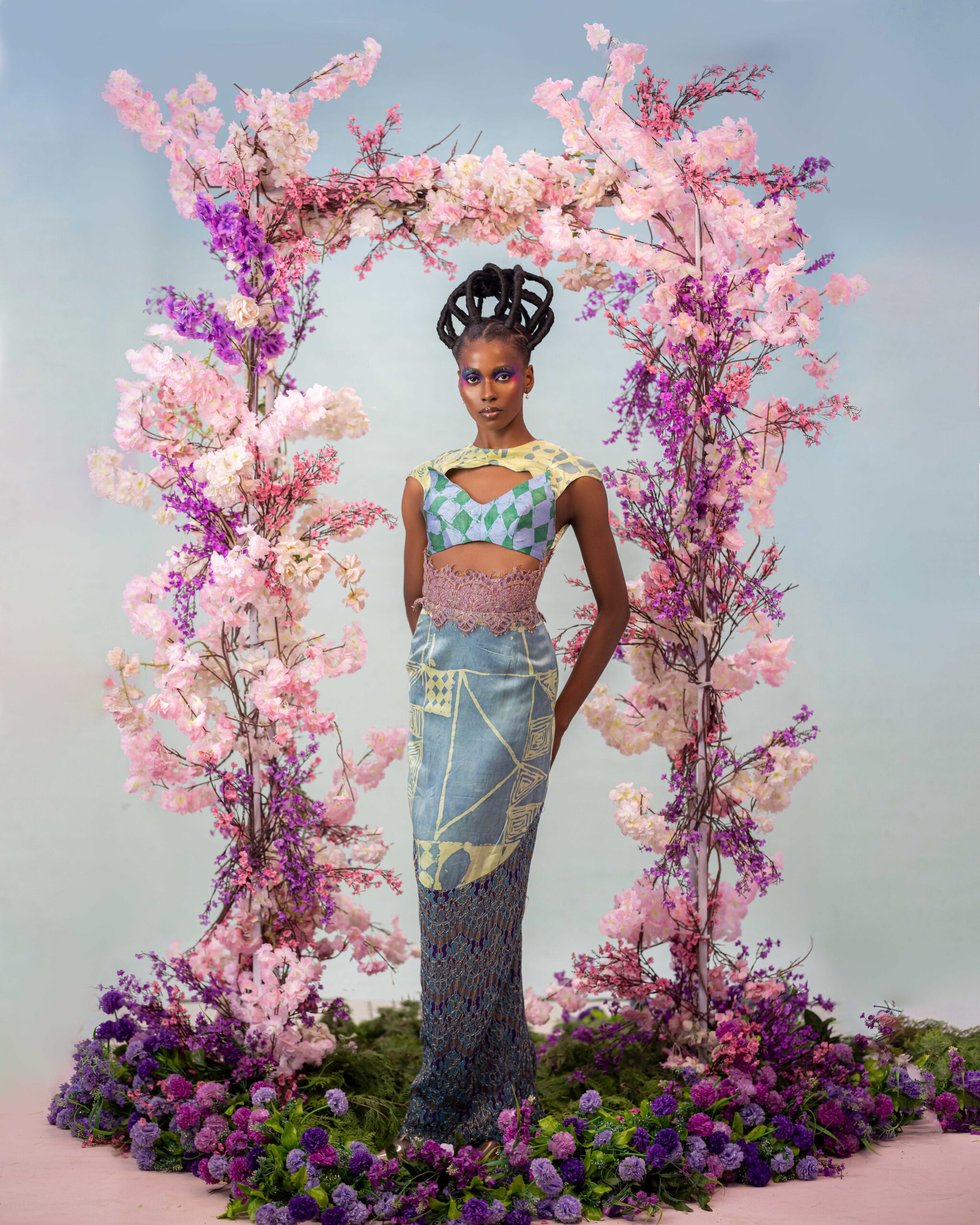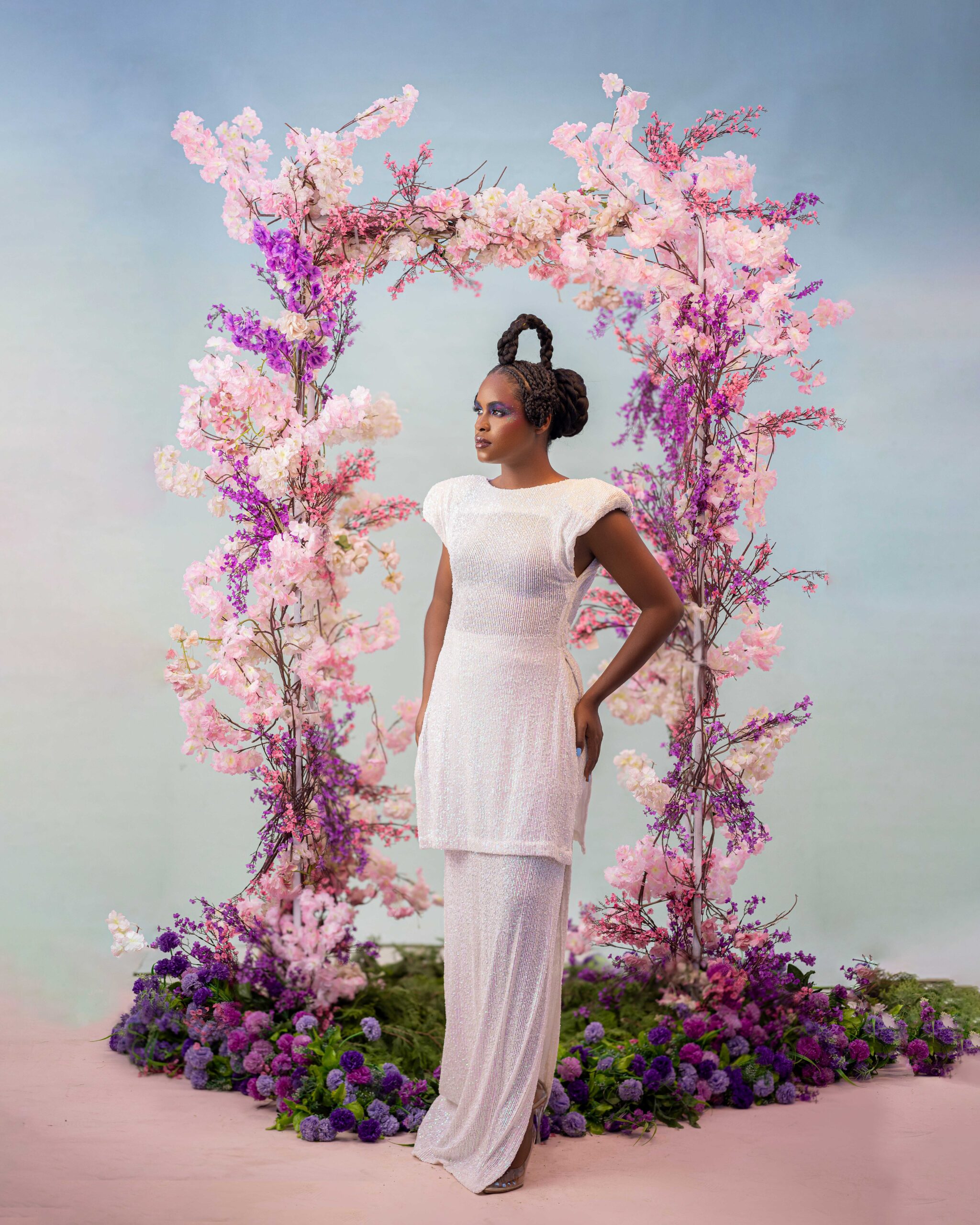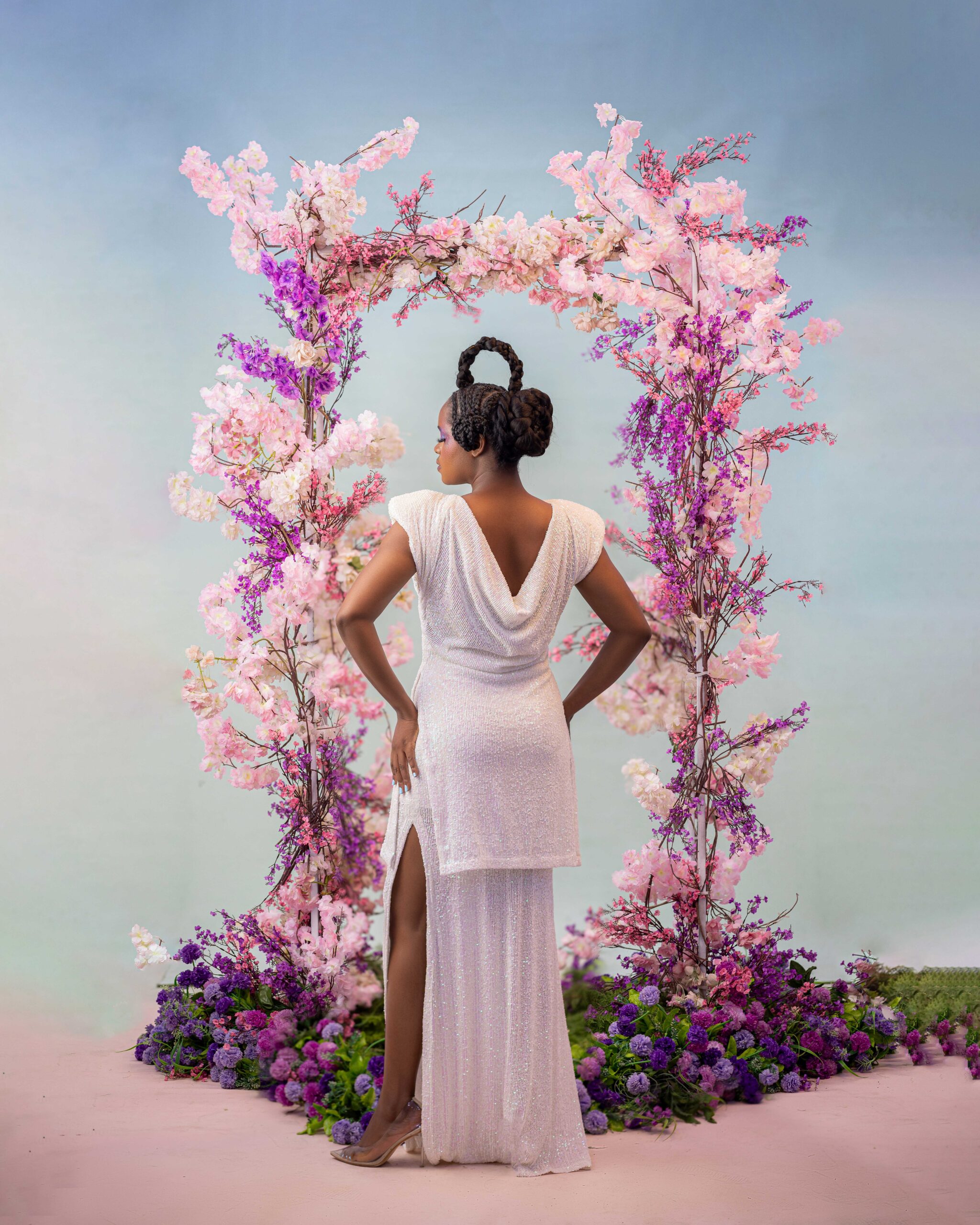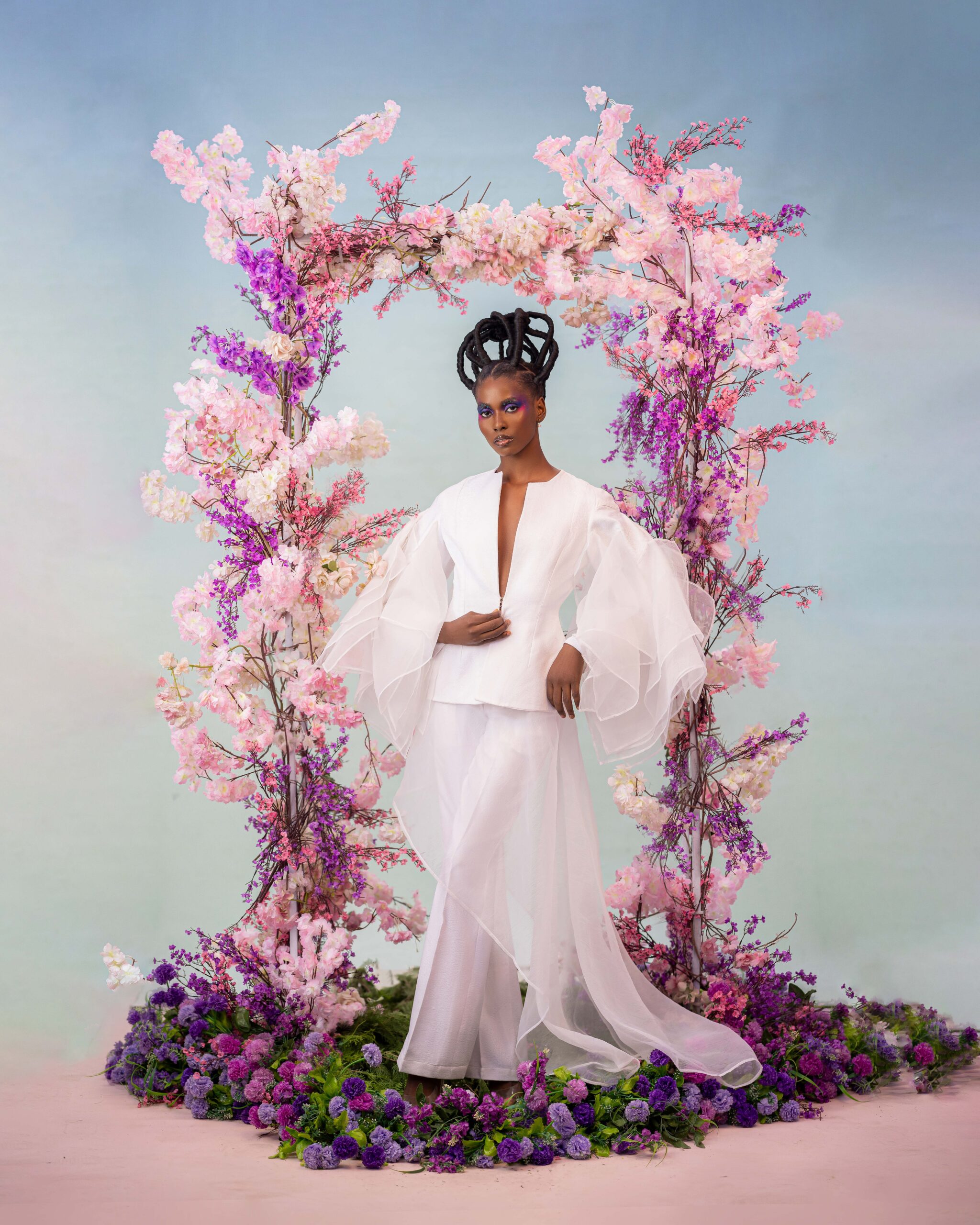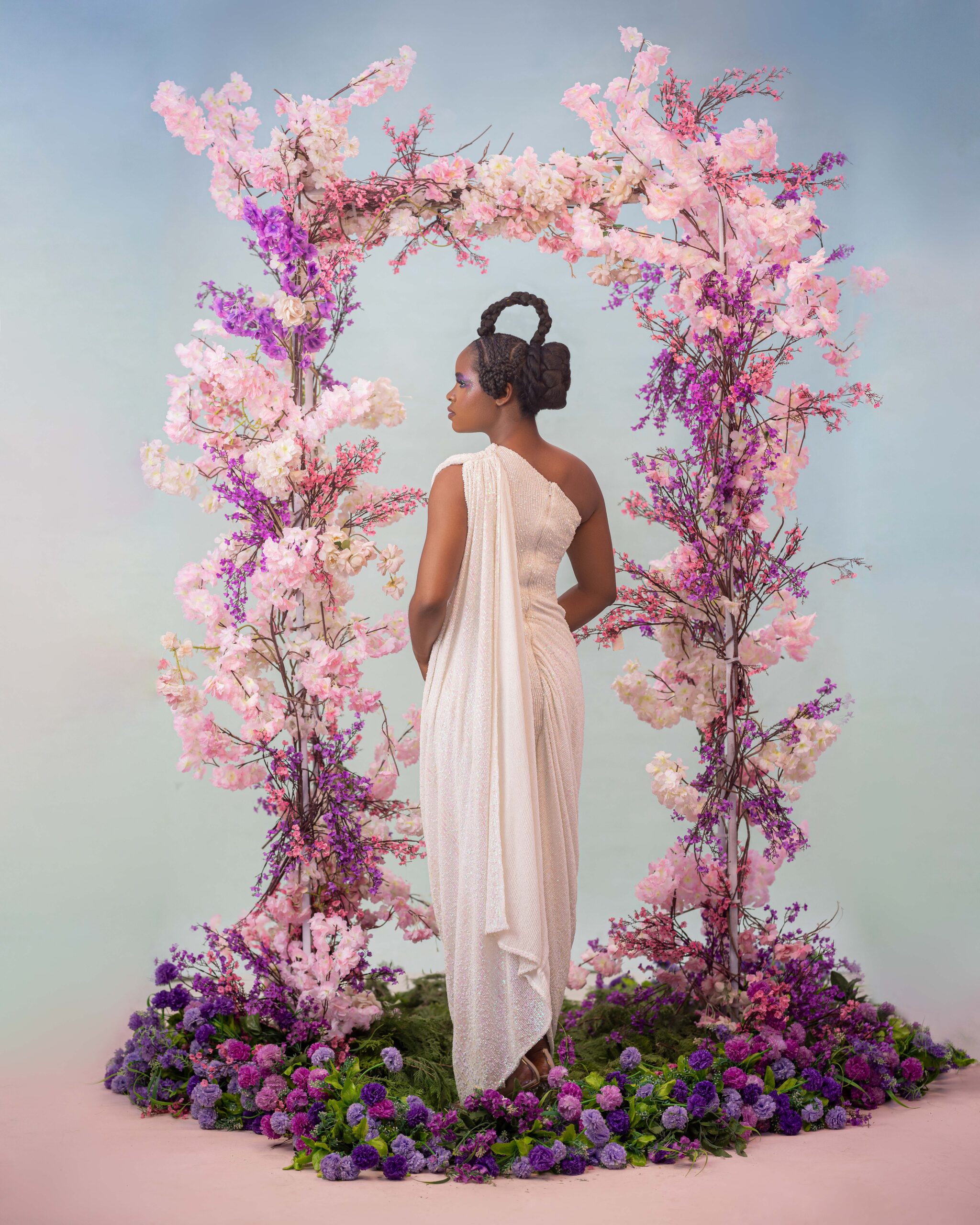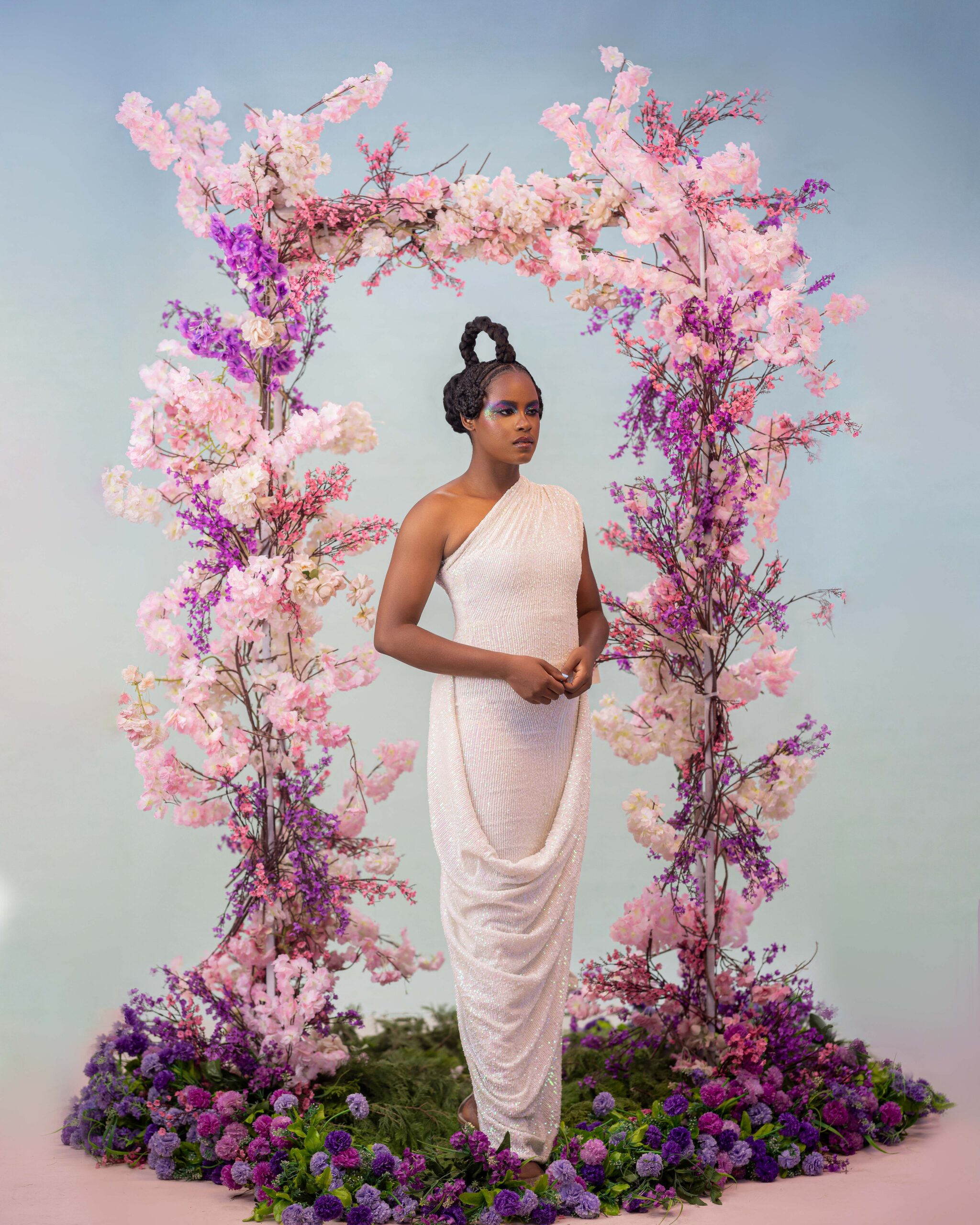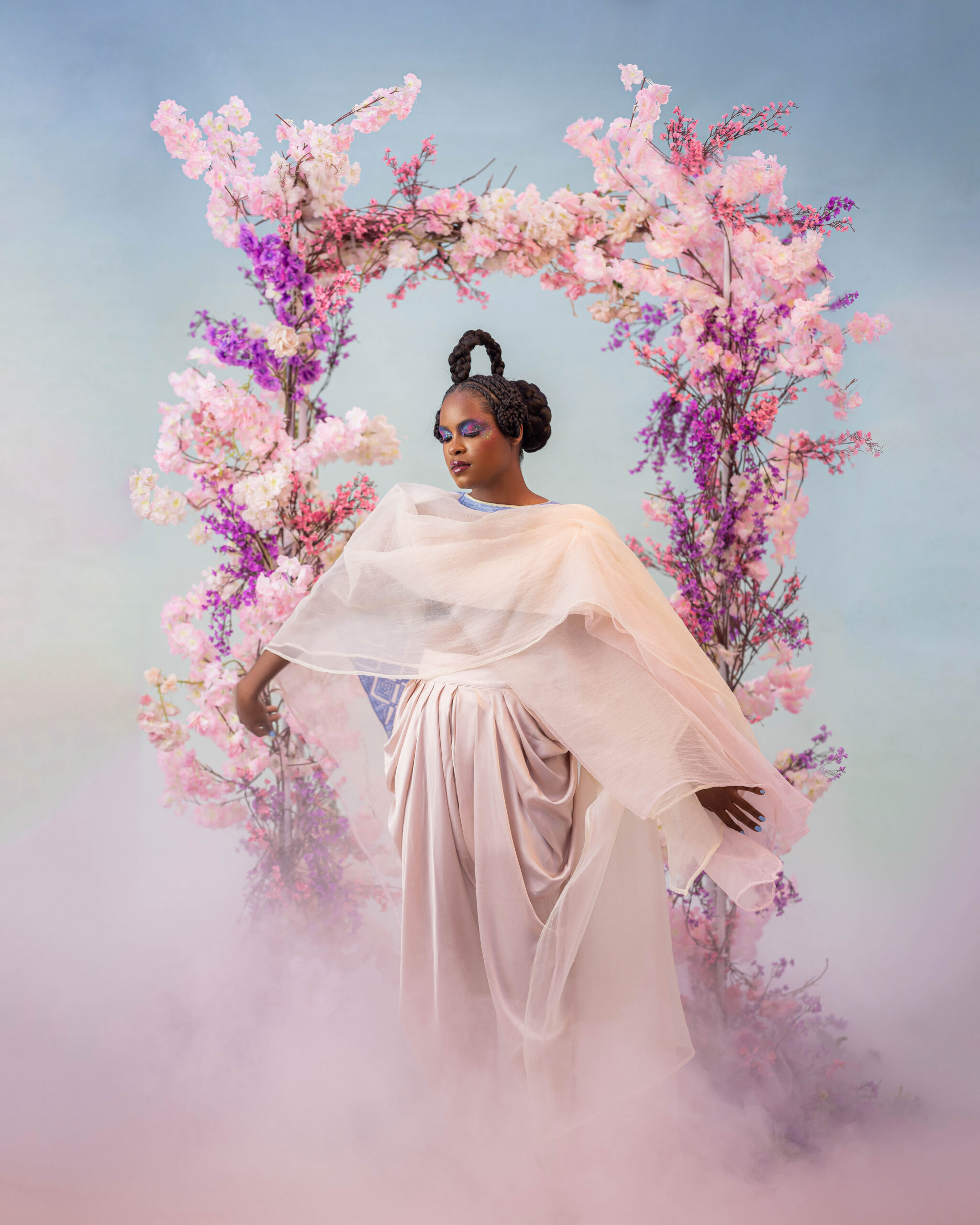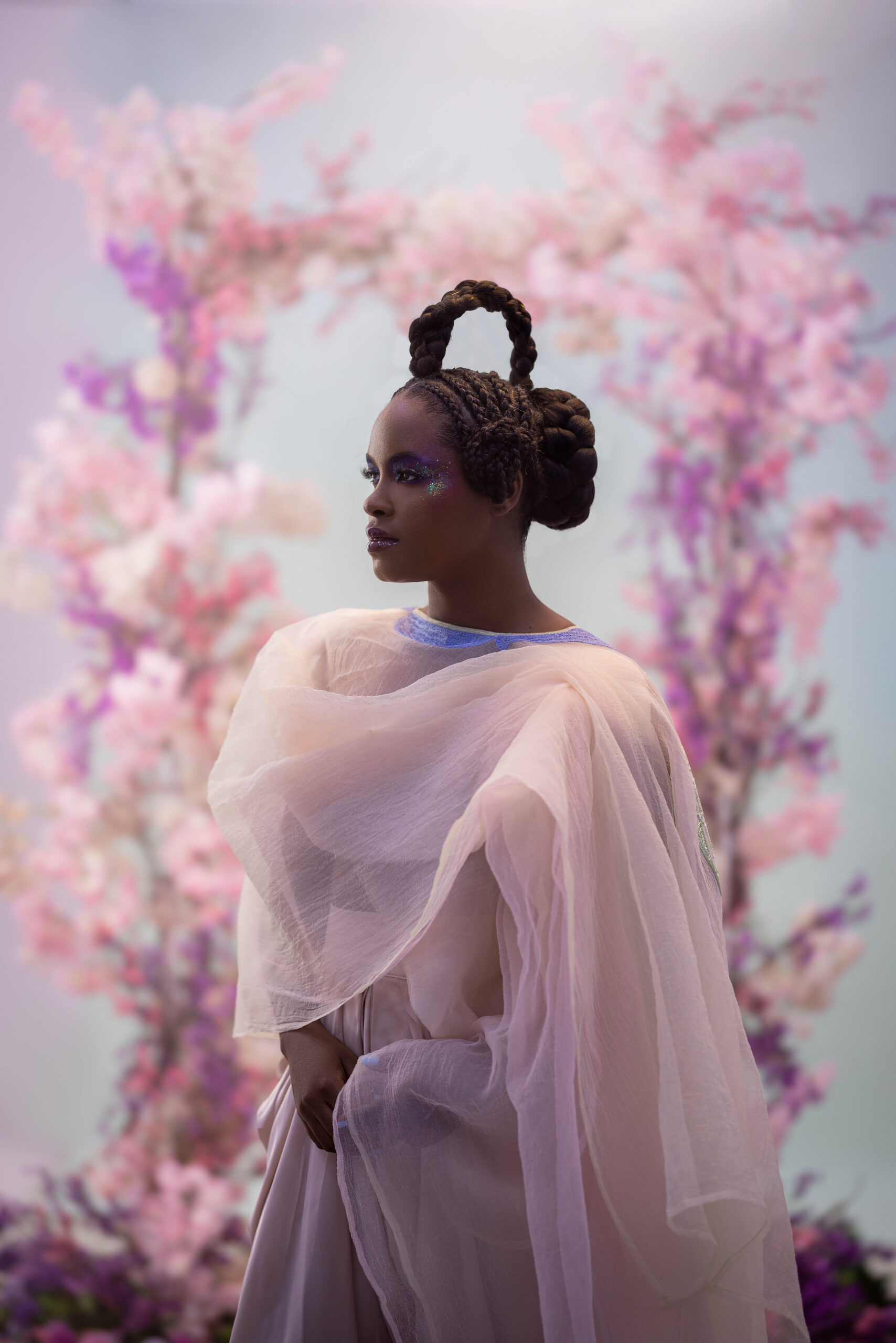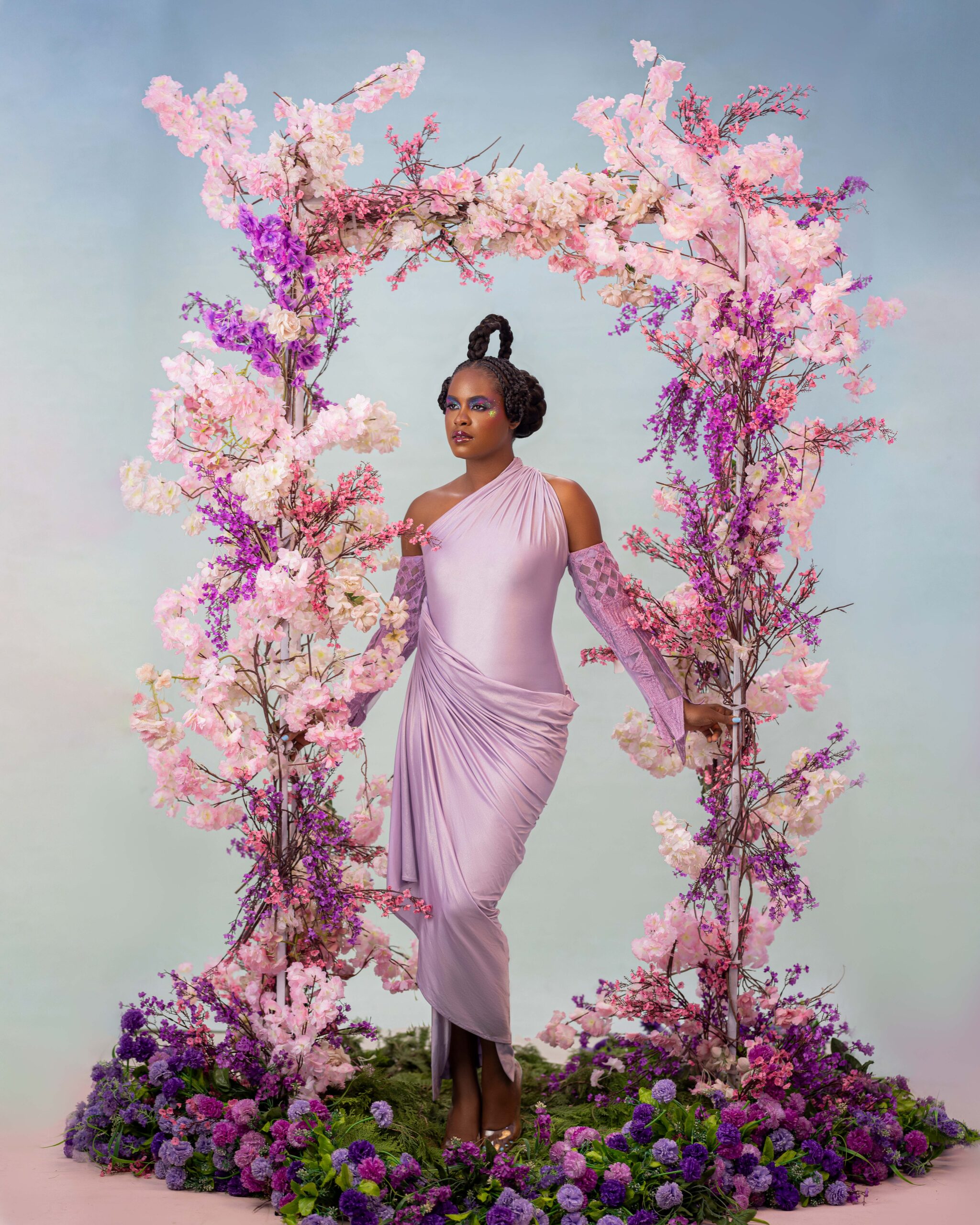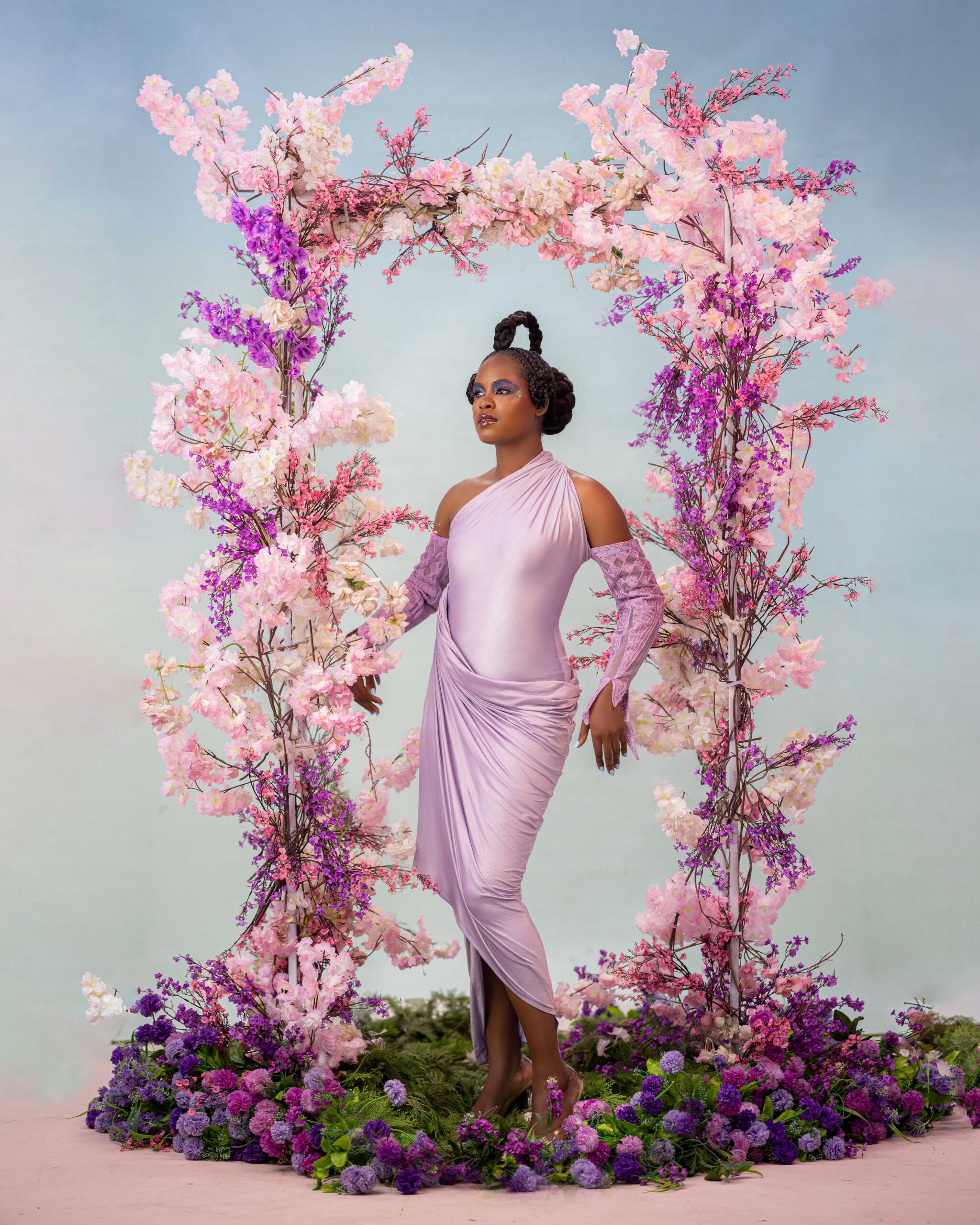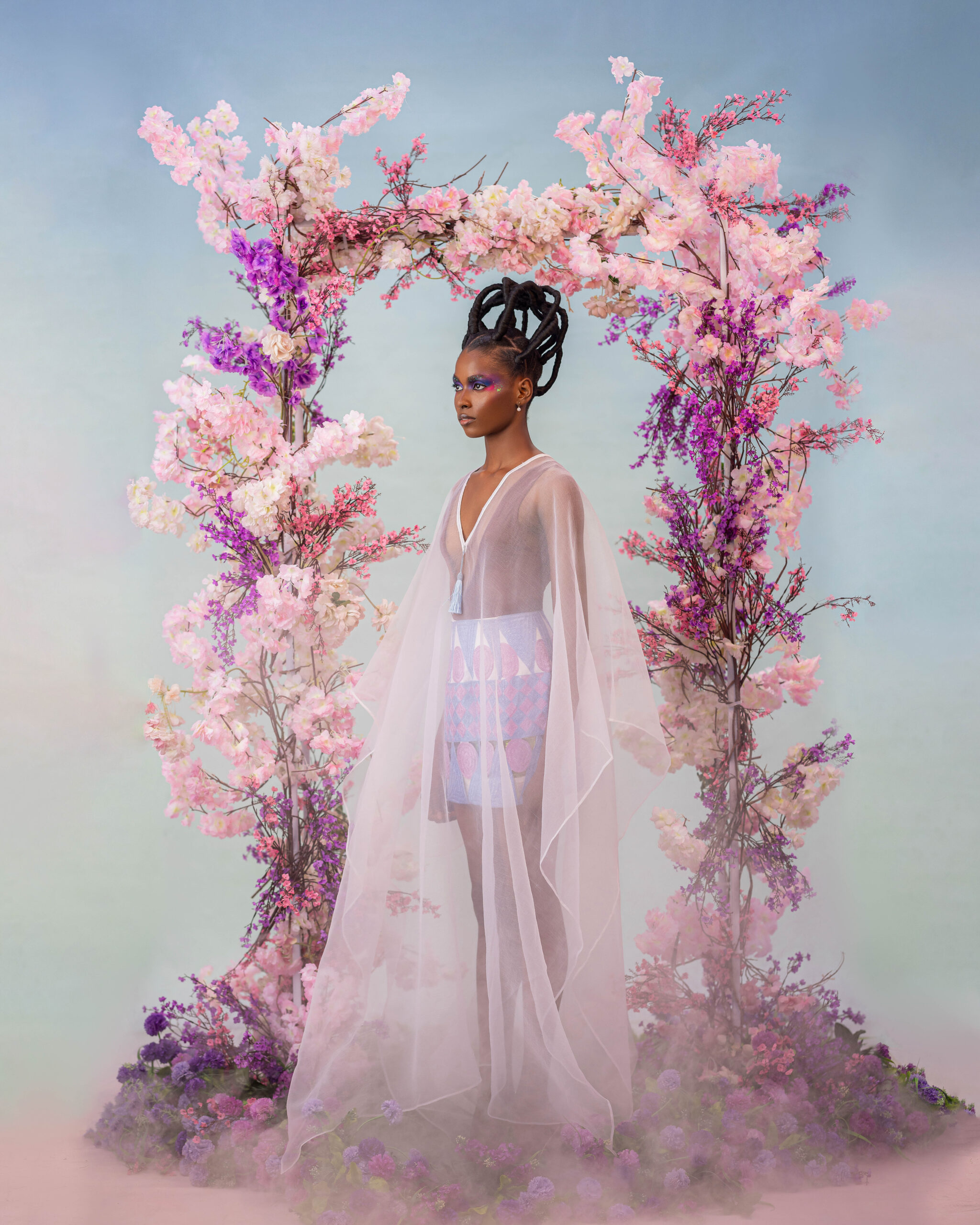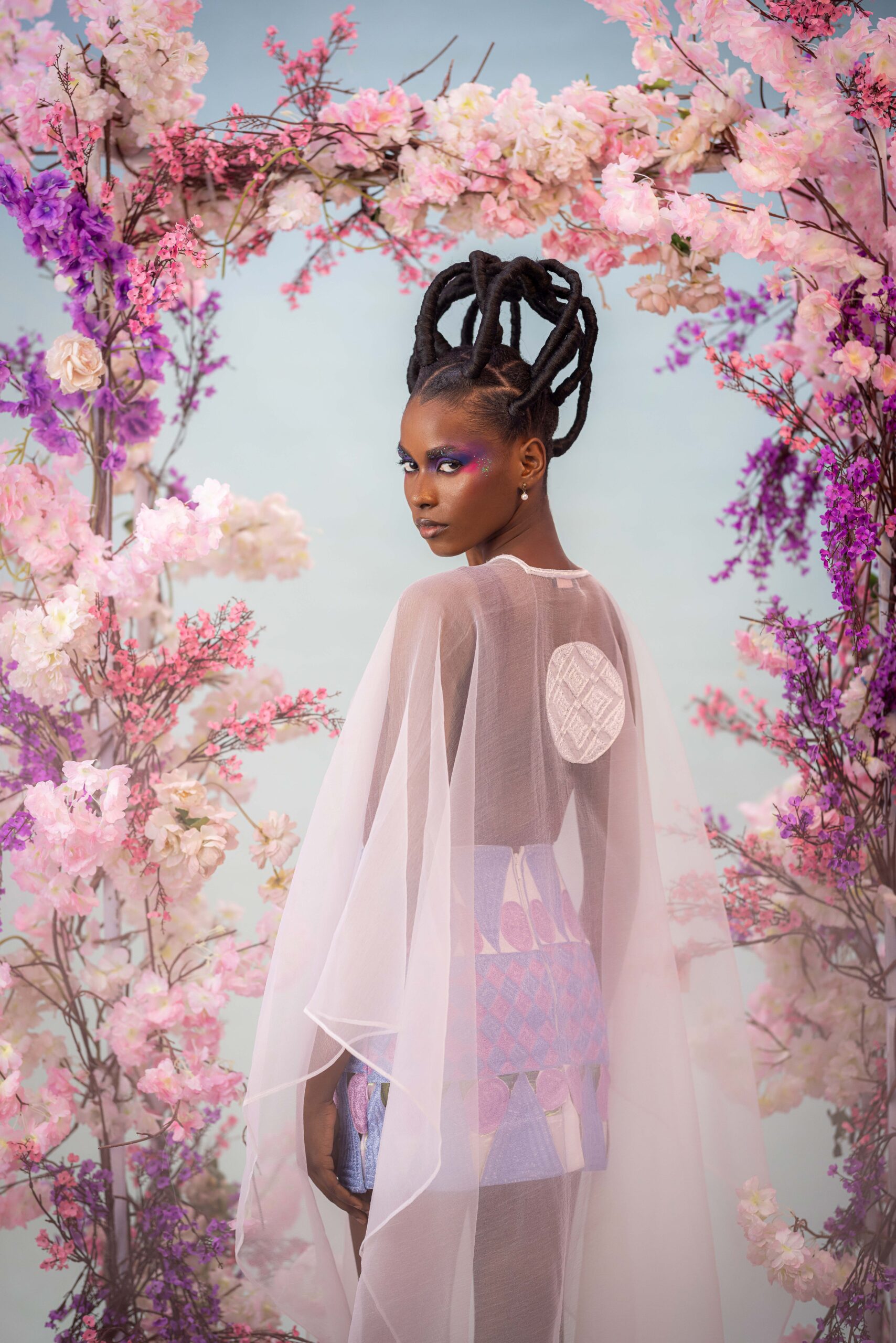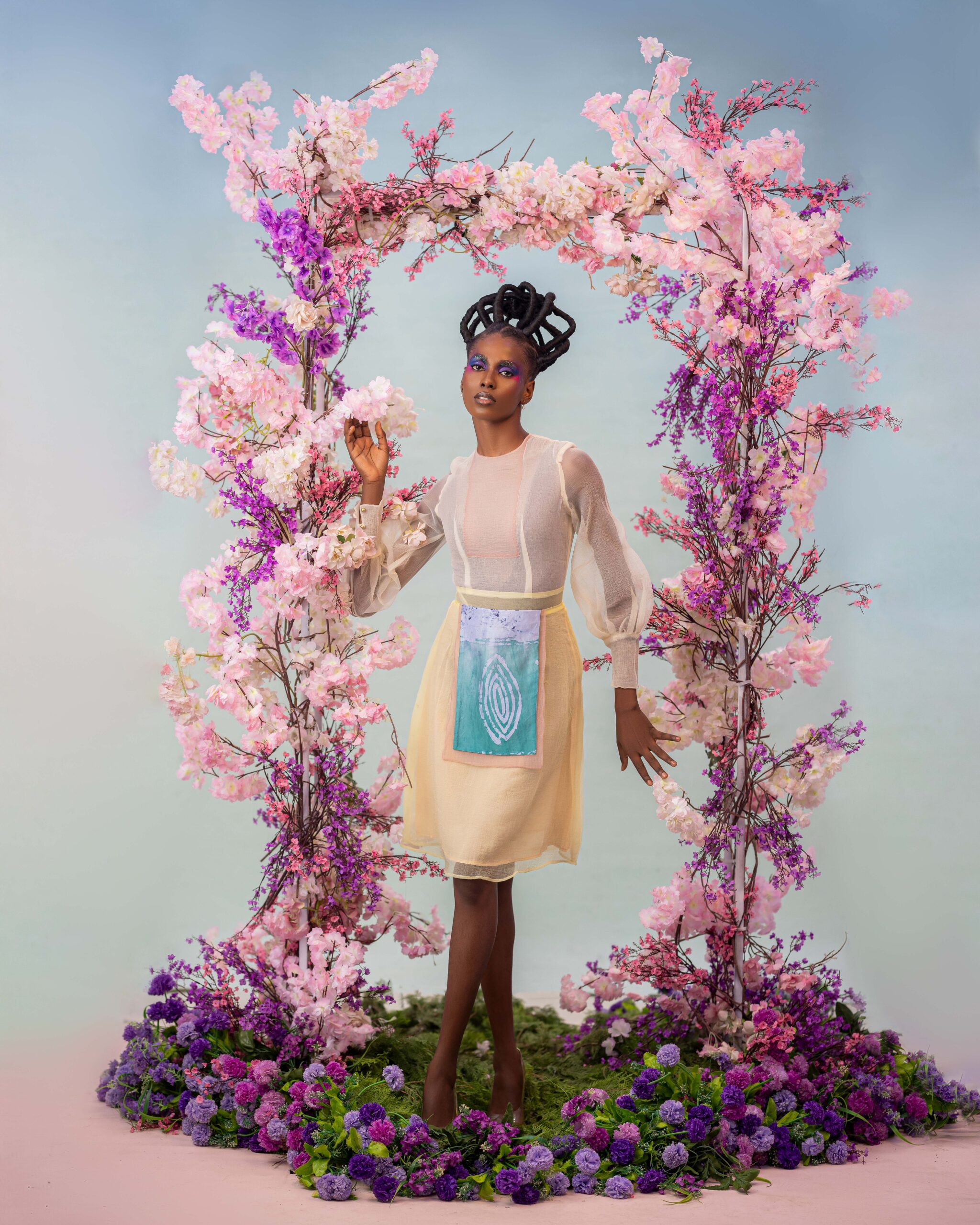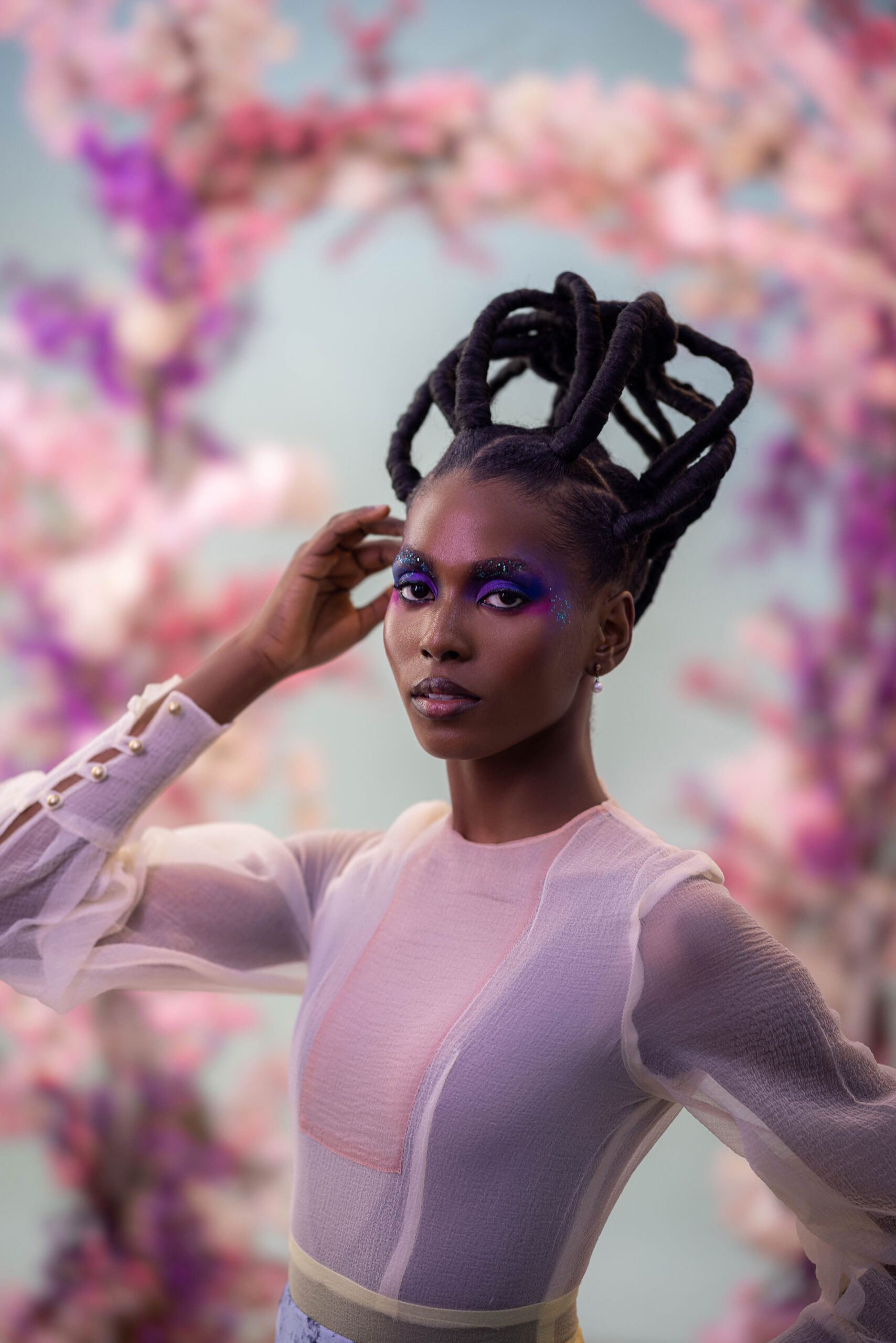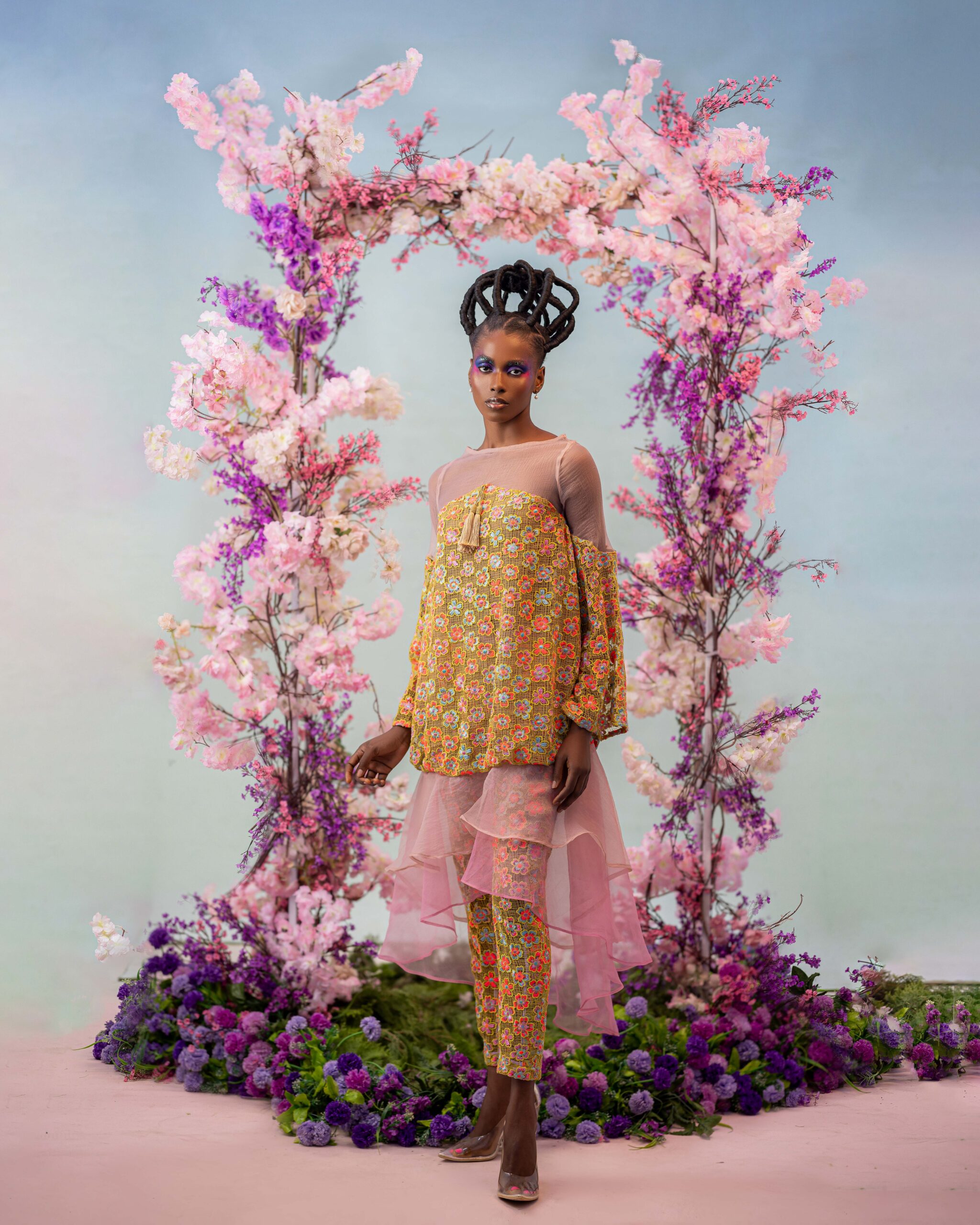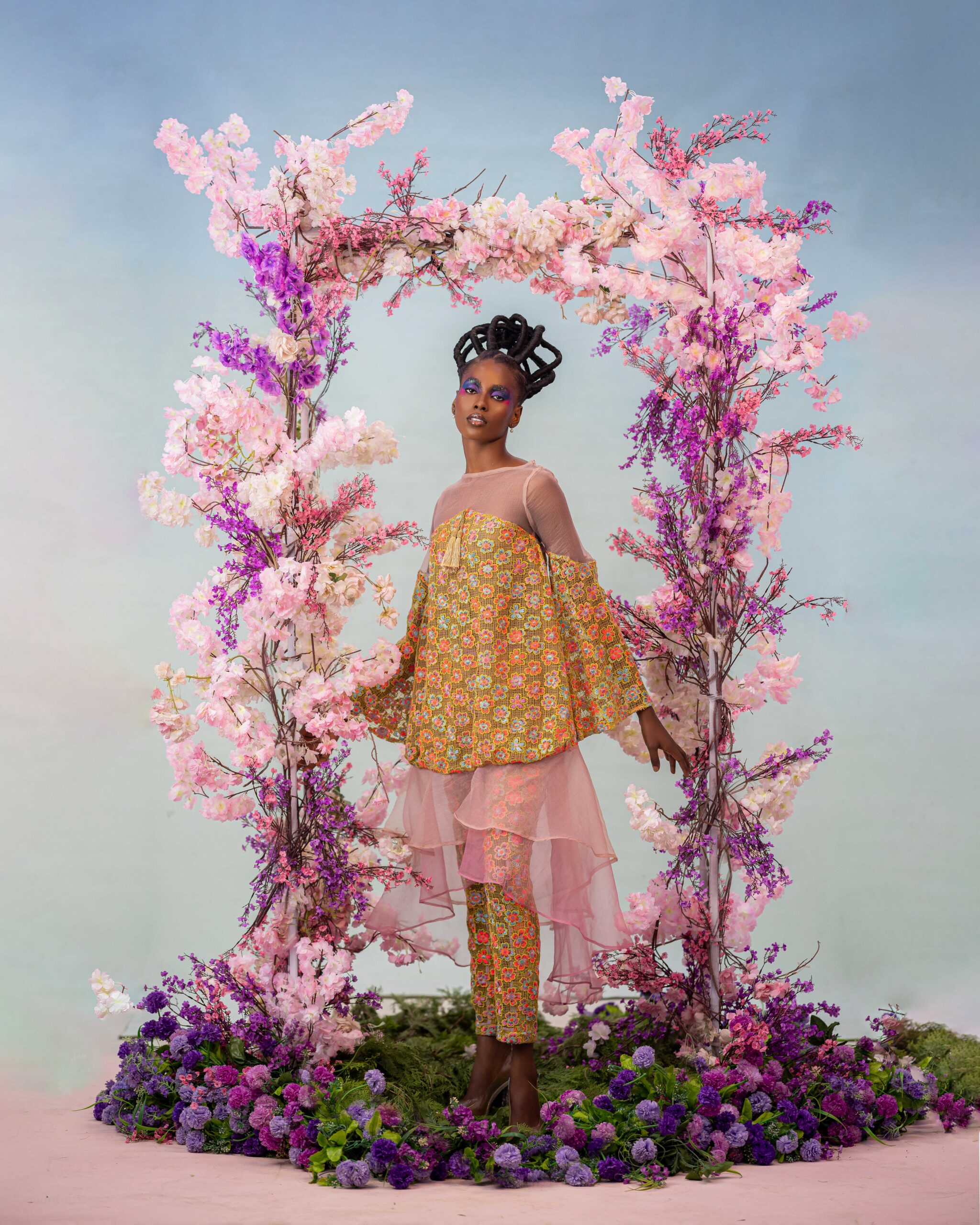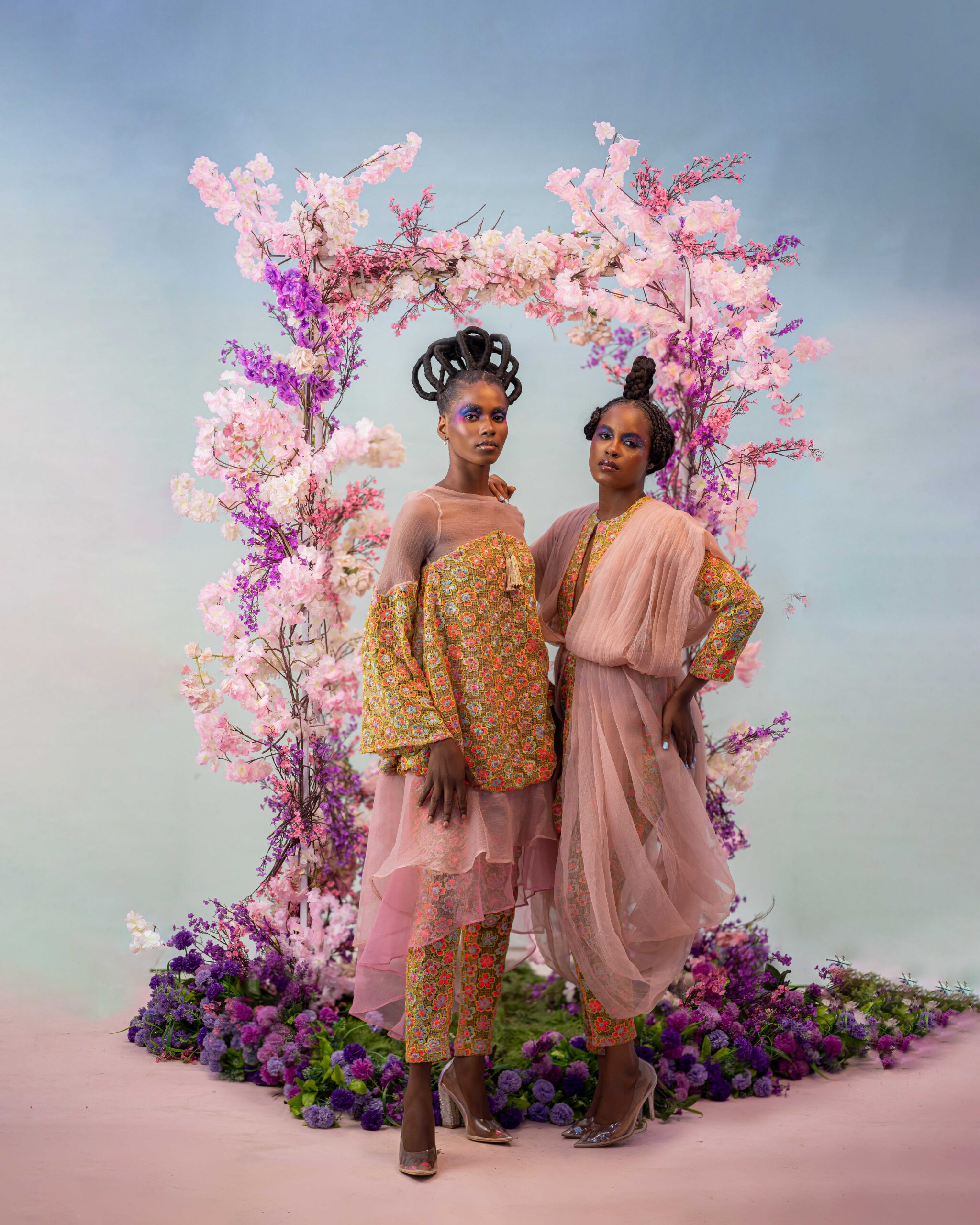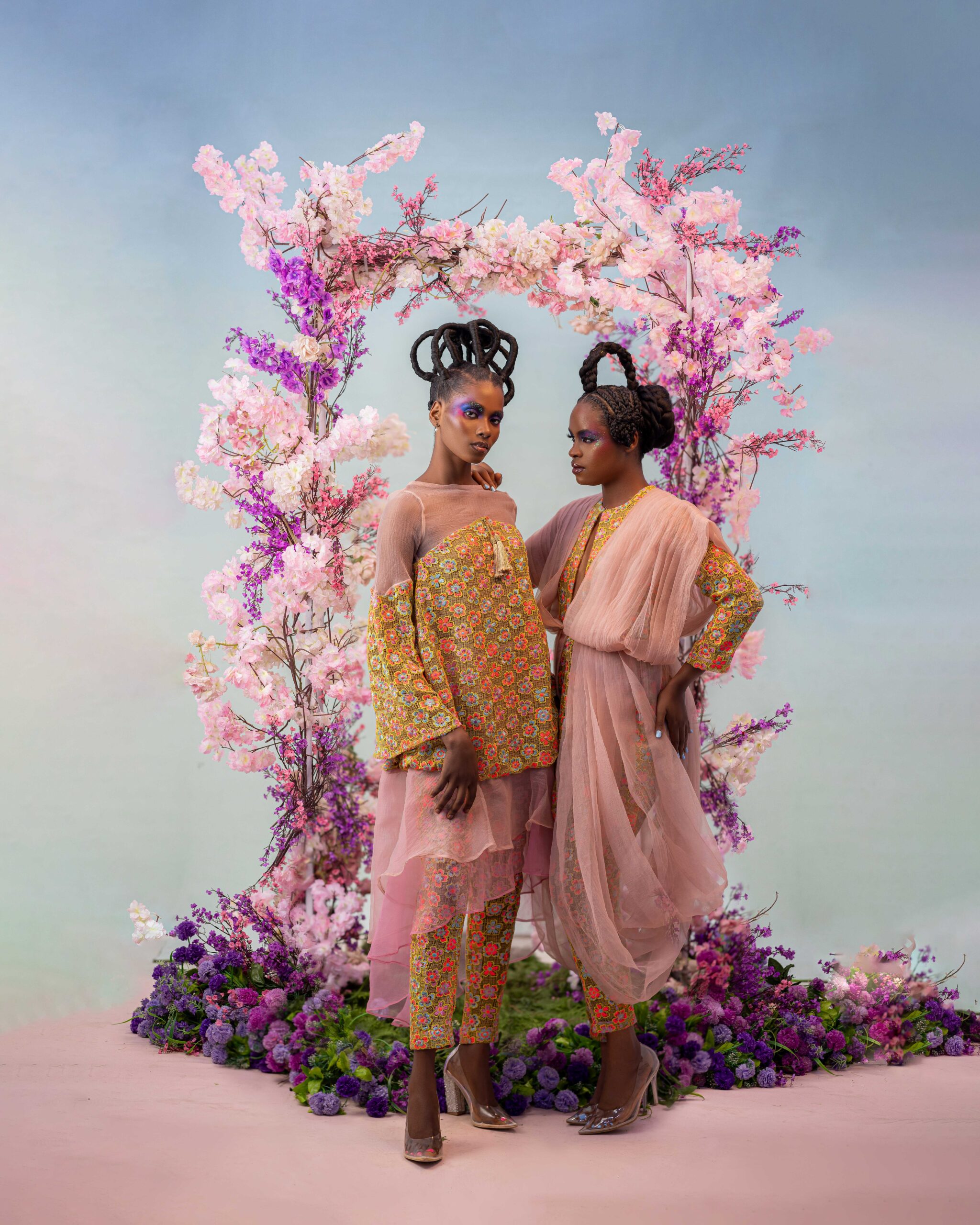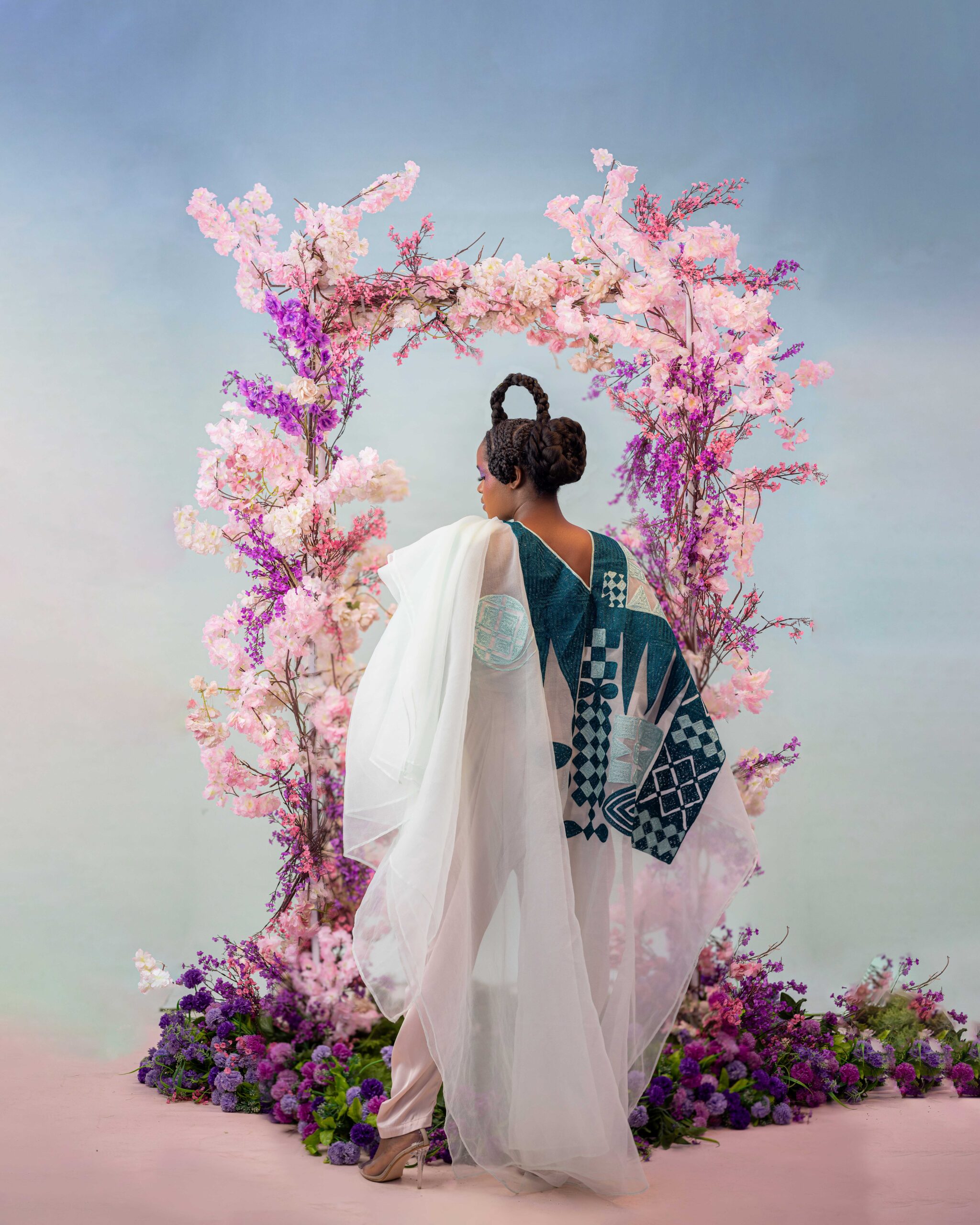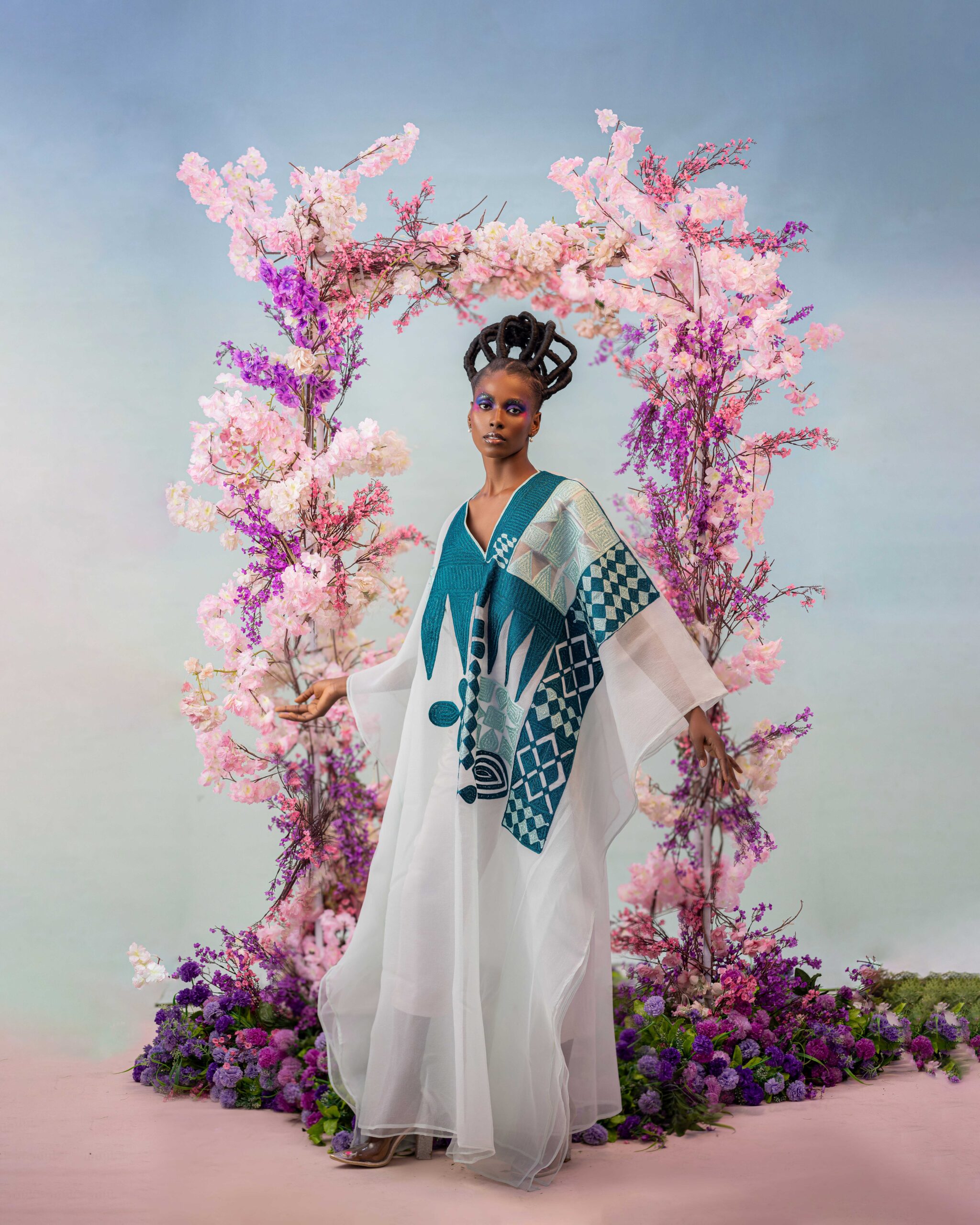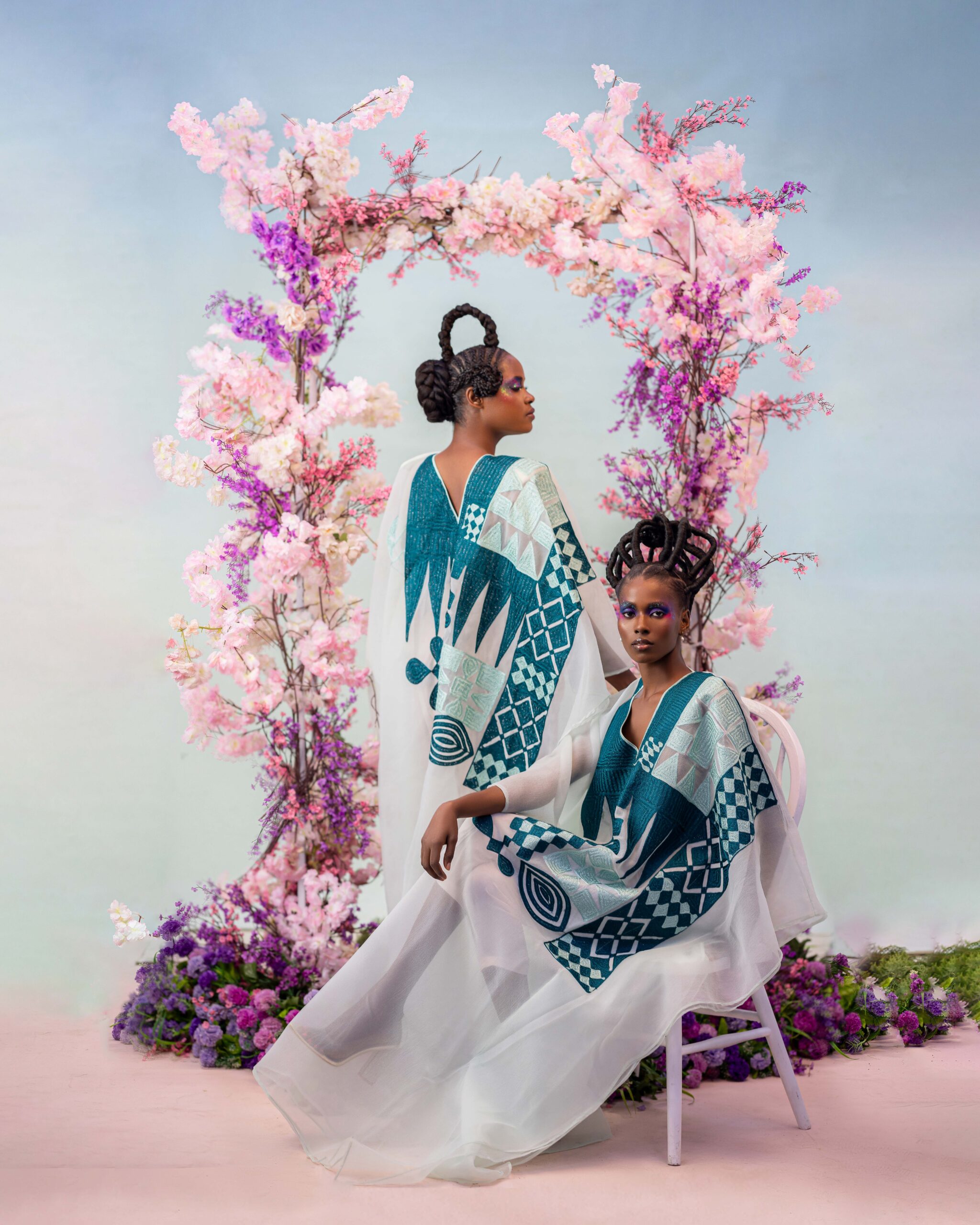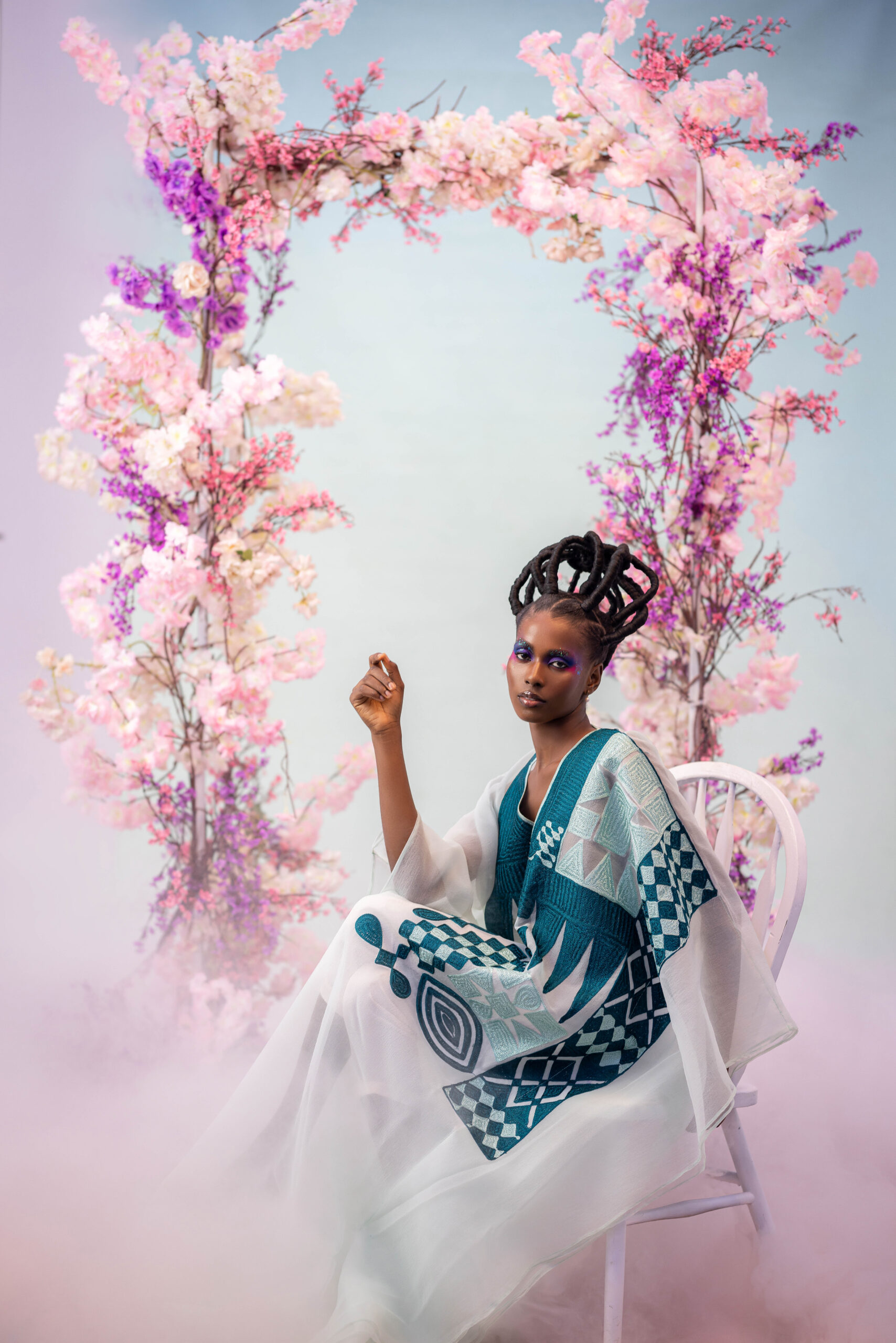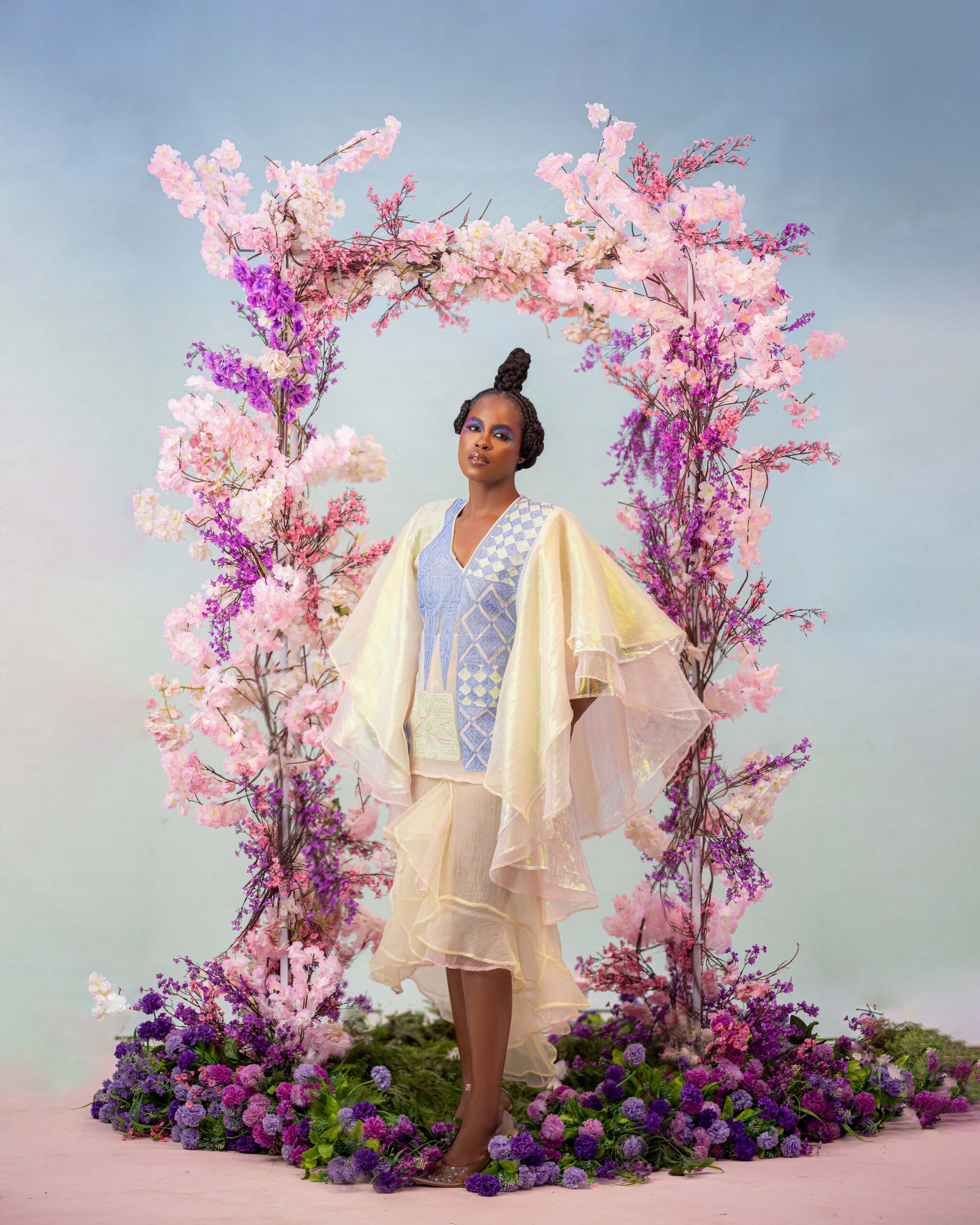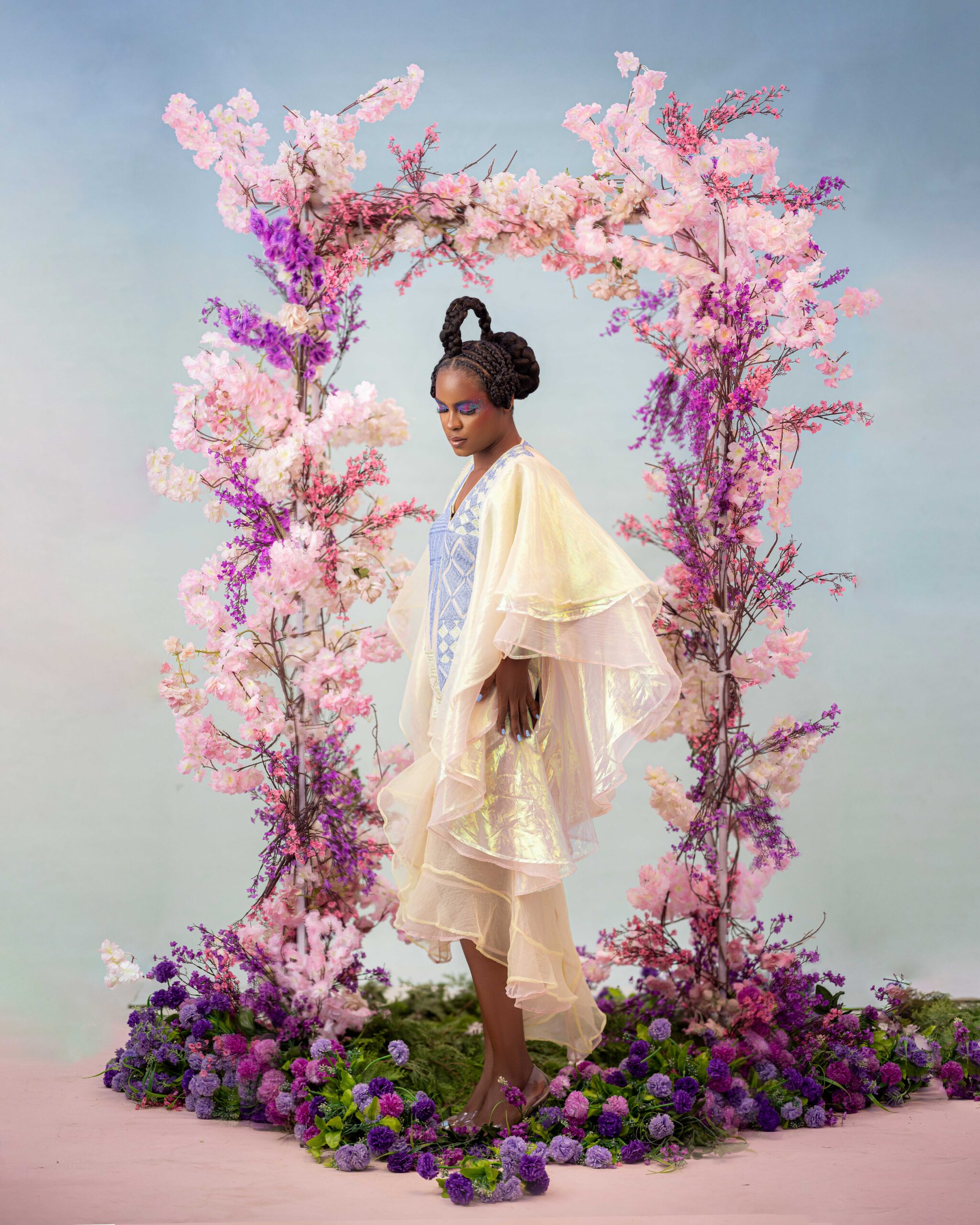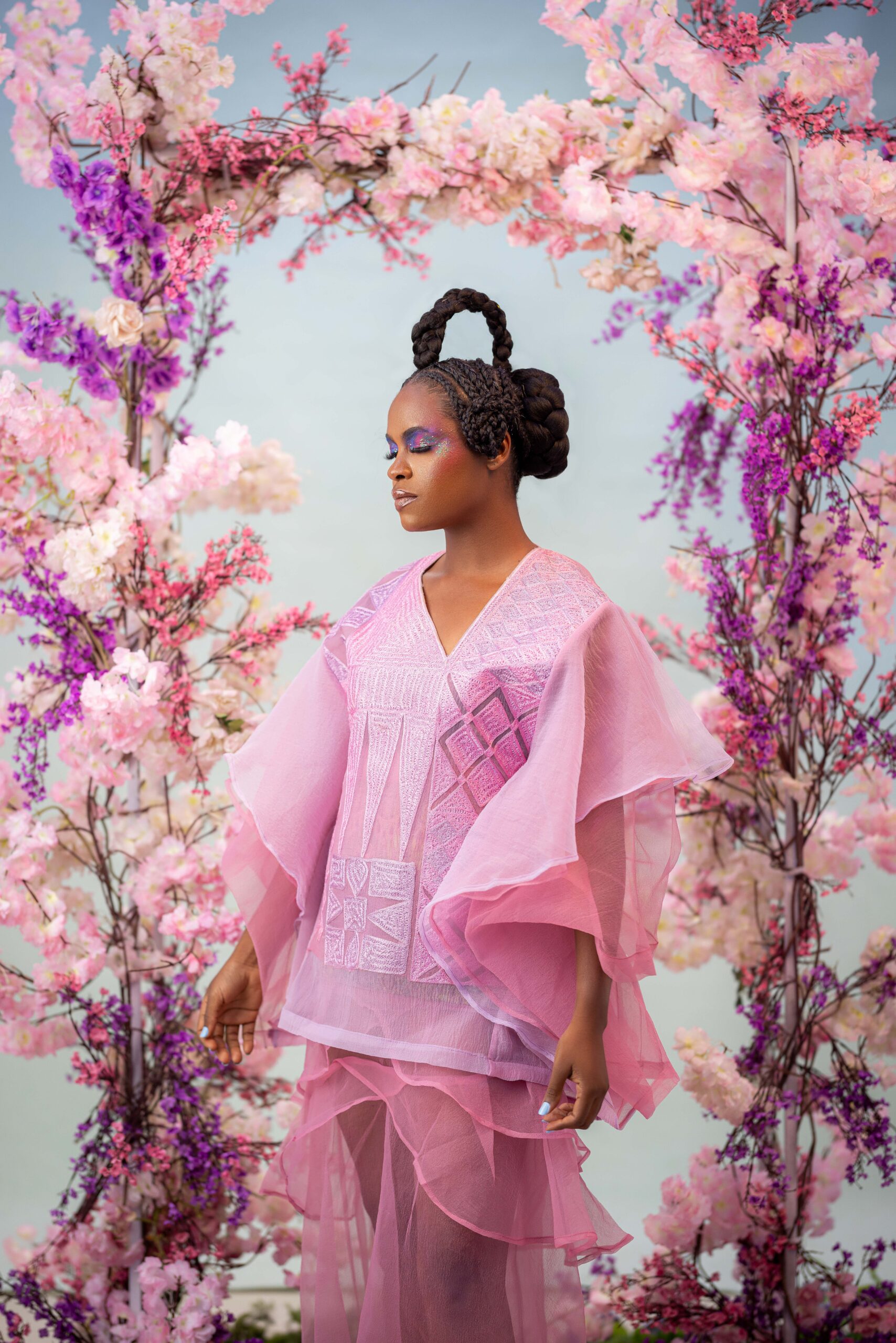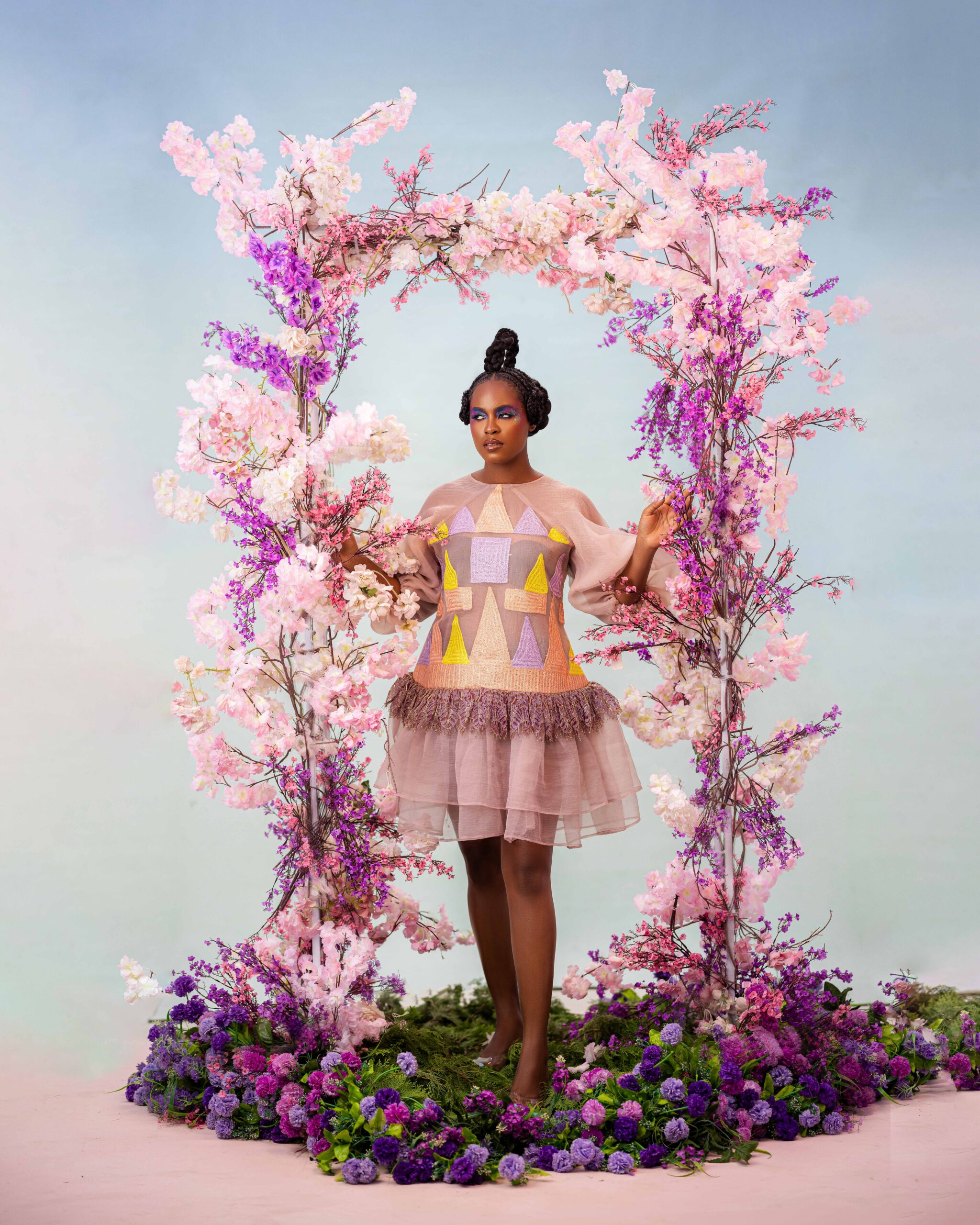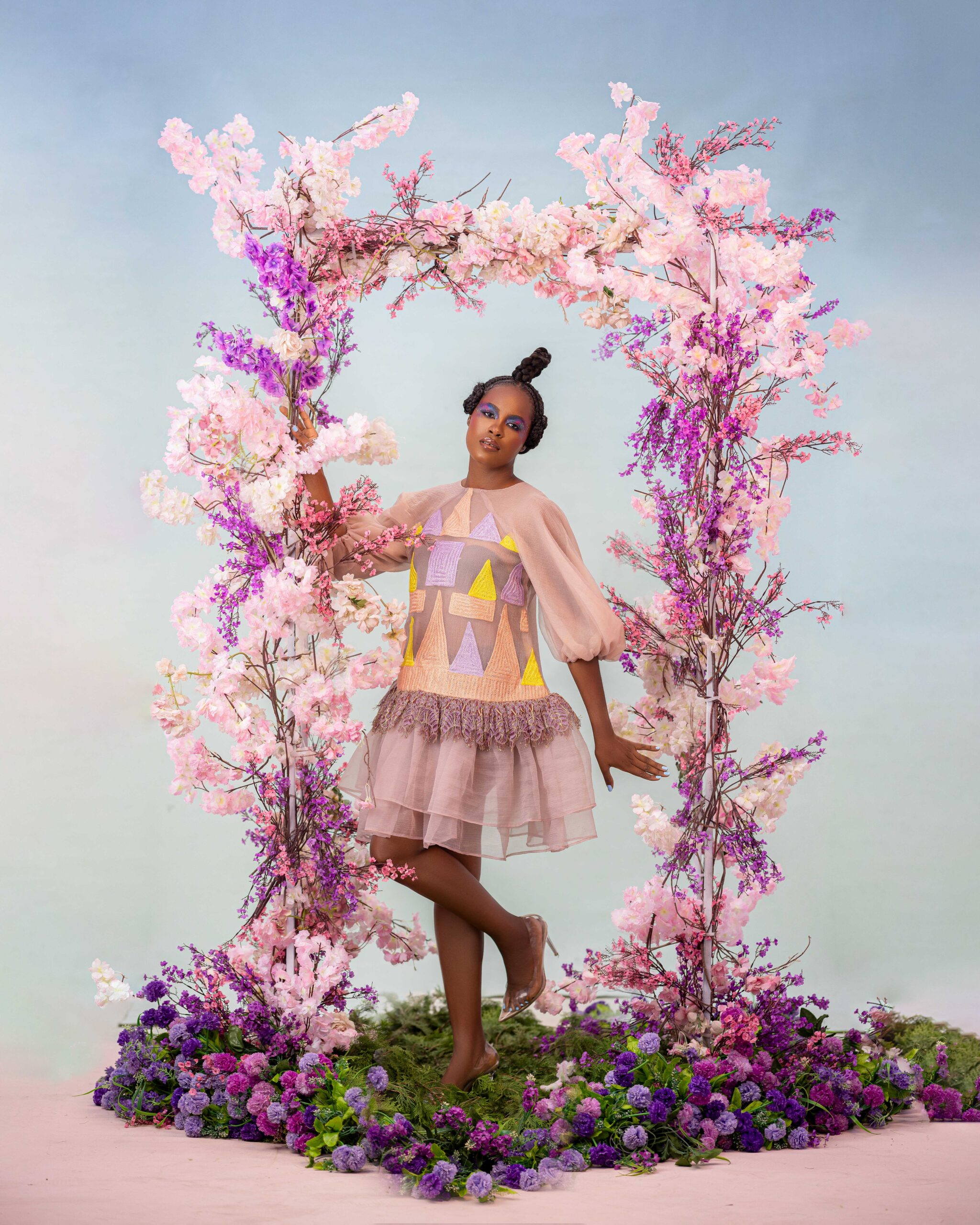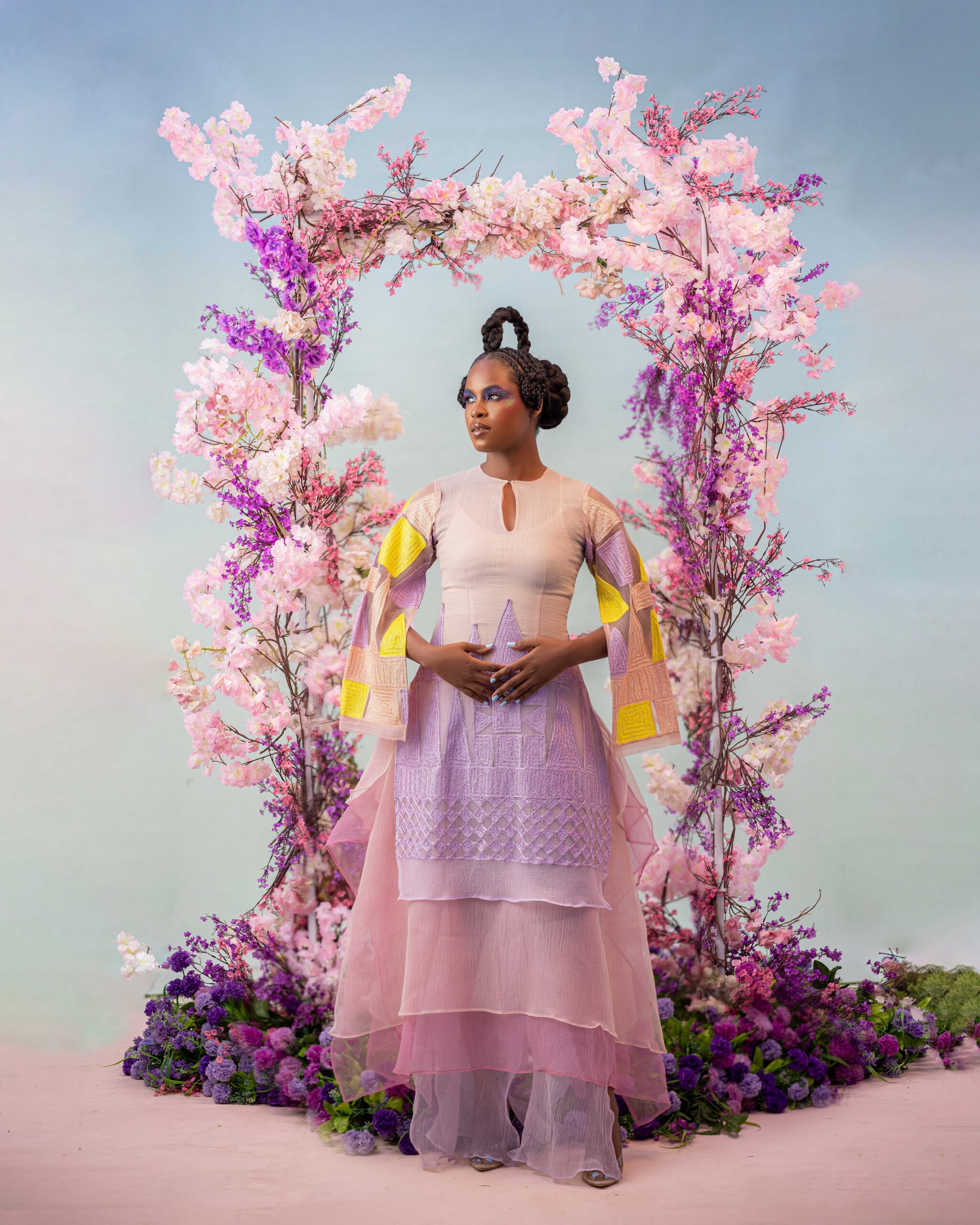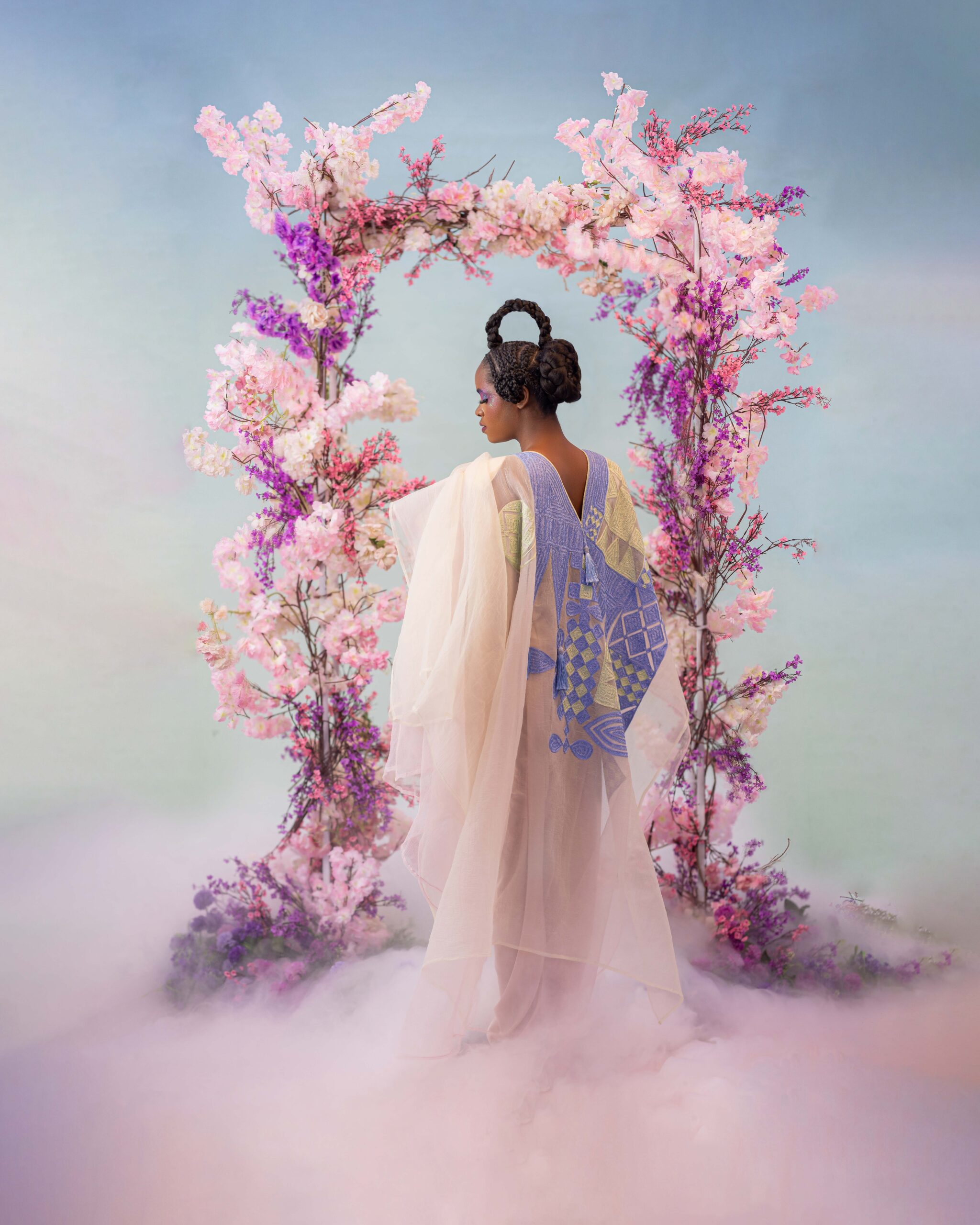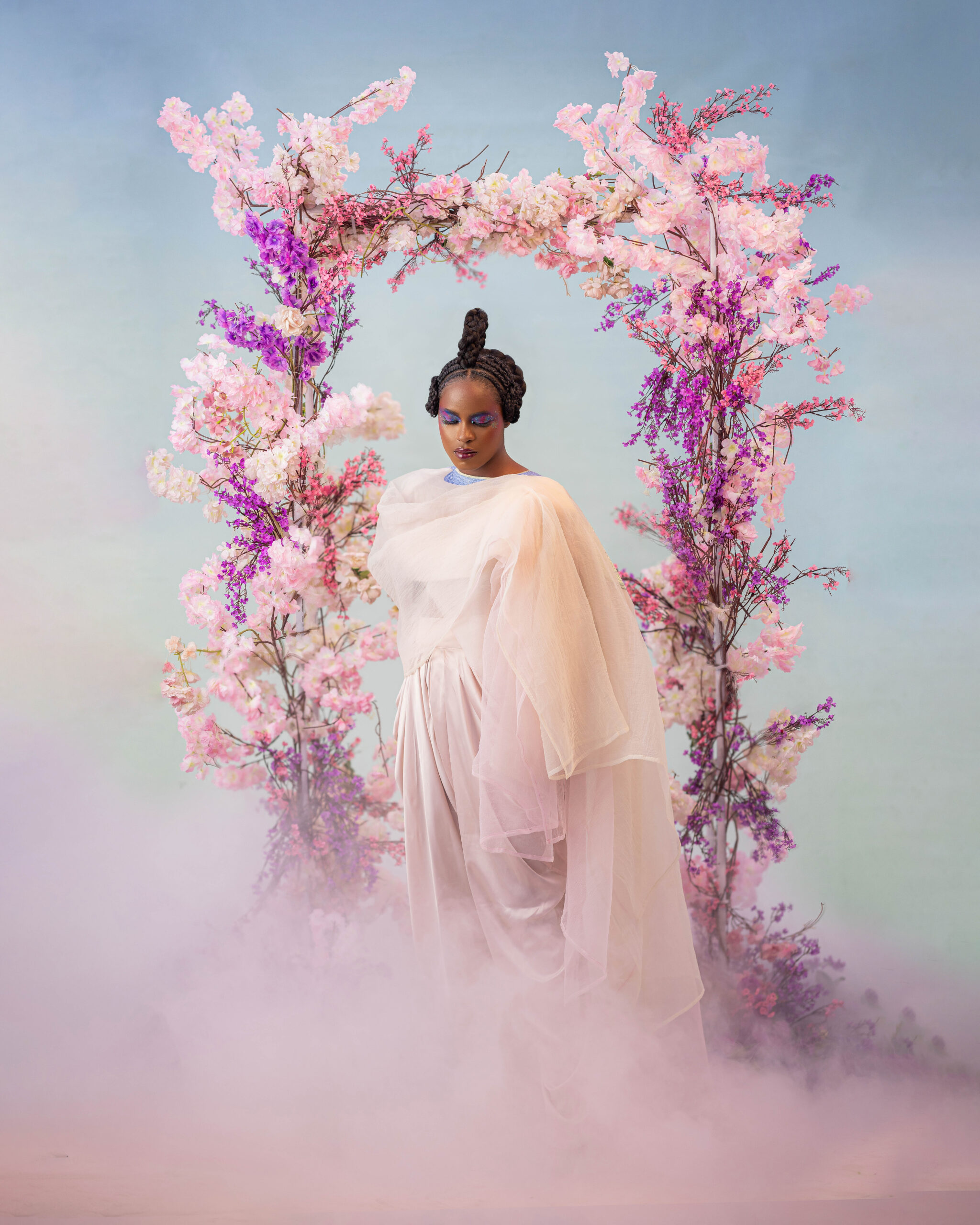Ejiro Amos Tafiri’s story is one of transformation, where the elegance of Nigerian heritage meets the demands of contemporary style. Her innovative reinterpretation of traditional garments, such as the iconic Oleku outfit, has captured the hearts of fashion enthusiasts worldwide. But Ejiro’s impact extends beyond the runway; it’s rooted in education. Her eponymous School of Design empowers emerging talents, shaping the future of fashion in Nigeria.
In this exclusive interview, we delve into the brilliant mind of Ejiro Amos Tafiri. From her early struggles to her meteoric rise, Ejiro Amos Tafiri sheds light on the essence of sustainable fashion, the importance of unity among designers, and the boundless potential of African design.
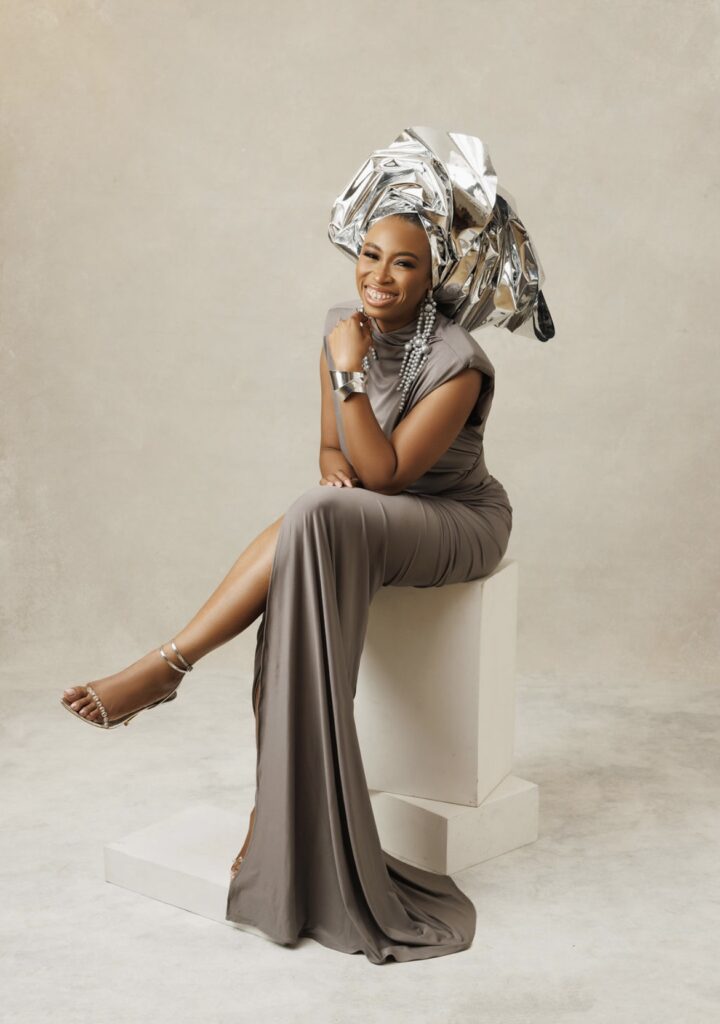
Ejiro Amos Tafiri’s Early Inspiration
FAB: Your Oleku outfit is a re-imagination of old style into a modern drape dress, and it has become a significant success for your brand. Could you walk us through the inspiration behind this creative work?
Ejiro Amos Tafiri: Growing up, my grandmother was a seamstress. When she came visiting, she would bring nicely woven Aso Oke iro and buba. She would make them for my mum and me. I have pictures of myself through the years. I always had iro and buba in my wardrobe up until secondary school. It was something my grandma typically gifted me.
By the time I got to secondary school, I had more responsibilities. Moving around in Iro and Buba became impractical. We were not as financially comfortable anymore; we didn’t have a car, so I had to start taking public transportation to places like church. It was cumbersome to wear Iro and Buba to church. Fast forward to attending and graduating from art school; I had the same experience. I loved Iro and Buba. I don’t know why, but I loved it. Maybe it was because I could wear it, and my dad would wear native attire, and I’d feel like my dad’s little wife. I am the only girl, and my mum always worked in different locations because of her job with immigration.
When I started working, I realised that I wasn’t able to wear the outfit I loved so much anymore. I started to think of ways to make it more convenient. I felt that I could make Iro and Buba into something less cumbersome. We had heavy laces and aso oke back in the day. Iro and buba were like a sport; wearing them required preparation, like adding an extra rope at the waist to prevent it from falling. I was thinking about ways to make it lighter, more functional, and fit into my lifestyle at the time. I was a young girl, trying to make a way for myself in the world. I was looking into how to make iro and buba easier for me, which would make sense.
I love drapery. That was my unique superpower right from school. It was something I just loved. I typically worked with lightweight silhouette fabrics. I thought of making it in chiffon and silk. I thought of making it into a dress that I could sell to anyone, including someone who isn’t Nigerian or Yoruba, in a way that they wouldn’t know I had introduced them to wearing a traditional Nigerian dress. Silk, for example, is a traditional British attire, and for the Japanese, it’s the kimono. The whole world wears their traditional outfits, so why can’t we export our culture to the world? This was my thought. I draped it, sewed it down, and tried to sell it.
For the first three months, not one piece moved. Then they told me to remove it from the rack. I was very convinced that it was something unique and that it was supposed to make sense. So, I simplified it. I had put a zipper in and sewn down the drape. I realised that part of the joy of iro and buba is having to wear and tie it yourself. I removed the zipper and let the drapes be, then I put them in my collection for the 2011 Lagos Fashion Week. When I took it for fitting, it was a hit, from the models to the stylist. I started getting orders. By the time it hits the runway, the rest, they say, is history. It went viral.
FAB: Your brand has expanded to include the Ejiro Amos Tafiri School of Design. What motivated you to establish this educational institution, and what role does it play in shaping the future of fashion in Nigeria?
Ejiro Amos Tafiri: The school of design came about because, with the success we had within the first five years, we had a multitude of interns applying to intern at Ejiro Amos Tafiri. Everyone wanted to know how I did it. At the time when I entered the scene, becoming a popular designer was almost reserved for socialites or the affluent. To be recognised at that level, you had to either have wealthy parents or marry into the circle.
They wanted to know how I went from just working in the industry, studying fashion locally, to reaching such heights. Many people were curious. I decided to create a curriculum to share this knowledge. That was the genesis of the school of design. I realised there was a lack of guidance in areas such as business, branding, marketing, and positioning. So, I set out to establish a school of design, not just a fashion school. The common name for most private fashion education centres is “fashion school.” I wanted it to focus on breeding designers, with an emphasis on design, textiles, and business. That’s how the Ejiro Amos Tafiri School of Design was born.
Building a Brand from the Ground Up
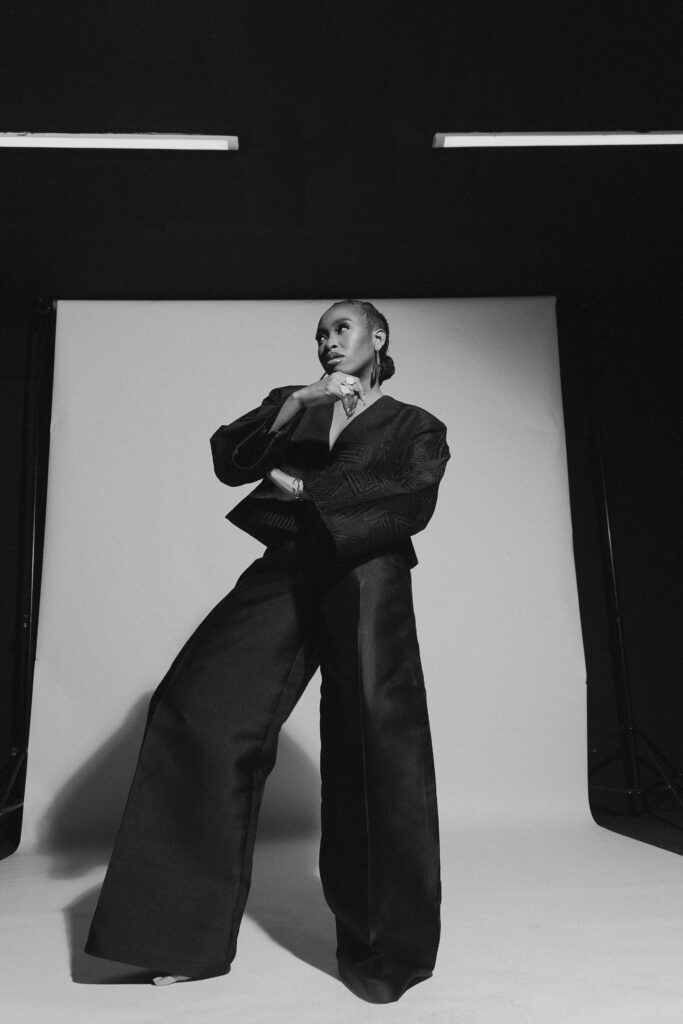
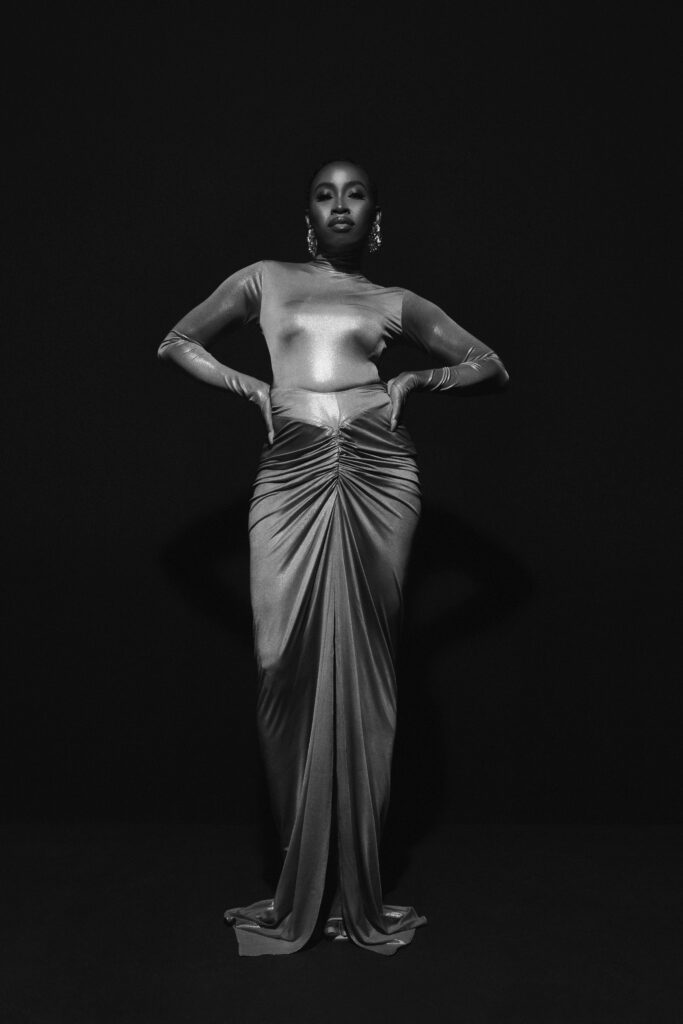
FAB: Indulge us, how did you do it, really? You mentioned you’re not from old money.
Ejiro Amos Tafiri: I wasn’t from a wealthy background. Growing up, there was a point when my dad lost everything we had. My university education onwards was a process of bootstrapping—making things work with what I had. I was eager to enter the industry, but I firmly believed in gaining the necessary education first. Just like you can’t become a doctor without studying medicine, I don’t think you should enter the fashion industry without proper training. Otherwise, you’ll end up spending your initial years paying to learn on the job.
I had a solid education on one hand, and I worked in the industry, gaining invaluable experience. I worked in three different fashion organisations and climbed the ranks. This gave me insider knowledge of how things worked. I studied the brands I looked up to, analyzed their strategies, products, and branding. When I felt I had reached the pinnacle of my career within an organisation and was seeking a new challenge, I decided to establish my brand, Ejiro Amos Tafiri.
Starting with my brand, I evaluated my strengths. I had a network of people who could assist with my branding. My background in art school provided me with a team of creatives and artists for support. In terms of industry knowledge, I had worked as a lead designer for top fashion houses, understanding how designs transitioned from concepts to customers’ wardrobes, and how to sell them. Although I lacked the infrastructure, I had the knowledge and the gift of people.
My first shop was actually my previous workplace. They had shifted from retailing clothes to interior design but retained their retail section for garments. Unexpectedly, my former boss contacted me one day and asked what I was doing. She wanted me to take charge of that department, but I informed her I was already running my brand. She then offered me a space to display my products. I quickly put together a lookbook and presented it to her. It passed through various levels of approval, leading to my first retail space.
I didn’t stop there; I continued searching for retail spaces. I introduced my lookbook to different boutiques, securing contracts with Green Velvet and others. Within a year or two, I had retail stores where I could sell my creations. I also took on bespoke work and organised exhibitions for public relations. I made sure to excel in everything I did.
I believe in meticulous planning and research. I didn’t assume anything; instead, I thoroughly researched and attended numerous exhibitions as a guest, observing what others were doing. I sought to differentiate myself by providing something unique. This involved constantly staying informed, browsing the internet, and studying the competition. I wrote detailed business plans and benchmarked them against successful brands like Tiffany Amber and Lanre Dasilva. I monitored international brands like Matthew Williamson and Alexander McQueen to stay ahead. I invested hours daily making notes, making adjustments to my plans, documenting everything, and meticulously executing my strategies.
Within a year, I had participated in two international shows, featured in several magazines, and my brand was gaining recognition. Tenacity, diligence, preparation, and versatility were my guiding principles. I didn’t confine myself to a single direction; instead, I engaged in various aspects of business, including competitions and pitches. I ensured I was well-prepared before opportunities presented themselves. This comprehensive approach contributed to the brand’s growth and success.
FAB: How can more synergy between designers, artisans, and craftsmen further elevate the Nigerian fashion industry as a whole?
Ejiro Amos Tafiri: Collaboration is something I wholeheartedly embrace. However, in the fashion industry, it’s not very common among designers. We frequently collaborate with artists, artisans, and textile makers, but collaborating with fellow designers isn’t as prevalent. I believe we should change this mindset. Designers, whether five years younger or ten years older, possess unique experiences and knowledge. By working together, we can create something extraordinary. It could become a unique strength for us as Africans. To achieve this, we must dispel the notion that we don’t get along or that we’re constantly competing against each other. Instead, we should collaborate to achieve remarkable outcomes.
Sustainability is in Our DNA as Africans
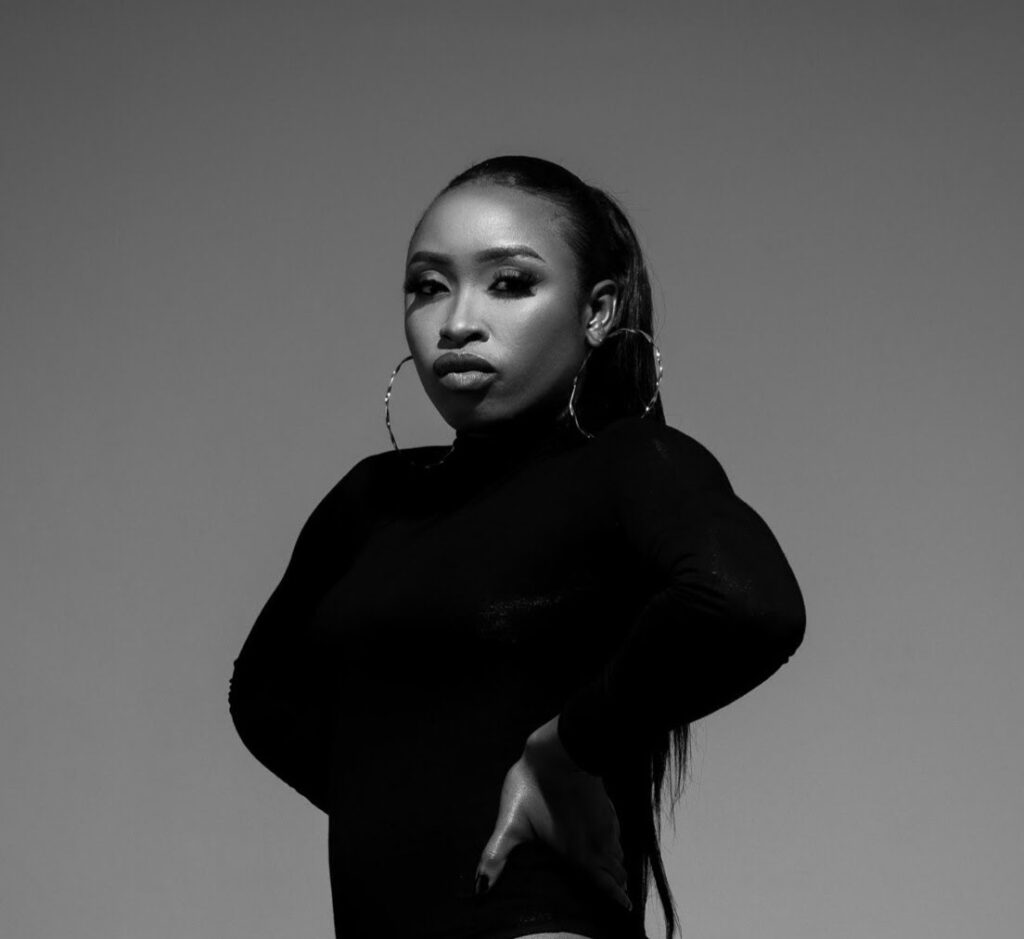
FAB: Sustainability is increasingly central to global fashion discussions. How do you believe Nigerian designers can lead sustainable practices and set an example for the industry?
Ejiro Amos Tafiri: As Africans, sustainability has always been ingrained in our culture. We’ve practiced sustainability for generations. Perhaps it’s because our fashion industry hasn’t reached full maturity that we haven’t fully showcased these practices. However, we’ve always avoided wastage and cherished our clothing, passing them down and repurposing them. These practices are part of our identity, and as designers, we’ve always repurposed and reused materials in our workshops.
I believe we should celebrate our heritage as a sustainable culture. Instead of merely adopting international practices, we should merge our traditional practices with modern, global approaches. We should examine how the tailors, seamstresses, and fashion industry developed within Africa and retain the aspects that made it unique. By blending these traditional strengths with international practices, we can excel in sustainability.
We shouldn’t contribute to the environmental damage caused by the fashion industry. Rather, we can lead in sustainable practices by preserving our culture of reusing and repurposing while embracing modern, eco-friendly techniques. We need to own our story, engage in more conversations, and truly believe in ourselves.
FAB: Let’s discuss COVID-19. How did your brand adapt to the challenges posed by the pandemic, and what lessons were learned?
Ejiro Amos Tafiri: COVID-19 brought both challenges and opportunities. During the pandemic, various organisations offered support to the fashion industry by organising online meetings and teaching various skills, such as photography and social media, which became crucial during this period. COVID-19 fundamentally changed the fashion landscape by significantly reducing foot traffic in stores. While sales remained stable, the number of visitors decreased as more people opted for online shopping. Therefore, we had to ensure our online presence was top-notch. This required maintaining accurate size guides and delivering high-quality products, as customers couldn’t physically examine them before purchase.
COVID-19 also prompted us to take a step back and reevaluate our brand. It allowed us to rethink our strategies and adapt to the changing environment. This period of reflection led to improvements in various aspects of our business. Ultimately, COVID-19, although challenging, was a blessing in disguise that encouraged us to delve deeper into our brand and connect more closely with our community.
Regarding the new variant, we’ve learned that the world has adapted and is less fearful. We’ve experienced a year of little to no in-store customers, and we’ve managed to stay afloat through phone lines and social media. People showed empathy by supporting businesses to help them survive. We’re now looking ahead with optimism, knowing that we can handle whatever comes our way.
The Role of Fashion Weeks in Promoting African Fashion
FAB: Nigeria hosts numerous fashion weeks and events. As a fashion innovator, what roles do you see these platforms playing in promoting local designers and fostering a sense of community within the industry?
Ejiro Amos Tafiri: Fashion weeks and events in Nigeria serve several essential functions. Firstly, they bring people together, allowing designers to connect with their colleagues, often within the same country or state, whom they might not see otherwise. These events enable an exchange of ideas and energy, fostering a sense of community within the industry.
Secondly, these platforms significantly promote local designers by investing time, energy, and resources into showcasing their work to a broader audience. The exposure generated through mainstream media and various promotional channels is invaluable. Designers are grateful for these opportunities as they help boost their visibility and recognition.
Fashion weeks also provide an opportunity for designers to meet potential collaborators, such as financial institutions or tech companies, who can offer innovative solutions that may revolutionise the industry. These interactions can lead to partnerships that benefit the fashion ecosystem as a whole.
However, while fashion weeks offer numerous benefits, not all brands need to participate. It’s essential to remember that not every brand requires the level of visibility these events provide. Participation should align with a brand’s goals and strategies. Some designers may find that their investment doesn’t immediately translate into sales. The return on investment often comes later through brand equity. Therefore, it’s crucial to view participation as a long-term strategy for positioning within the industry.
FAB: The returns aren’t always immediate?
Ejiro Amos Tafiri: No, they are not. The benefits of participating in fashion weeks may not manifest immediately in terms of increased sales. However, the exposure and brand recognition gained are essential for long-term success. It’s about brand positioning and equity rather than immediate financial returns.
FAB: How does your brand address the need for greater representation and diversity, both in design and on the runway?
Ejiro Amos Tafiri: Our brand is inclusive by design. We aim to make everyone feel comfortable and joyful through our products. Joy is a key word in everything we do. We want people to encounter the Amos Tafiri brand and experience joy.
If you look at our customer base, you’ll see diversity. We cater to both young and older customers, and our designs are inclusive of various sizes. I approach design from multiple angles, understanding that people’s style preferences vary. Our collections typically include a range of looks that appeal to different individuals, whether they prefer a tomboyish, conservative, or sexy style. Our goal is to ensure there’s something for everyone.
The Future of Nigerian Fashion
FAB: What do you envision as the next big step or innovation in the Nigerian fashion industry?
Ejiro Amos Tafiri: I see the Nigerian fashion industry continuing to grow and becoming the fashion capital of Africa, not only in terms of design but also in commerce. While we are already making strides in this direction, there is a need for greater professionalism and education.
Education is the key to bridging the gaps in our technical skills, business knowledge, branding, marketing, and positioning. We need more professionals who have dedicated time to learning and honing their craft. With the right education, we can take our industry to new heights.
I envision Nigerian designers selling their creations to the rest of the world, similar to how big international designers are imported. To achieve this, we must come together as a united force, with designers supporting one another and announcing our arrival on the global fashion stage. We shouldn’t wait for opportunities; instead, we should create them together.
FAB: Are there any exciting projects or milestones we can expect from your brand in the near future?
Ejiro Amos Tafiri: We’ve recently launched our foundation, which is focused on education and mentoring. We organised our first conference at Yaba College of Technology for the school of art and printing, specifically in the fashion sections. We are committed to investing in the future of the fashion industry by providing education and guidance. Our goal is to create a generation of fashion professionals who can compete on a global scale, maintaining professionalism and respect within our industry. Ultimately, we aim to foster growth, unity, and excellence in the Nigerian fashion industry.
#Fun Zone: FabFastFive
- FAB: Movie or Music
Ejiro: Both
- FAB: Fashion or Beauty
Ejiro: Beauty
- FAB: What’s the most exciting adventure you have ever been on?
Ejiro: Traveling the world with my daughter earlier in the year.
- FAB: What was your favourite game as a child?
Ejiro: Suwe
- FAB: What’s your favourite ice cream topping?
Ejiro: Coconut shavings
